The new Mitsubishi e-Evolution Concept will make its world debut later this month at the 45th Tokyo Motor Show.
Concept Car, Electric, News, Motorshow, Technology, SUV, Crossover
Concept Car, Electric, News, Motorshow, Technology, SUV, Crossover
The new Mitsubishi e-Evolution Concept will make its world debut later this month at the 45th Tokyo Motor Show.
Concept Car, Motorshow, Sports Car, News, Events
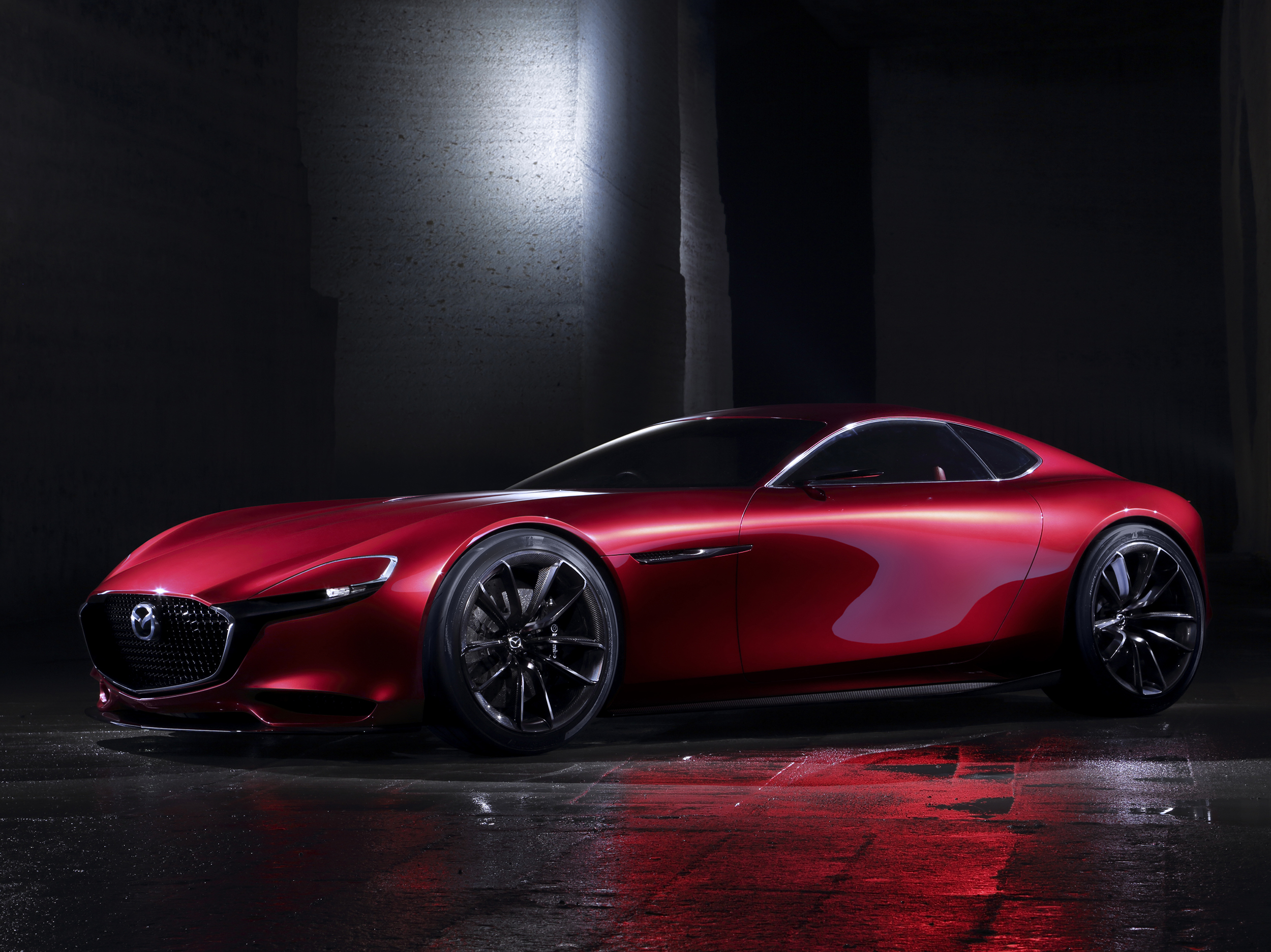
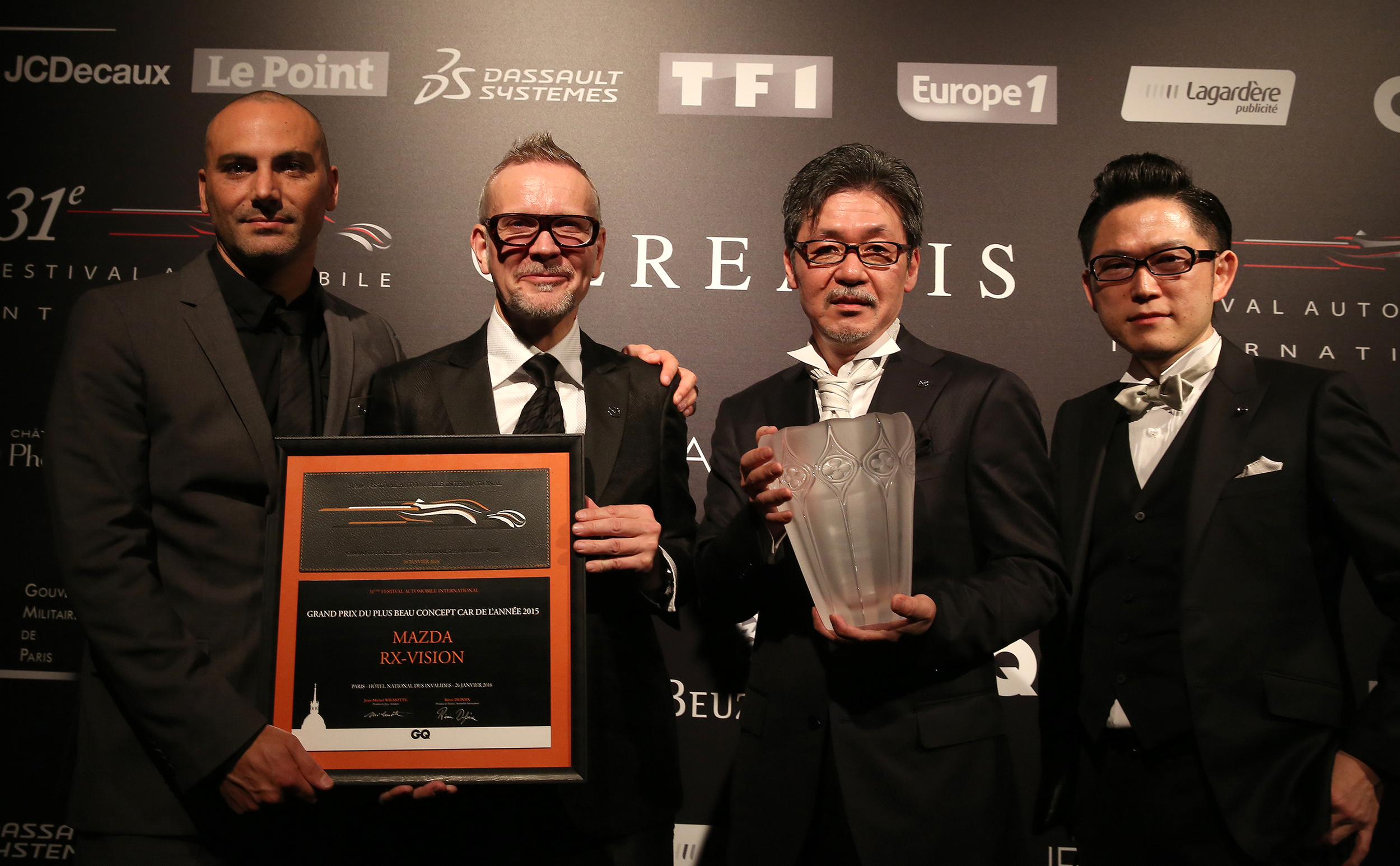
Mazda’s new sports car concept has won ‘Most Beautiful Concept Car of the Year’ at the Festival Automobile International.
First revealed at last year’s Tokyo Motor Show, the rotary-powered sports car concept features ’exquisitely proportioned dimensions and stunning lines’ says Mazda.
The concept award goes to the vehicle that best embodies pure design creativity and emerging trends. Representing a ‘vision’ of the future, the concept continue’s Mazda’s ‘KODO: Soul of Motion’ design philosophy, with smooth-flowing proportions hinting at the performance of the car while paying tribute to Mazda’s heritage of front engine, rear-wheel drive sports cars. The rotary powertrain’s compactness makes characteristics like the low bonnet possible.
Nominated alongside the Bentley Exp10 Speed 6, Peugeot Fractal and Porsche Mission E at this year’s Festival Automobile International, Mazda’s international design chief, Ikuo Maeda accepted the award Tuesday evening together with Kevin Rice, Mazda’s European design director, Julien Montousse, his counterpart at Mazda North America, and Mazda designer Norihito Iwao.
The RX-VISION will be on display at the Festival Automobile International’s concept car exhibition in Paris at the Hotel National des Invalides until 31 January.

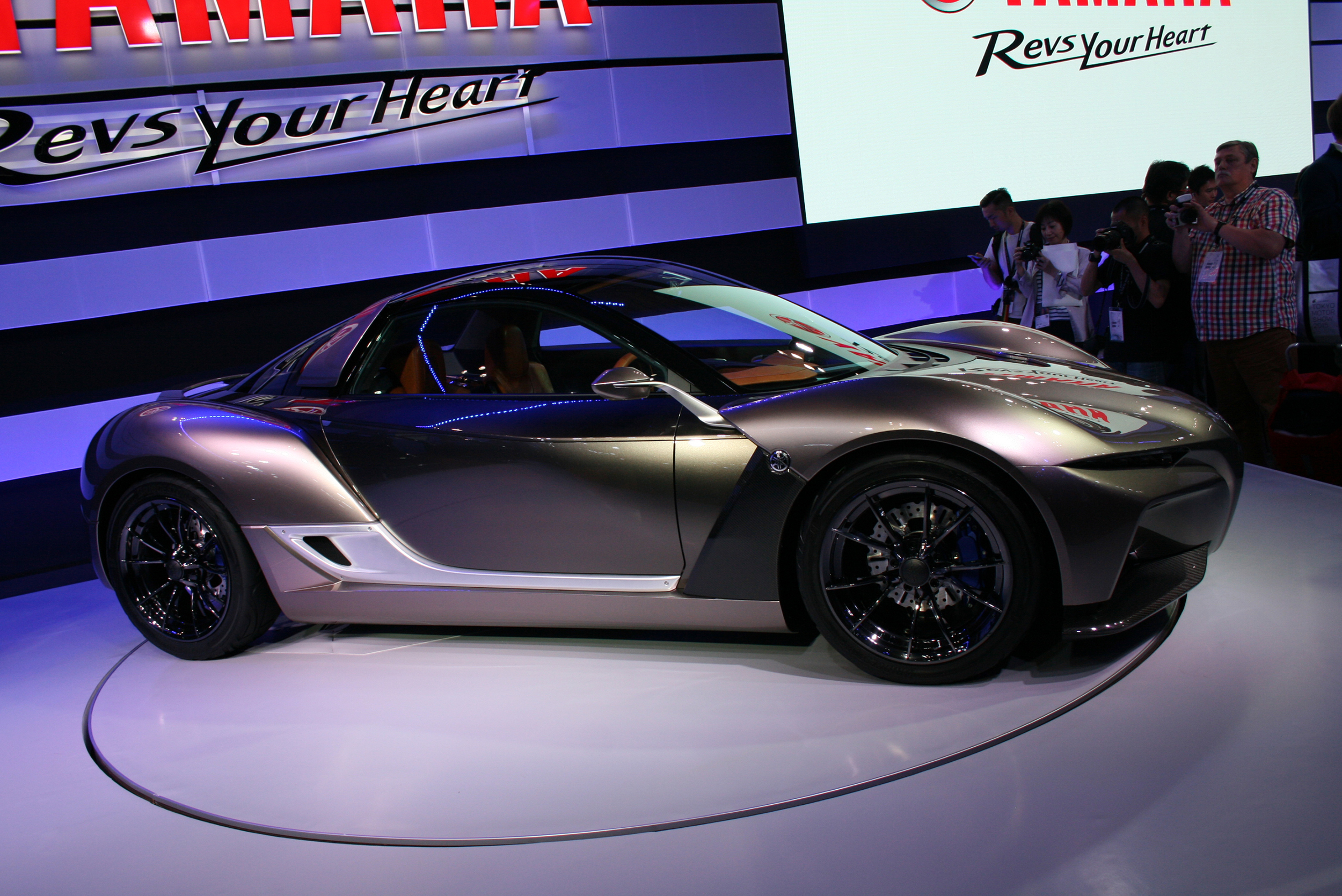
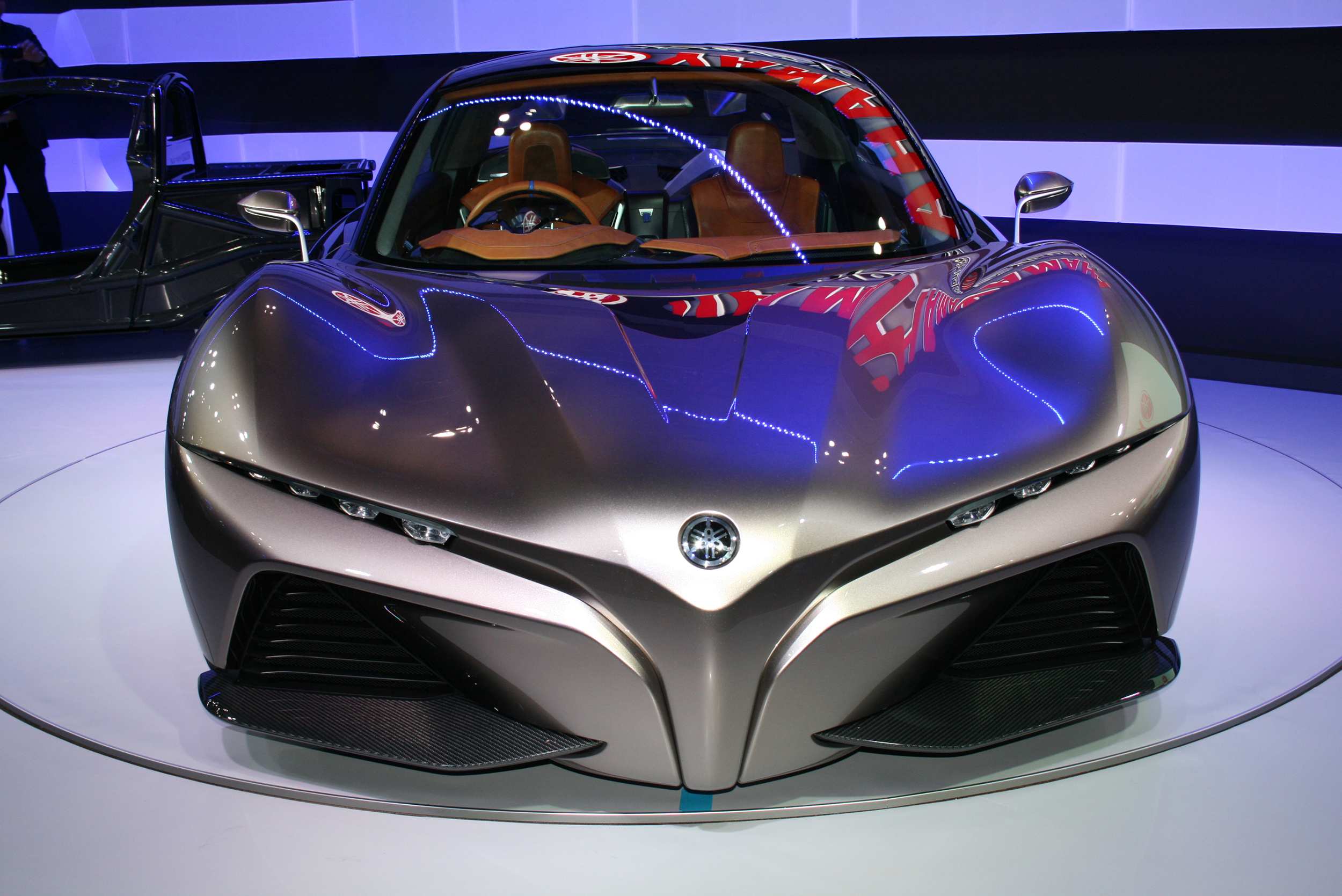
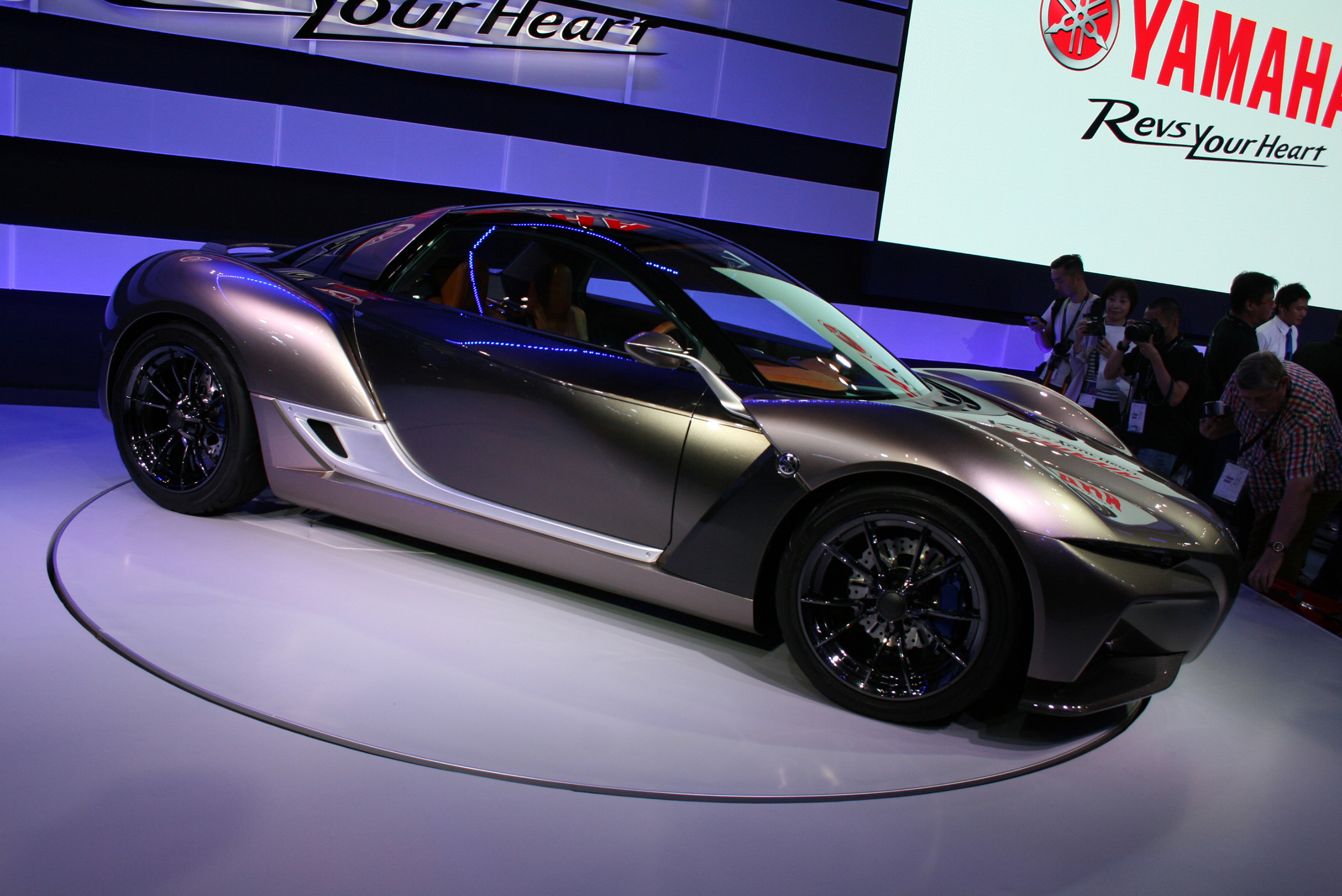
Called the Sports Ride Concept, Yamaha has released few details about the new car but has labeled it a 'Special exhibit/Experimental vehicle'.
The concept employs the iStream design process for the car's underpinnings, developed by McLaren F1 designer Gordon Murray Design Limited, to produce a lightweight, high-rigidity vehicle structures rooted in Formula One technology.
This design concept takes a 'uniquely Yamaha' approach by putting the 'involved and active' feeling of riding a motorcycle, or "Live and Ride" into a vehicle with quintessential sports car proportions for a driver-machine relationship close in feeling to the world of motorcycle riding.
Yamaha says it devoted much attention to the high-quality details and was inspired by the artistic style of 'Elementarism' when designing the concept.
No word yet on whether the 2-seater will go into production.
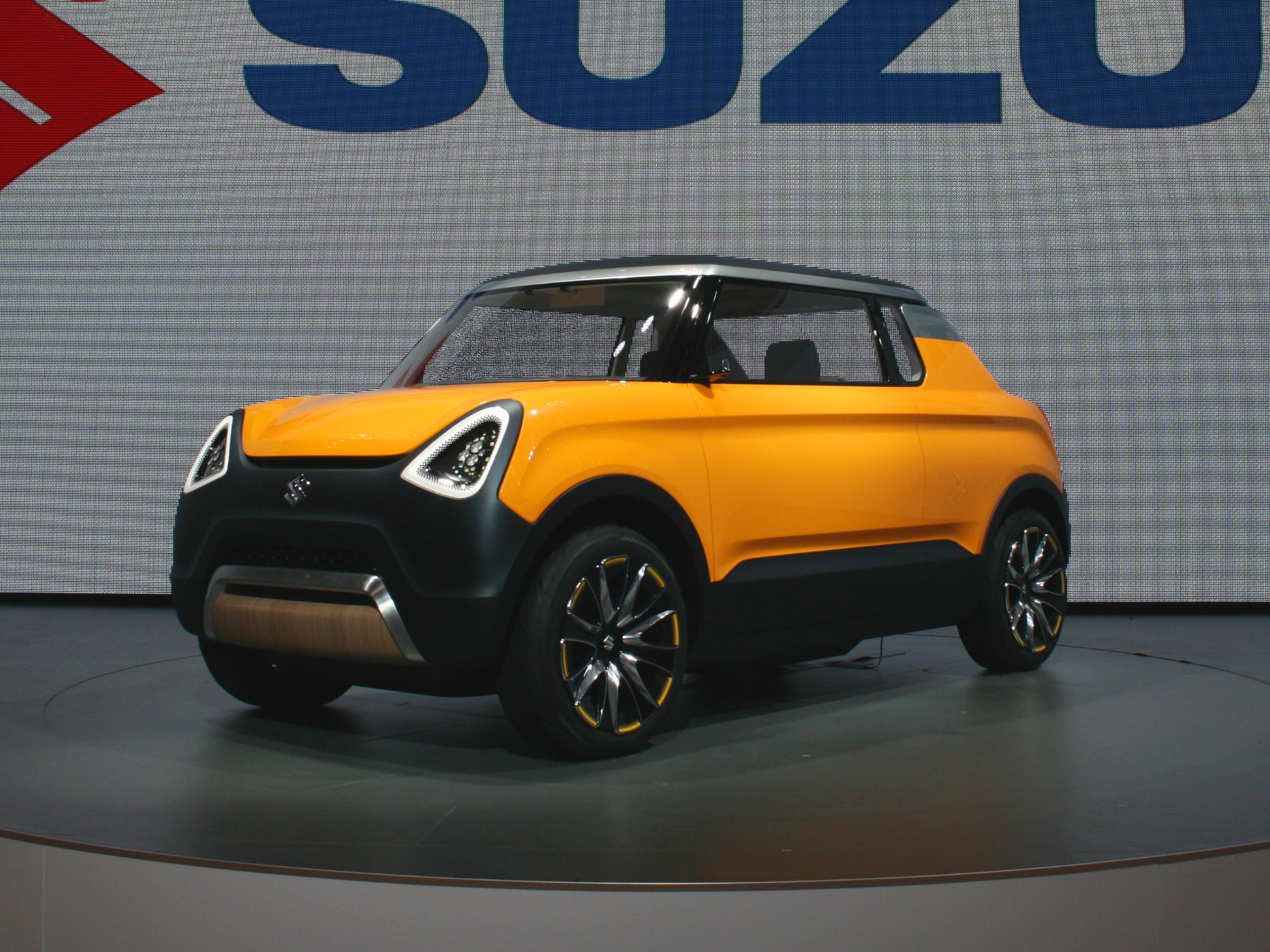
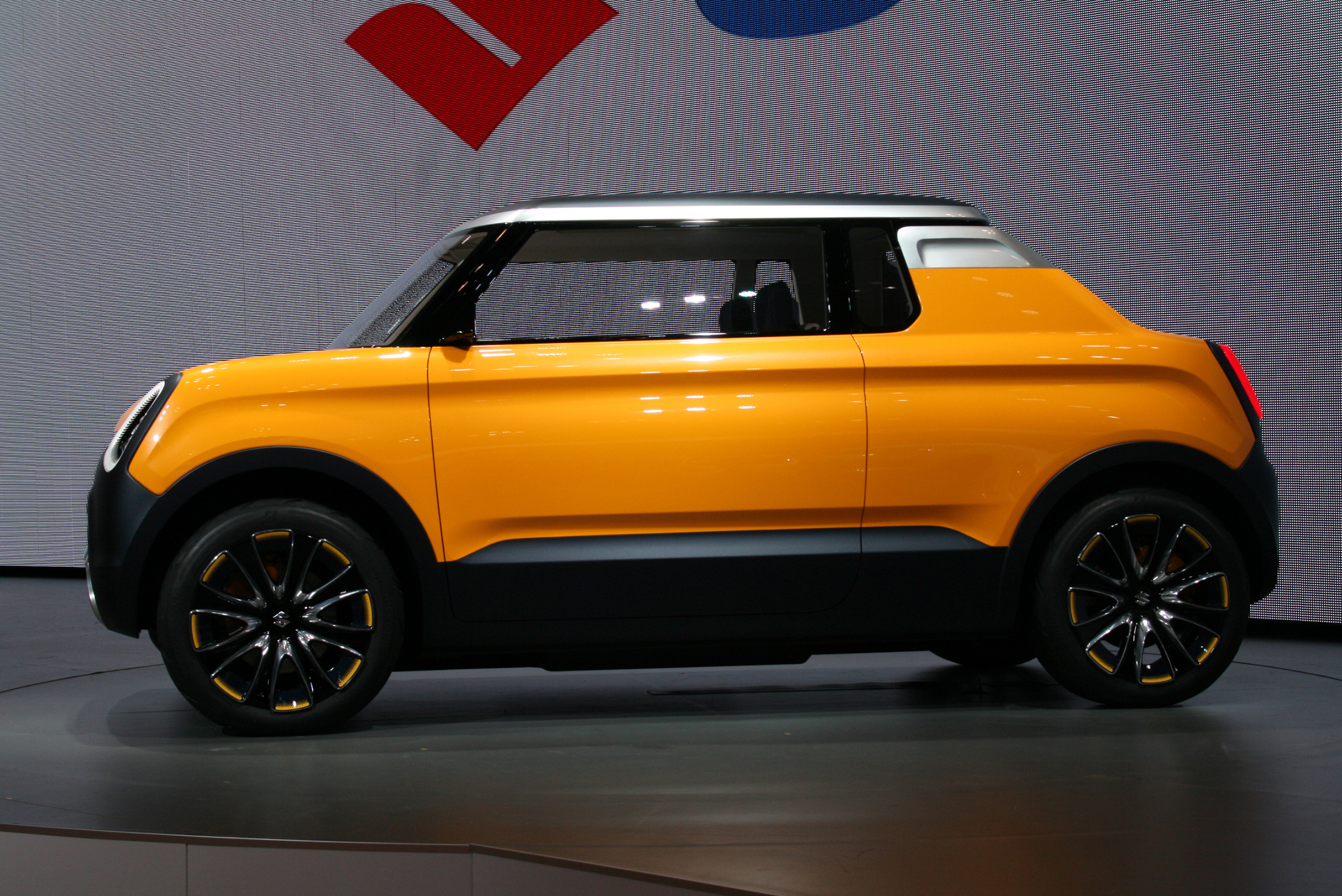
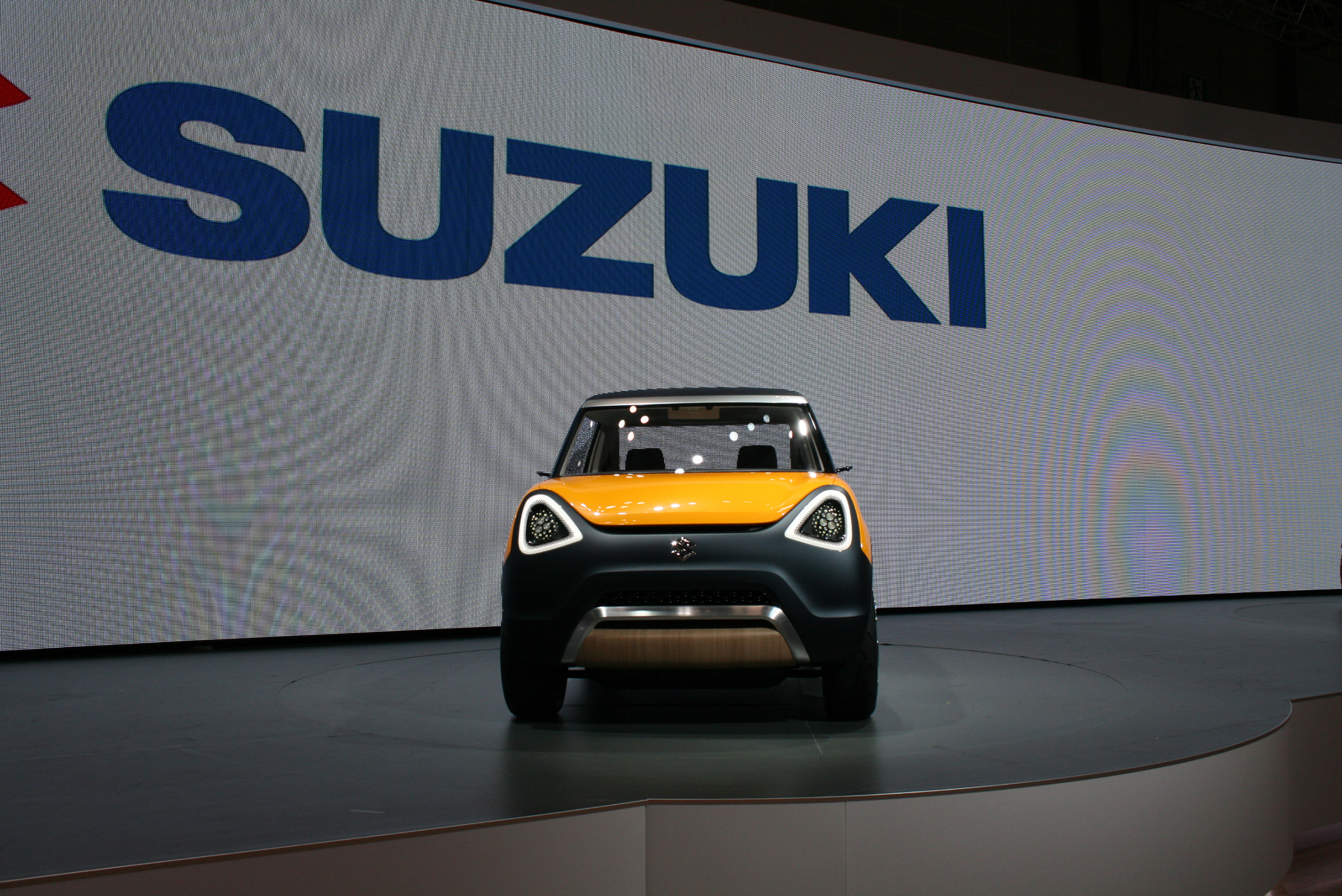
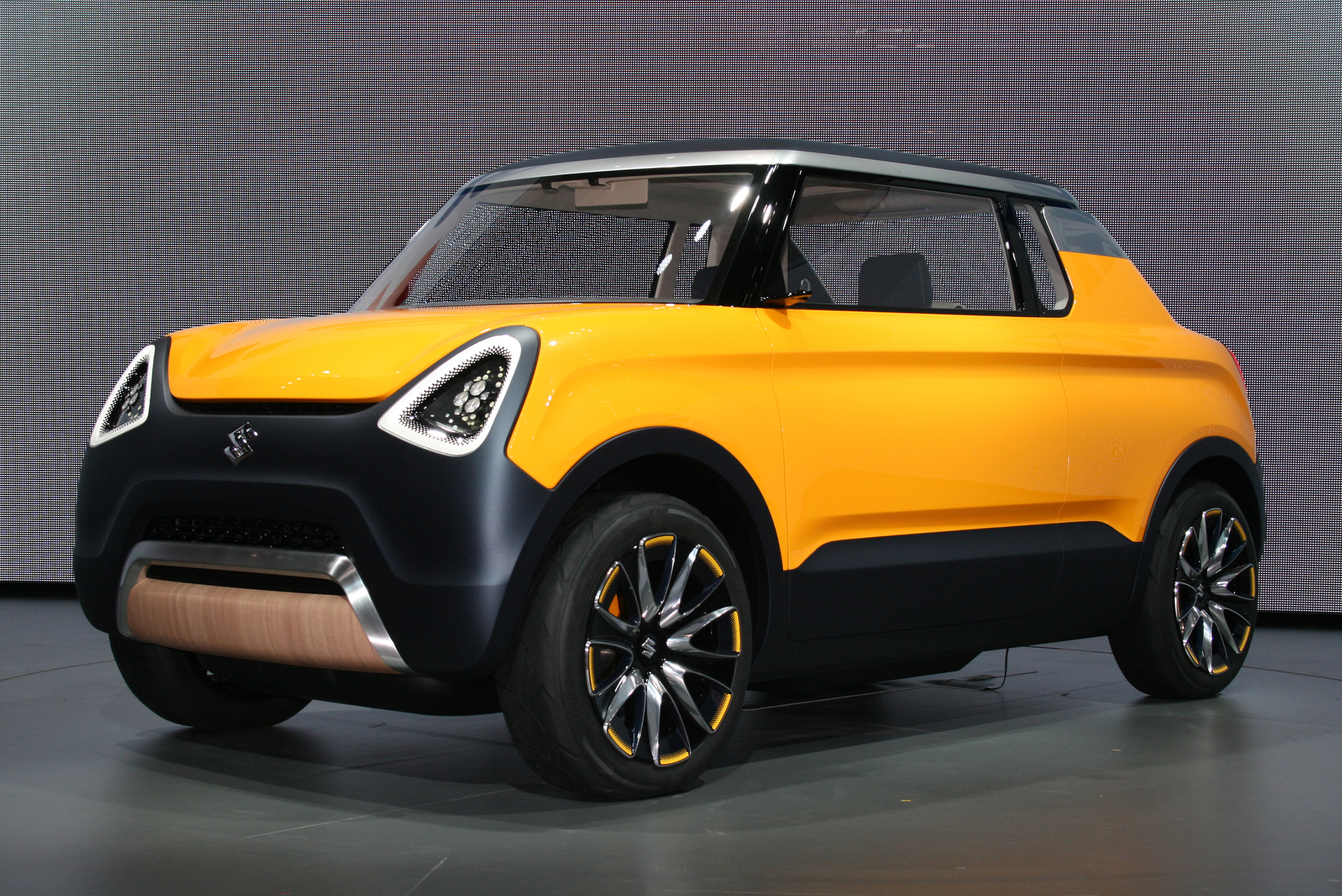
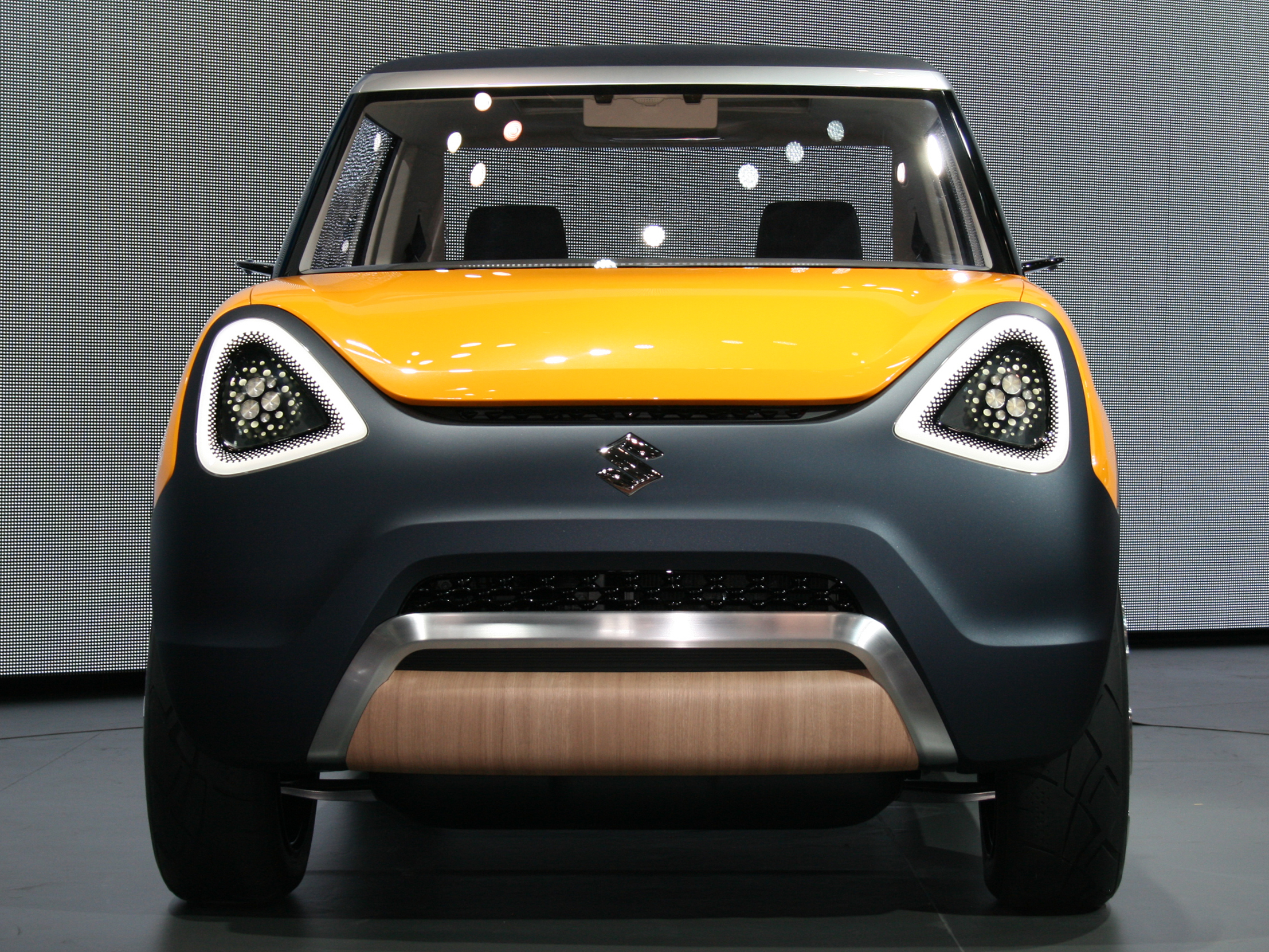
The Mighty Deck, which does seem to resemble a mighty duck, offers 'new kinds' of fun in the minicar segment according to the Japanese manufacturer.
The theme for the Suzuki's stand is "SUZUKI NEXT 100" as the brand will be celebrating its 100th anniversary in 2020. The exhibits represent proposals for products and technologies that give a sense of the company's preparations for ongoing success in the next 100 years, with a range of concept models will show how Suzuki can deliver 'wonder and enjoyment to drivers and riders'.
The Mighty Deck is described as a fun-oriented minicar with a canvas top for an open load deck that can be repositioned for diverse purposes, adding extra utility. The deck opens and closes automatically.
Suzuki says the "urban/outdoor" concept is embodied by features that 'free people to move between contrasting situations and mind sets: city and nature; home and away; work and leisure or relaxed and playful'.
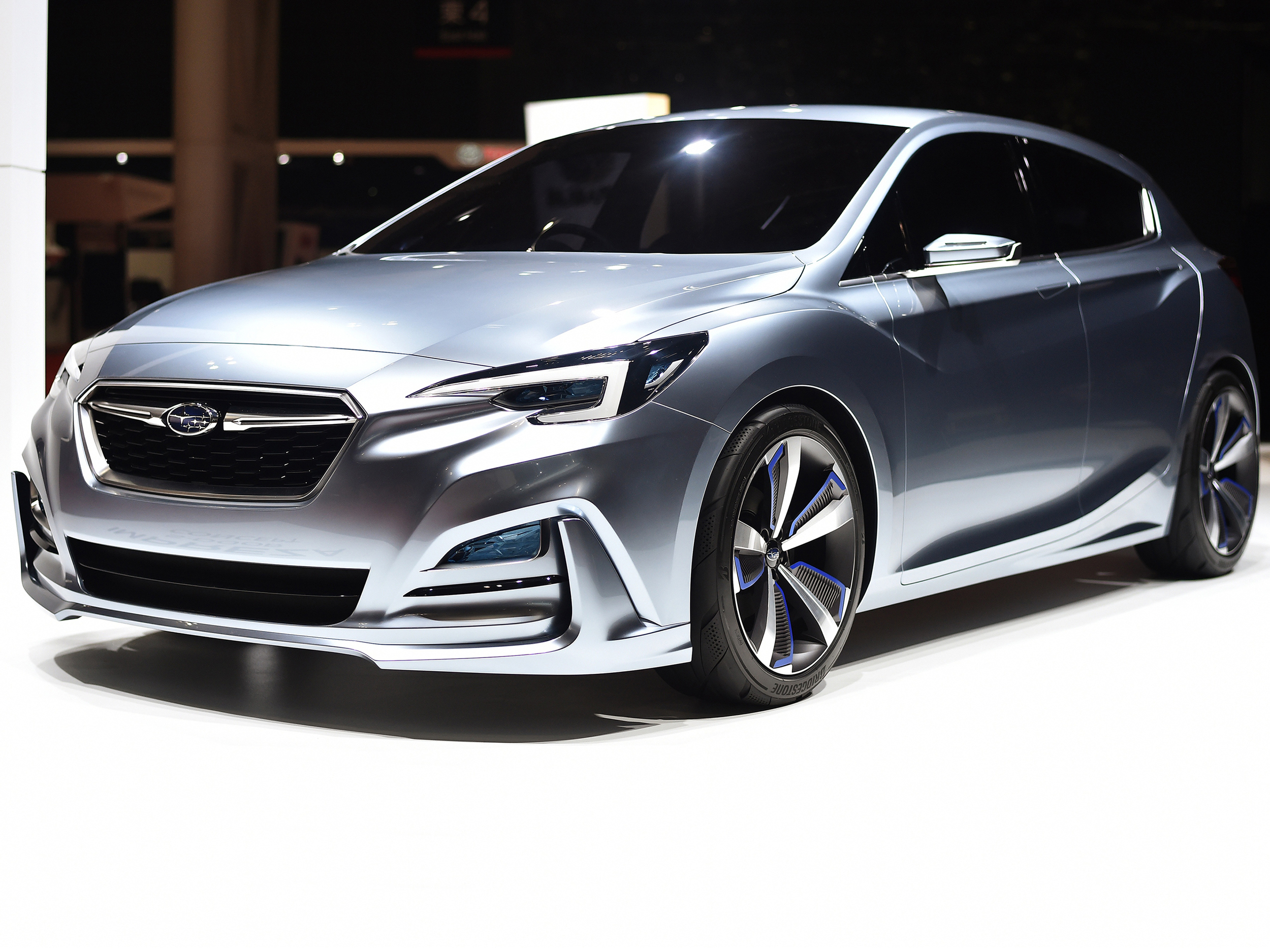
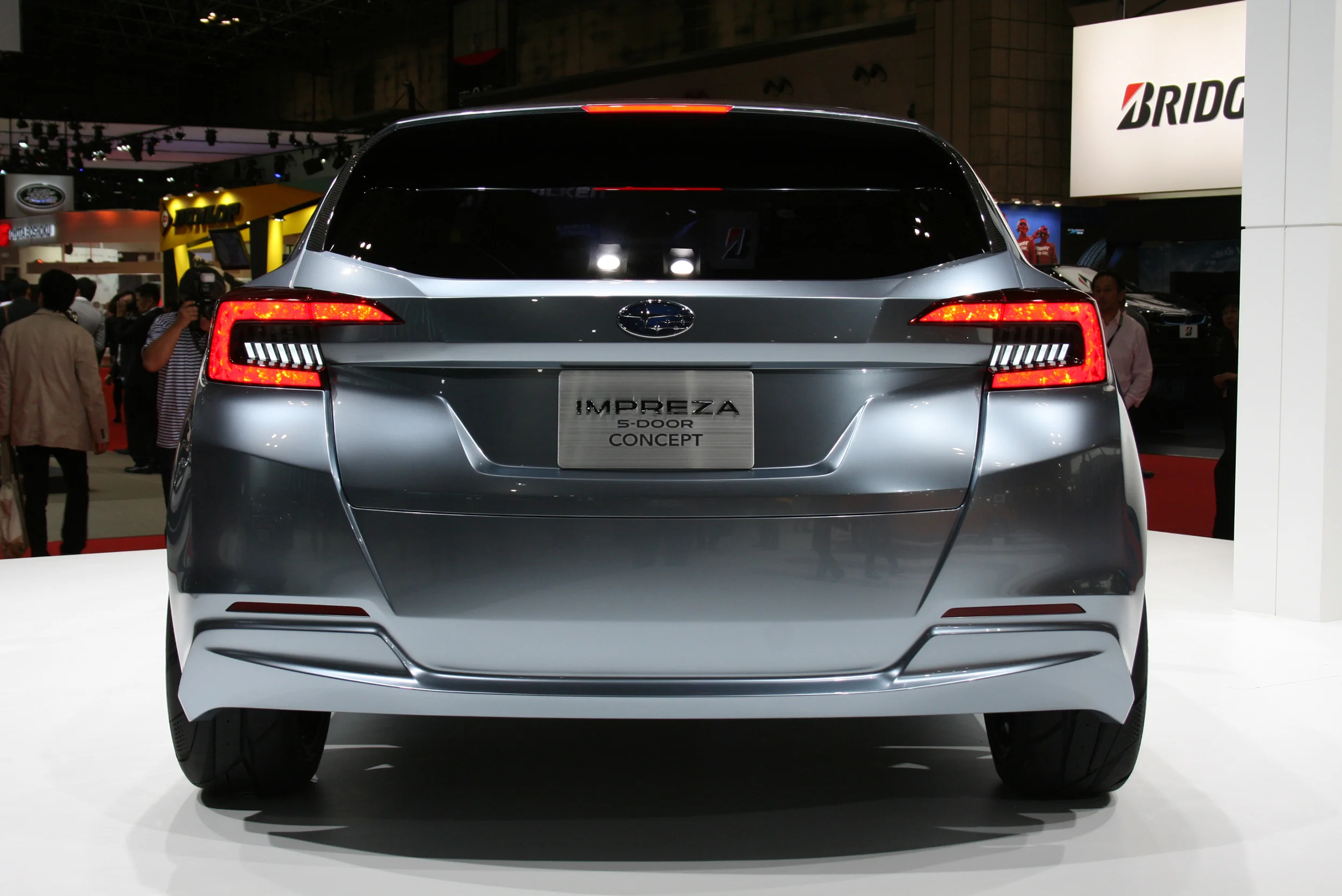

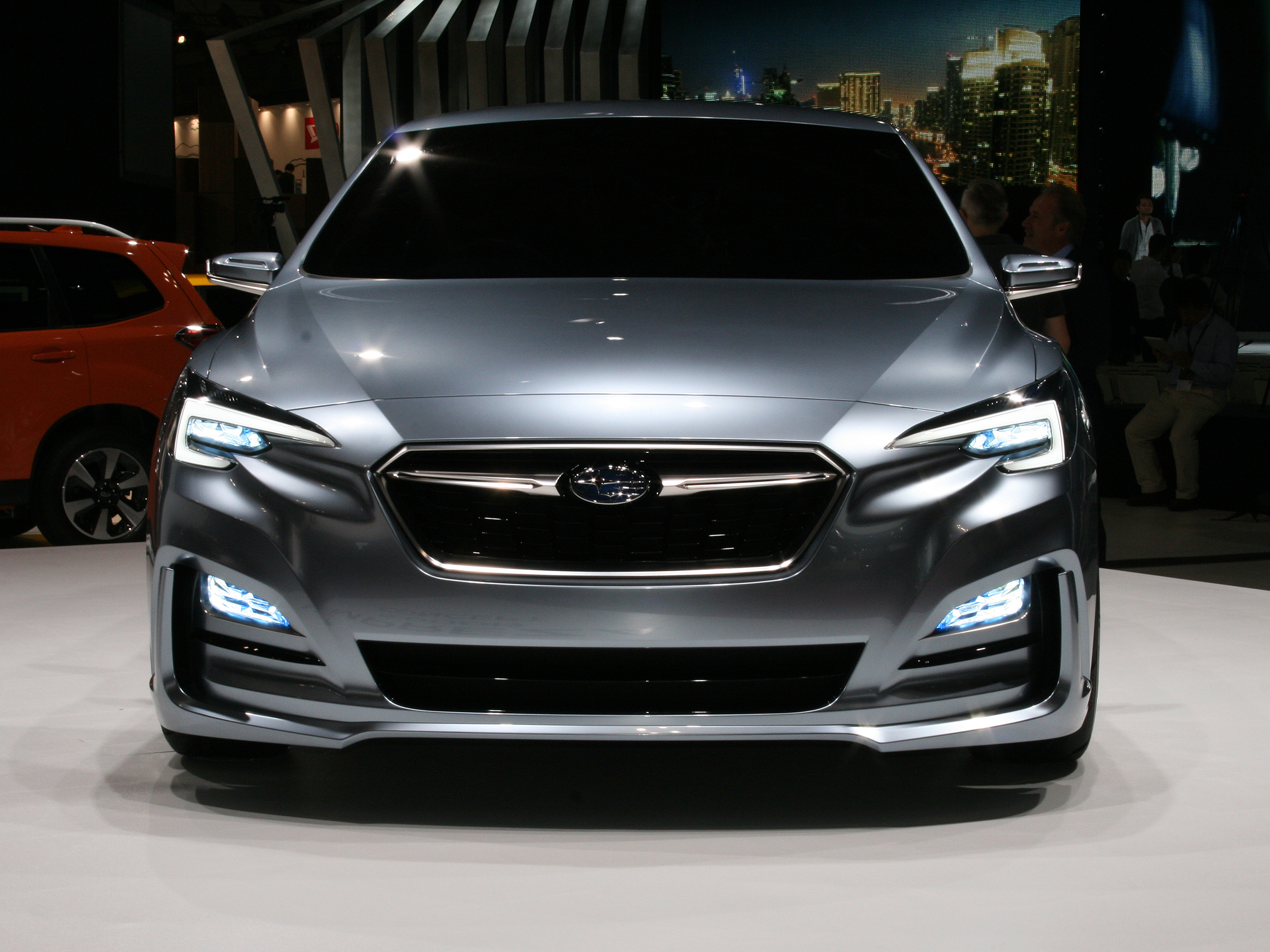
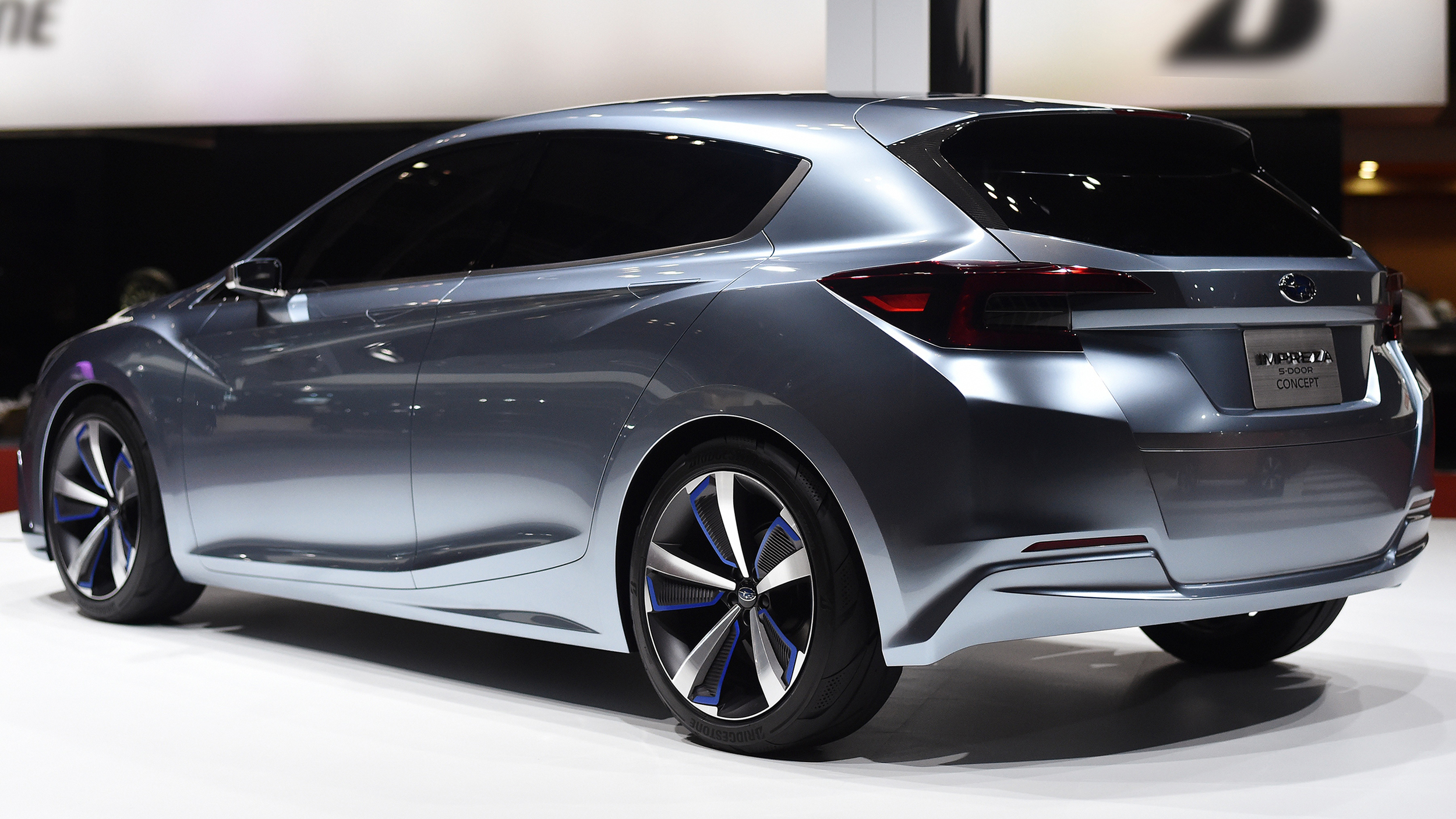
Revealed at the Tokyo Motor Show, the concept achieves a higher level of aerodynamic performance 'while blending form with function' resulting in modern styling, which hints at how future versions of the car will look.
The design study has a wide and low stance, hinting at the car's innate stability, while the hexagonal grille develops Subaru's visual identity further. The front combination lamps display a 'bold reinterpretation' of Subaru's "hawk-eye" headlights.
The Impreza 5-door Concept boasts a dynamic look and stance, a result of strong, clean character lines extending from the front wheel arch to the rear shoulders as well as offering all the functionality 'essential to Subaru and its customers'. The front and rear combination lights have been designed to 'express a powerful, modern look', with the taut lines and compact silhouette of the car further enhancing the concept's sportiness and stability, says Subaru.
The design not only hints at the styling of the next-generation Impreza but Subaru's future models as a whole.
Saloon, Hydrogen Fuel Cell Car, News

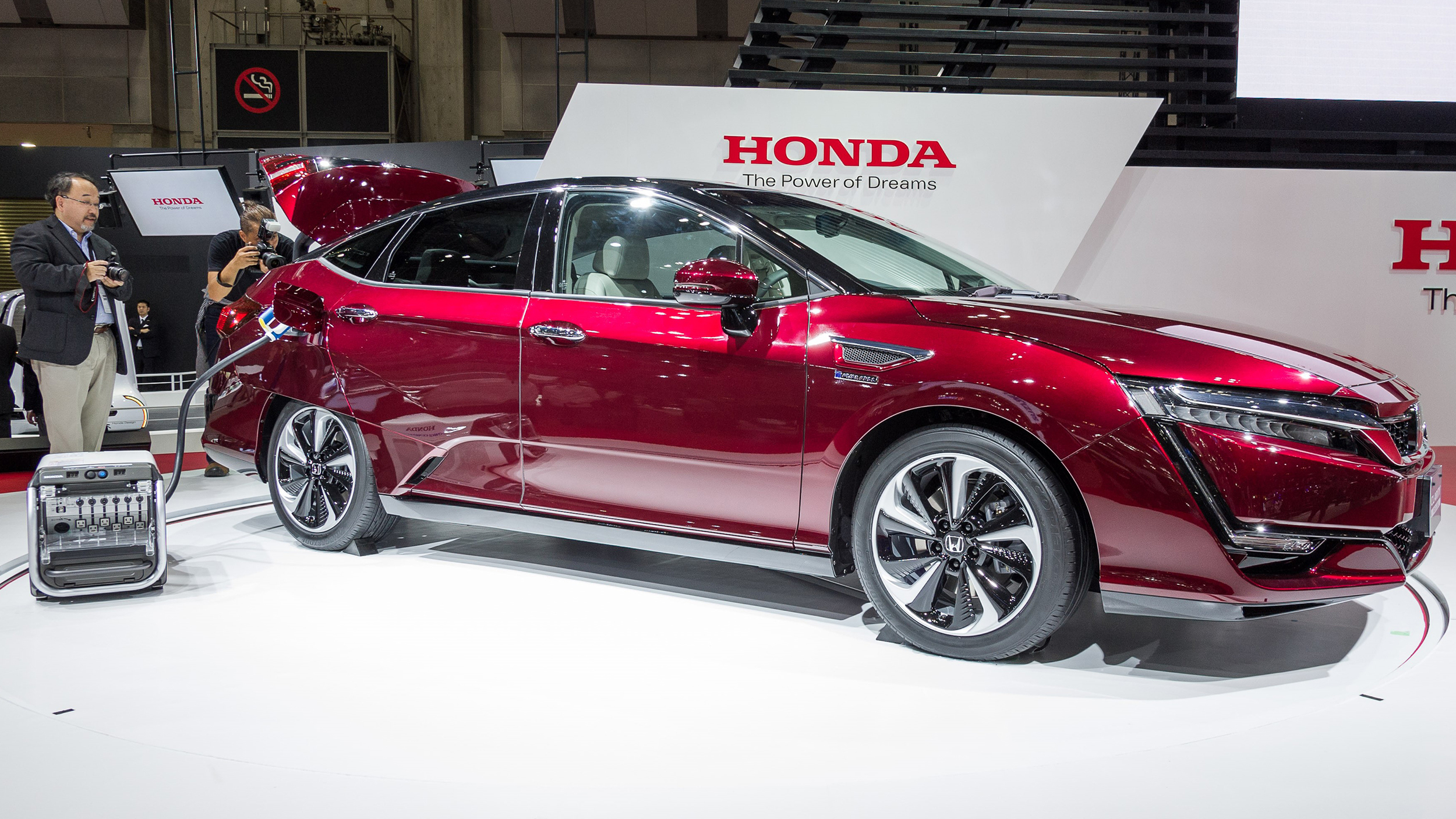

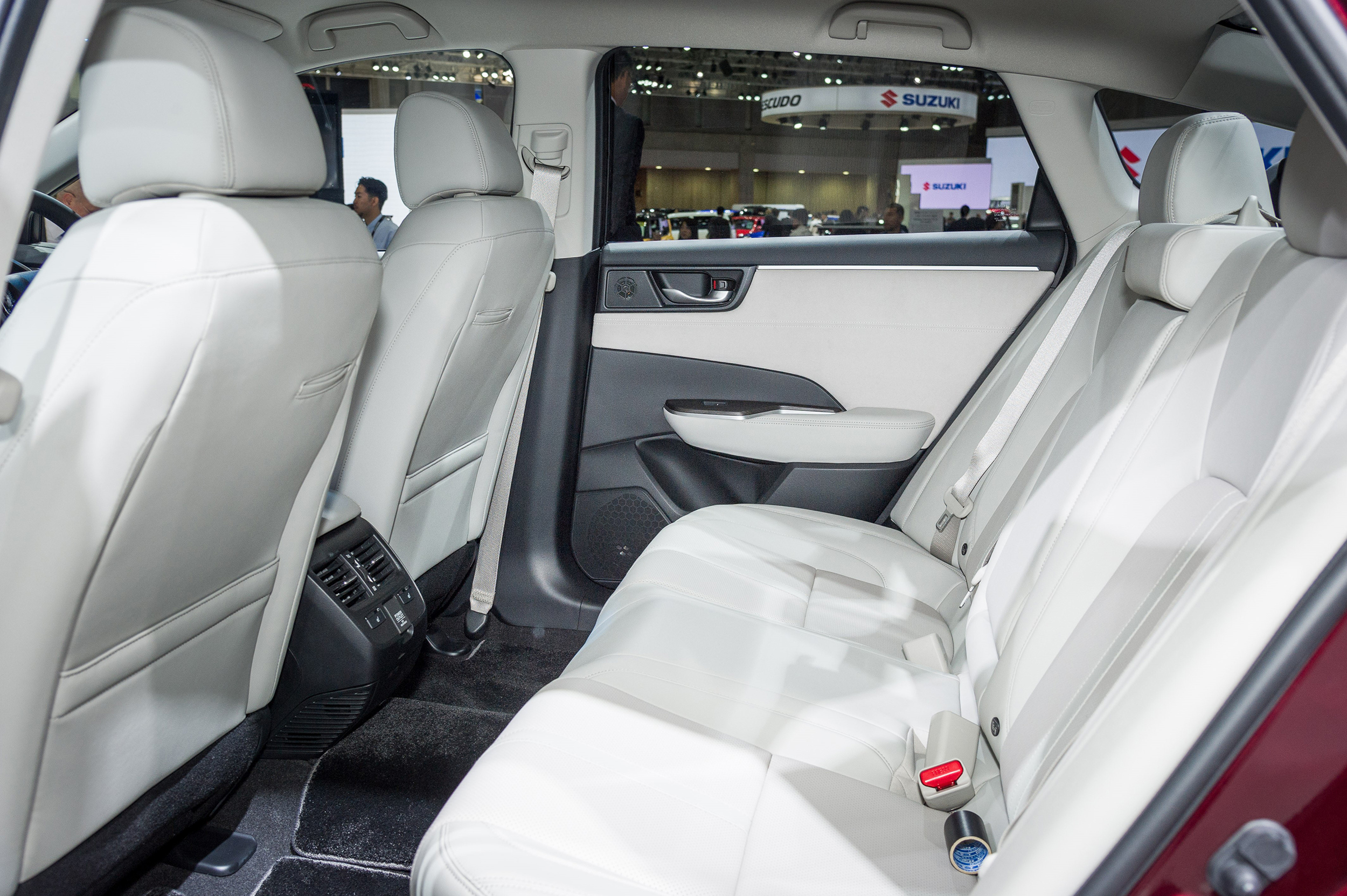
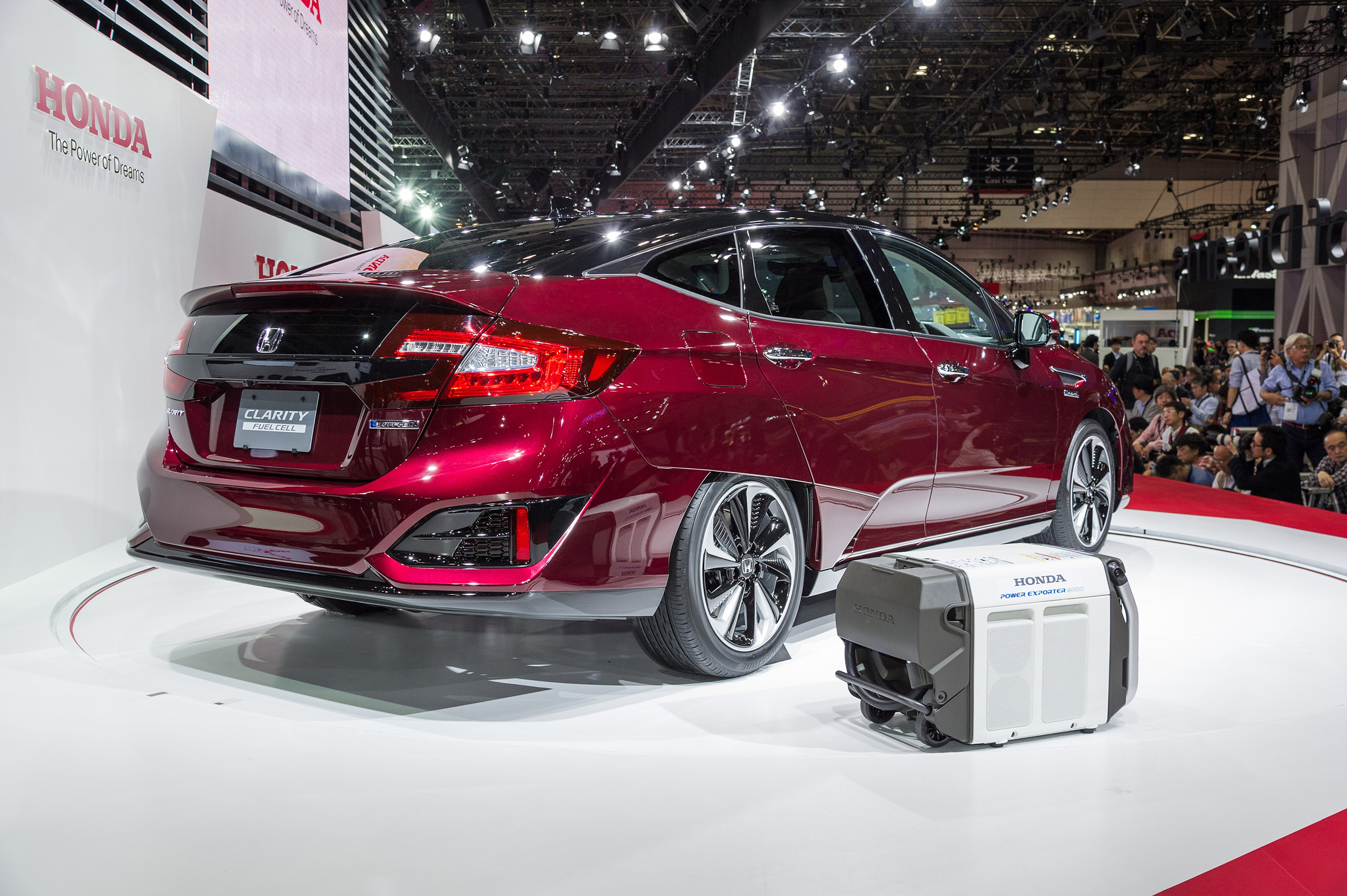
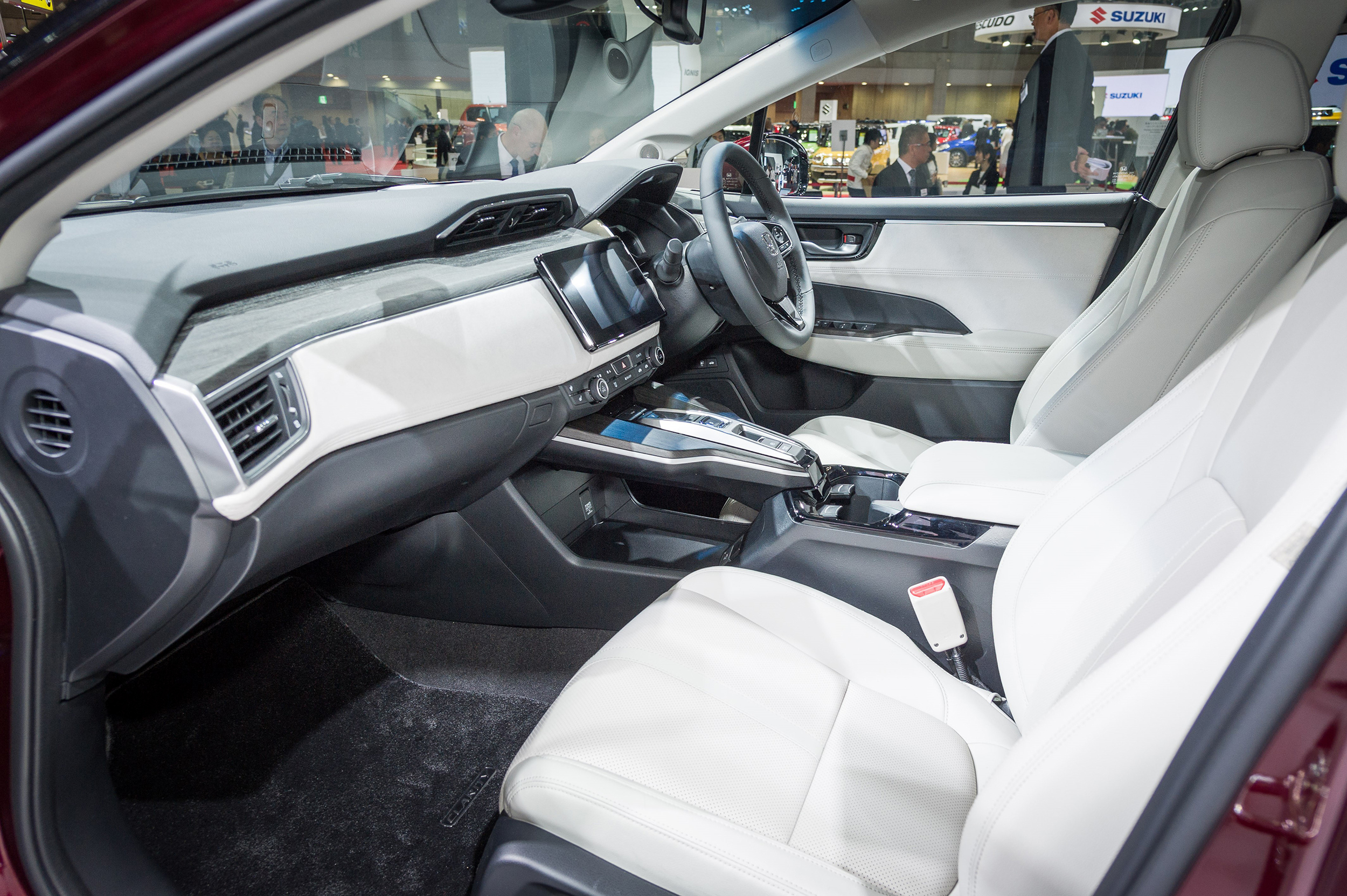
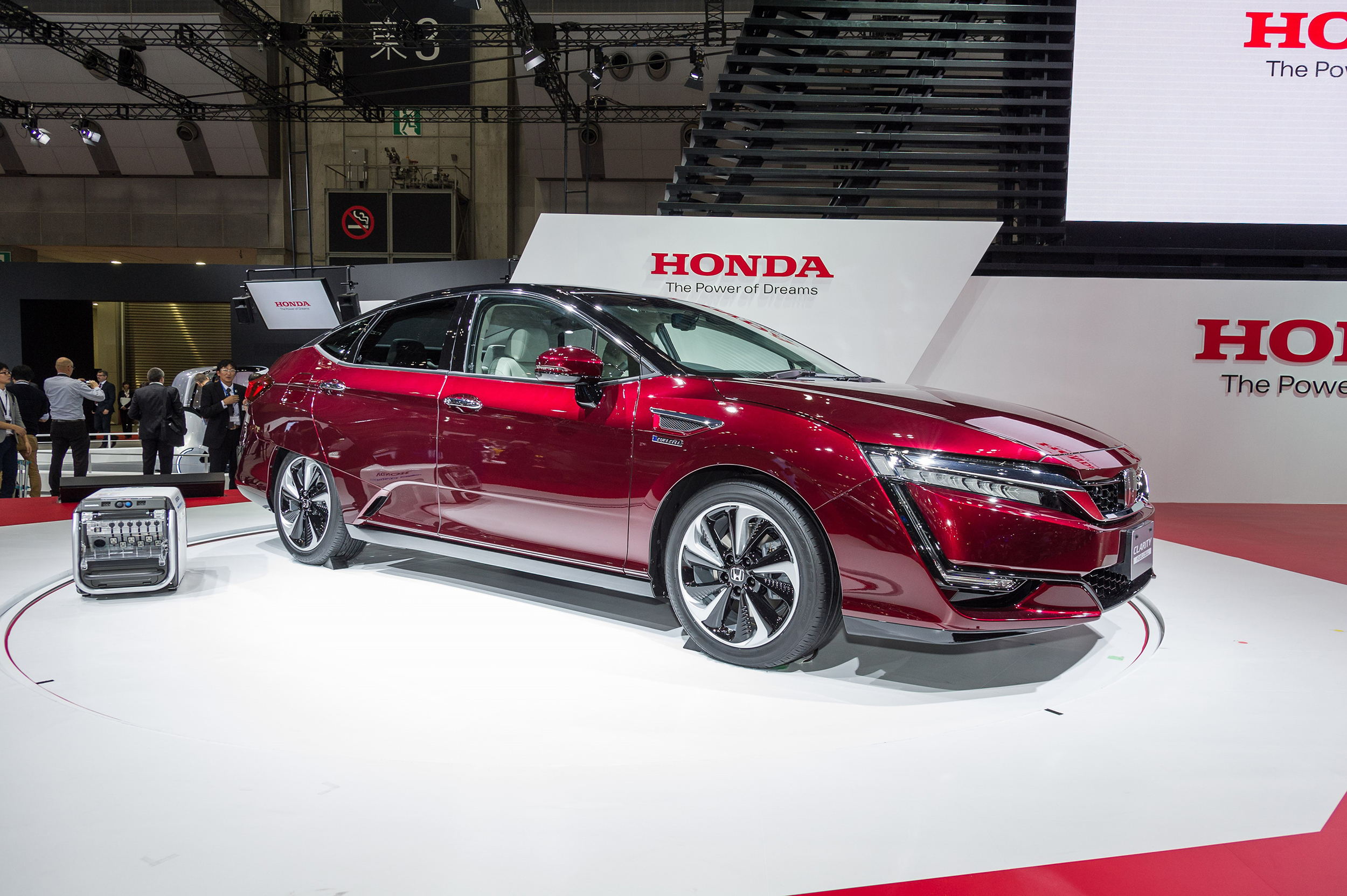
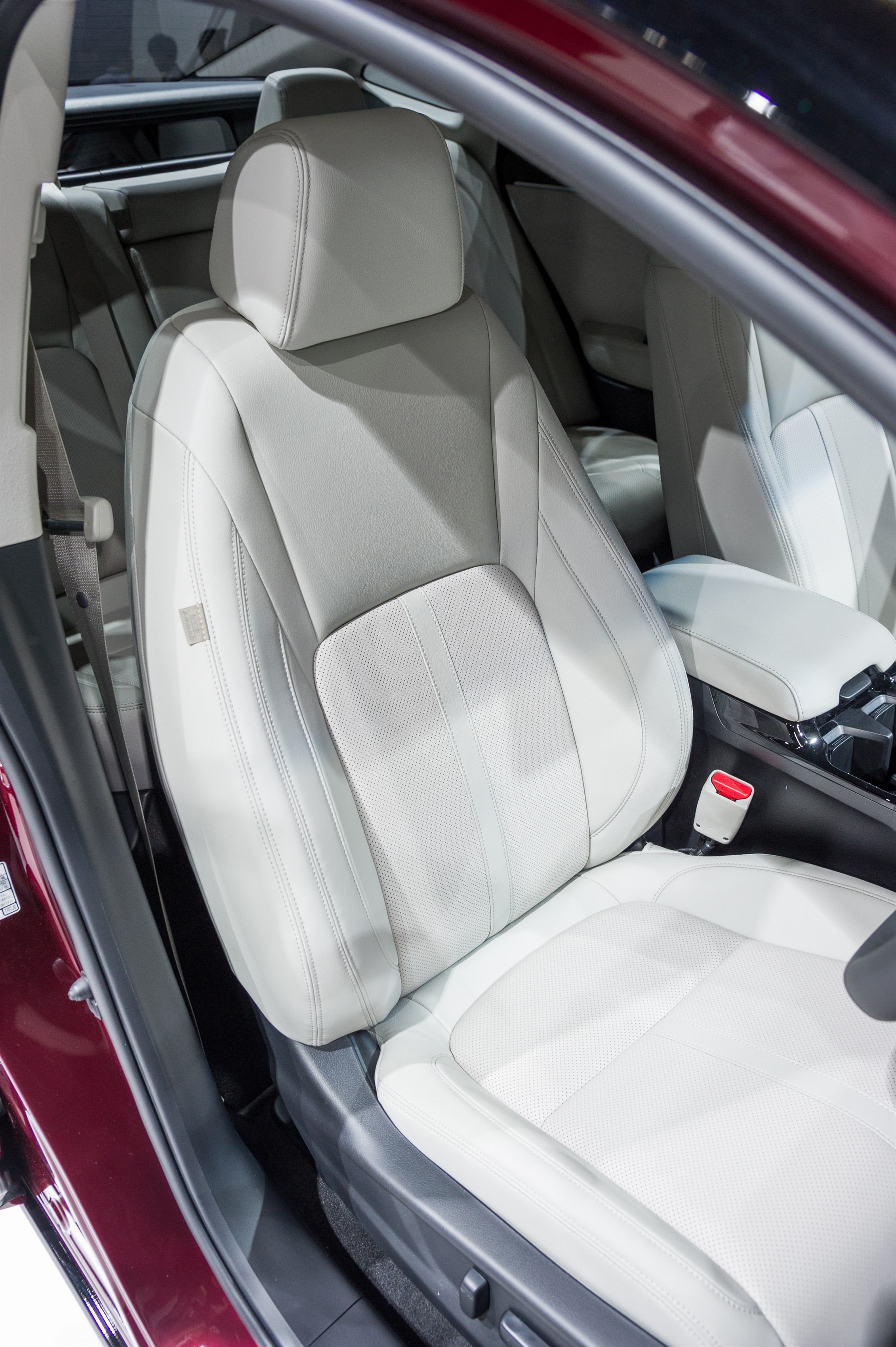
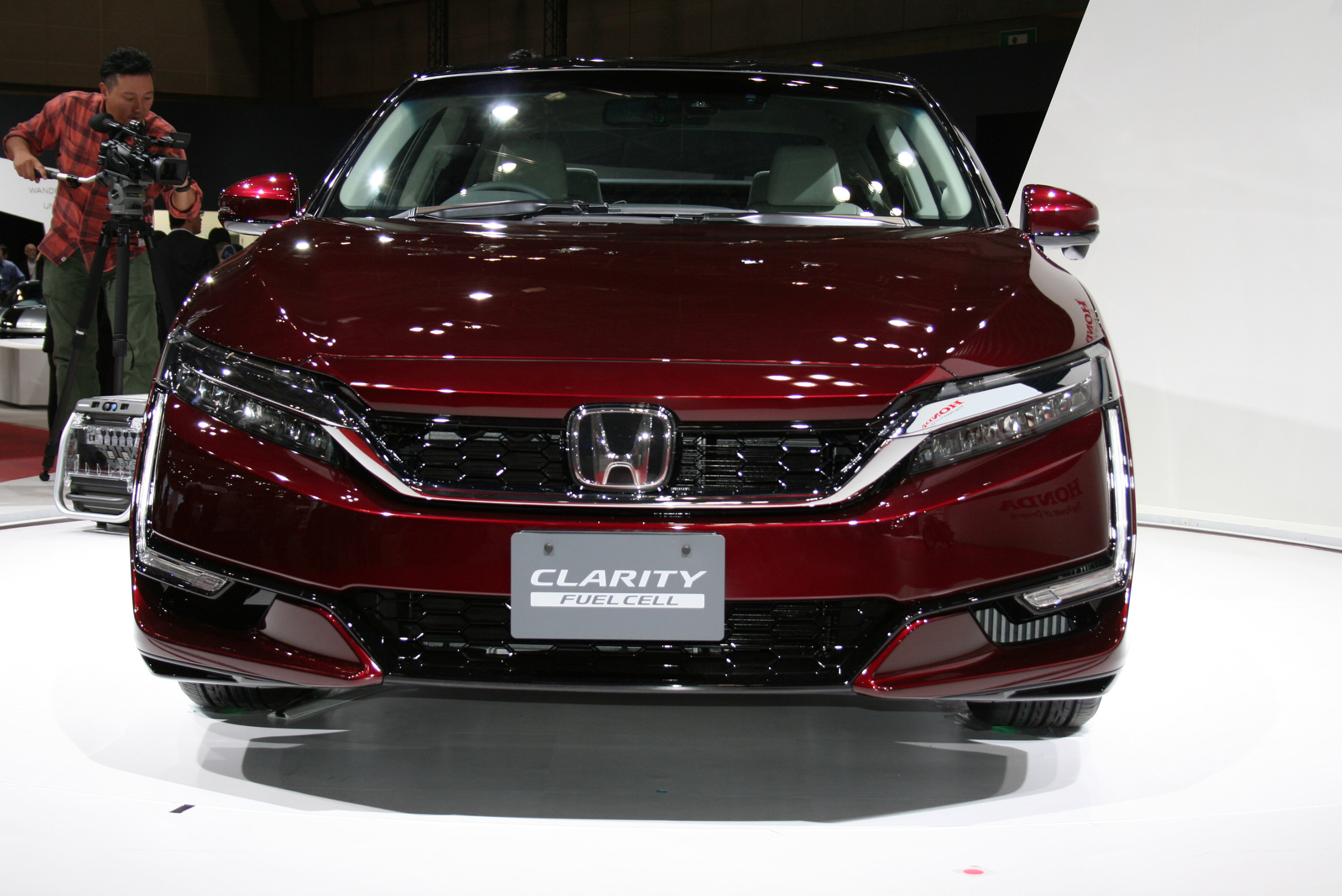
The new car is described by Honda as the world's first production fuel cell powered saloon car to house the entire fuel cell stack and drivetrain system in the space normally occupied by a normal engine and transmission.
Honda says new car seats five adults comfortably, helped by reducing the size of the fuel cell stack and the power generation unit to the size of a comparable V6 engine. The onboard fuel cells now feature a higher output and a more slender shape, with each cell helping make the fuel cell stack 33 per cent more compact than that used in the original FCX Clarity. This improvement has been achieved in parallel with an increase in maximum output to 177ps and a power density increased by 60 per cent.
The Clarity Fuel Cell includes a high-pressure tank capable of storing more hydrogen gas, therefore extending the range of the vehicle to 435 miles on a single tank. In addition, the tank can be refilled in approximately three minutes.
Due to the continuously increasing torque provided by the high-output 130 kW motor, with no need for gears, the Clarity achieves perfectly smooth acceleration anywhere from zero to maximum speed. The FCV include two driving modes: 'Normal' which provides a balance between fuel economy and driving performance, and 'Sport' which prioritises a more responsive acceleration feeling.
The exterior has been designed to give an 'imposing presence on the road' while maintaining a strong aerodynamic profile. Full-LED headlights with a sharp, slender profile and 18-inch aluminium wheels with an aerodynamic design complete the look.
The interior features an advanced driver interface with Honda's instant recognition and intuitive control, as well as premium, 'comforting' materials.
In the UK, Honda has worked with suppliers to encourage the local production and consumption of energy by establishing a solar-powered hydrogen refuelling station in the grounds of Honda UK Manufacturing, in Swindon. This station is open to the public (subject to registration) and able to refuel any fuel cell vehicle.
The Clarity Fuel Cell will be commercially available in Japan from early 2016. Further information on the European launch of the vehicle will follow in 2016.
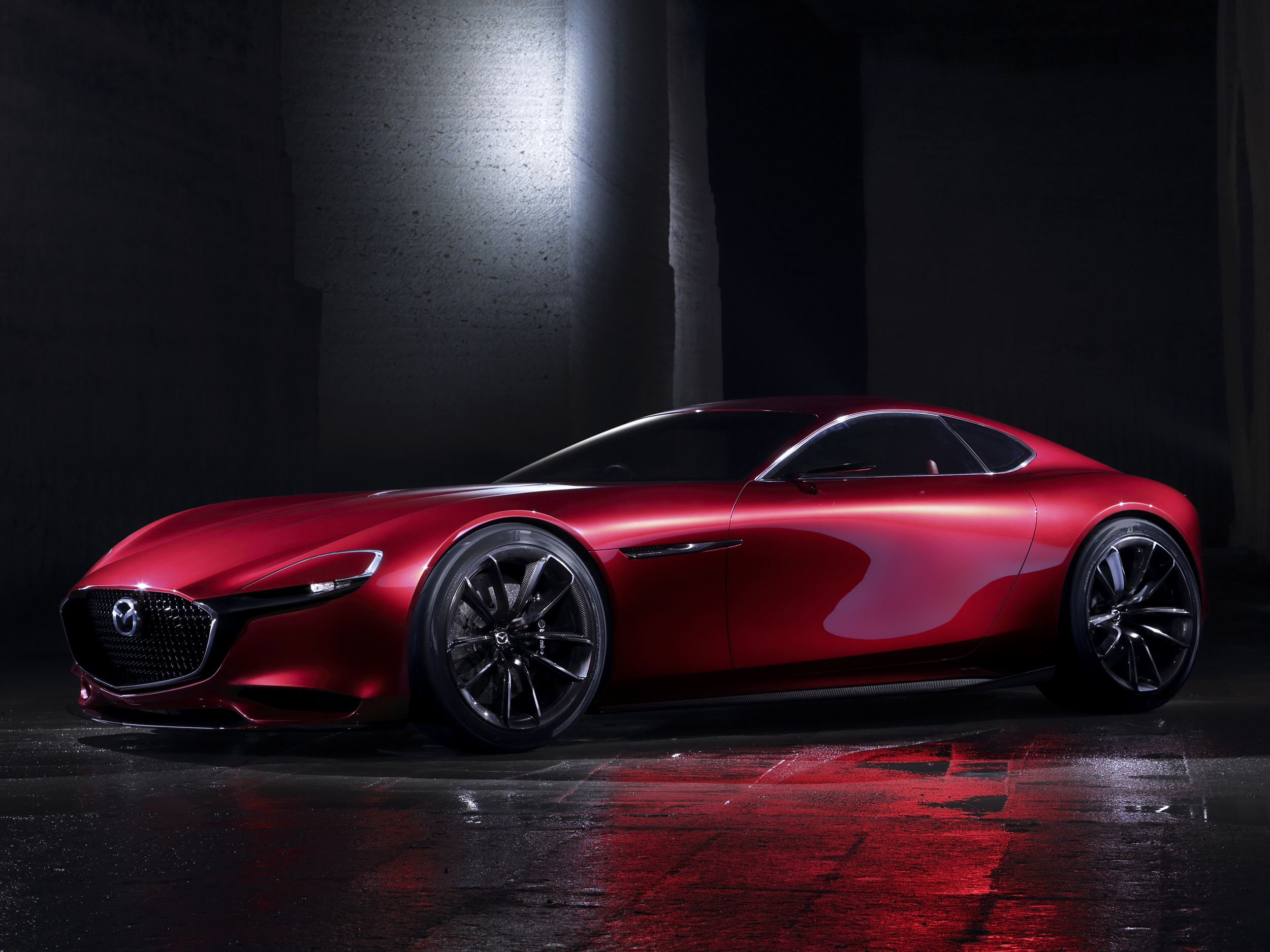
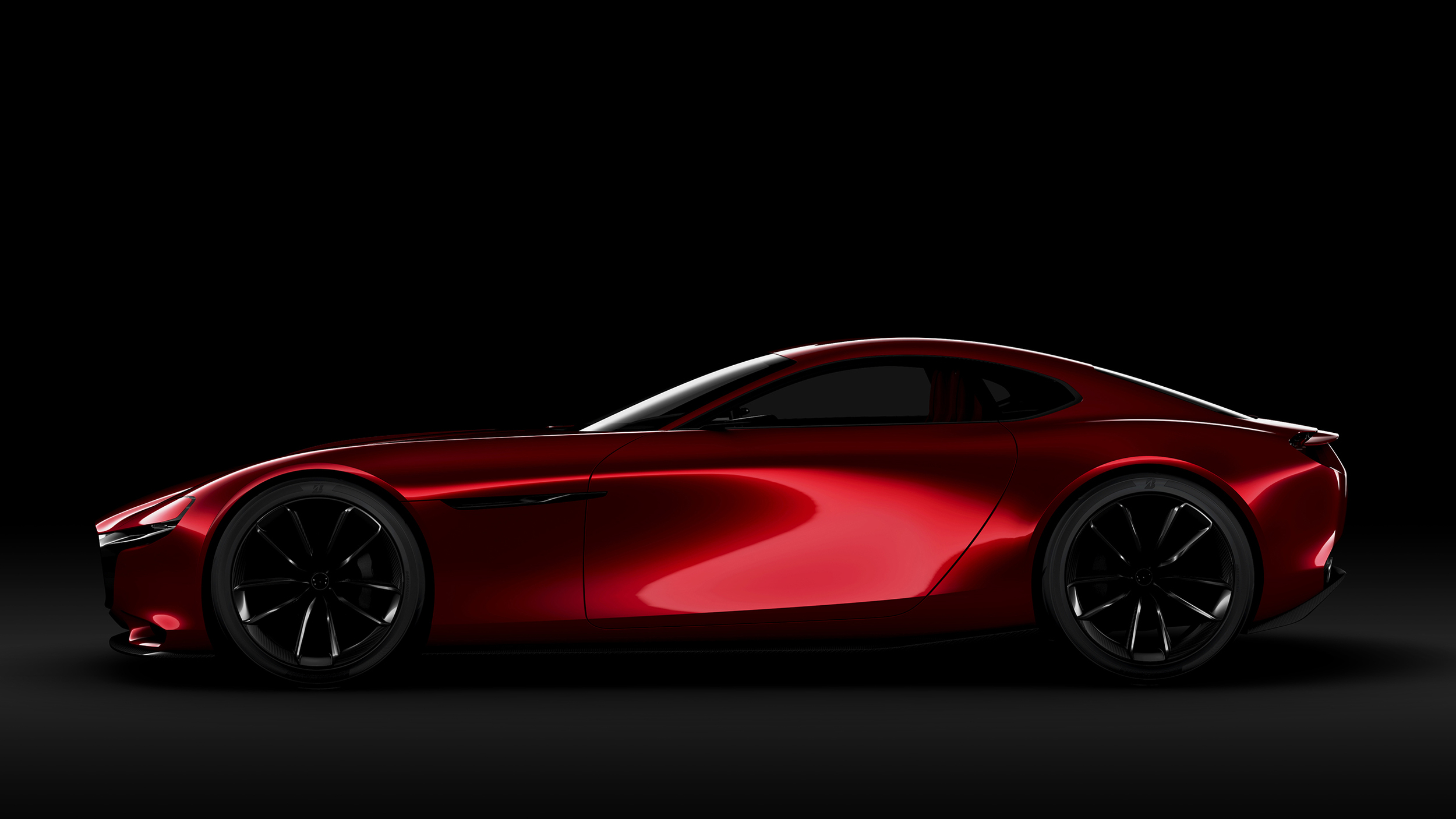
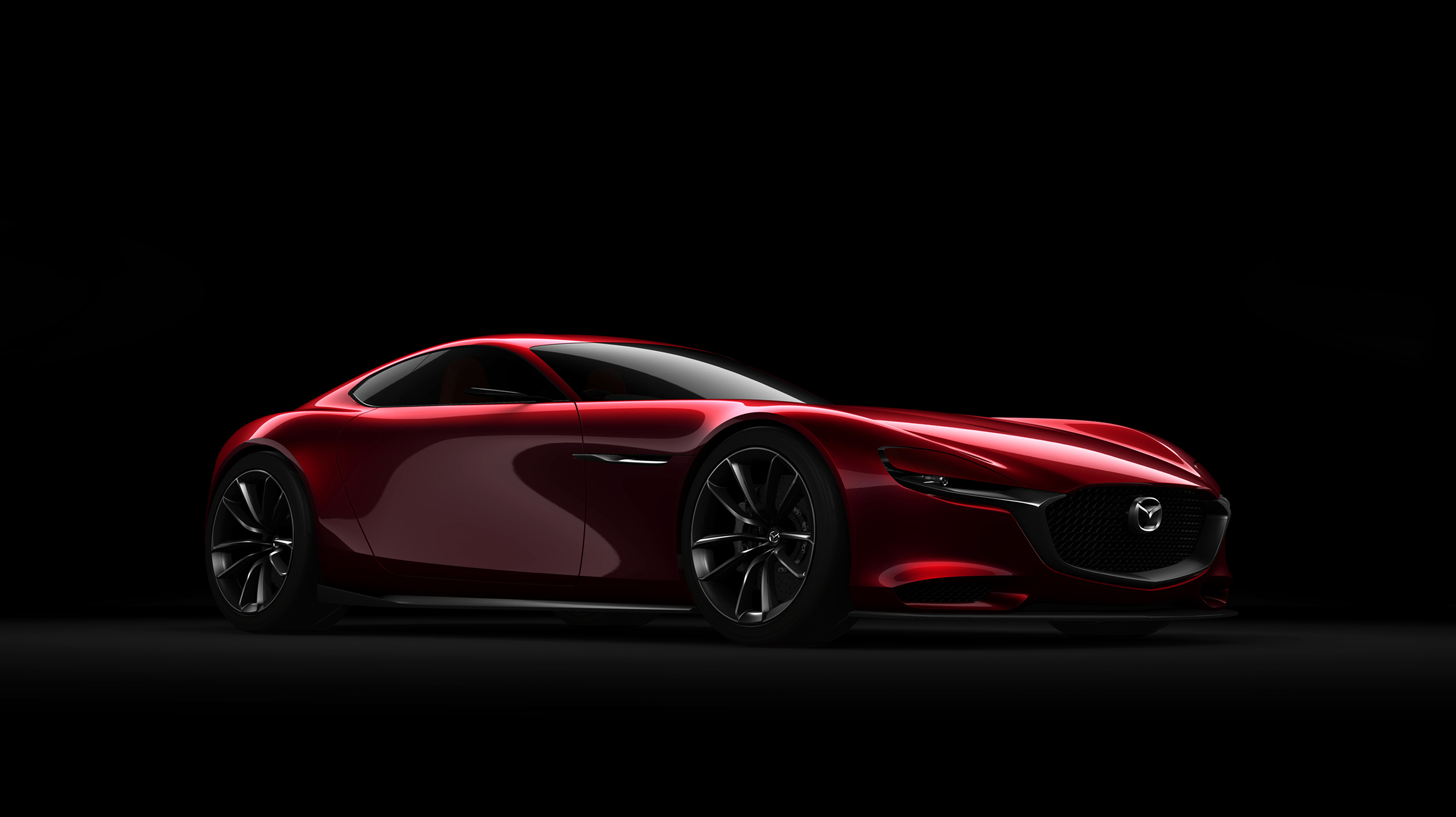
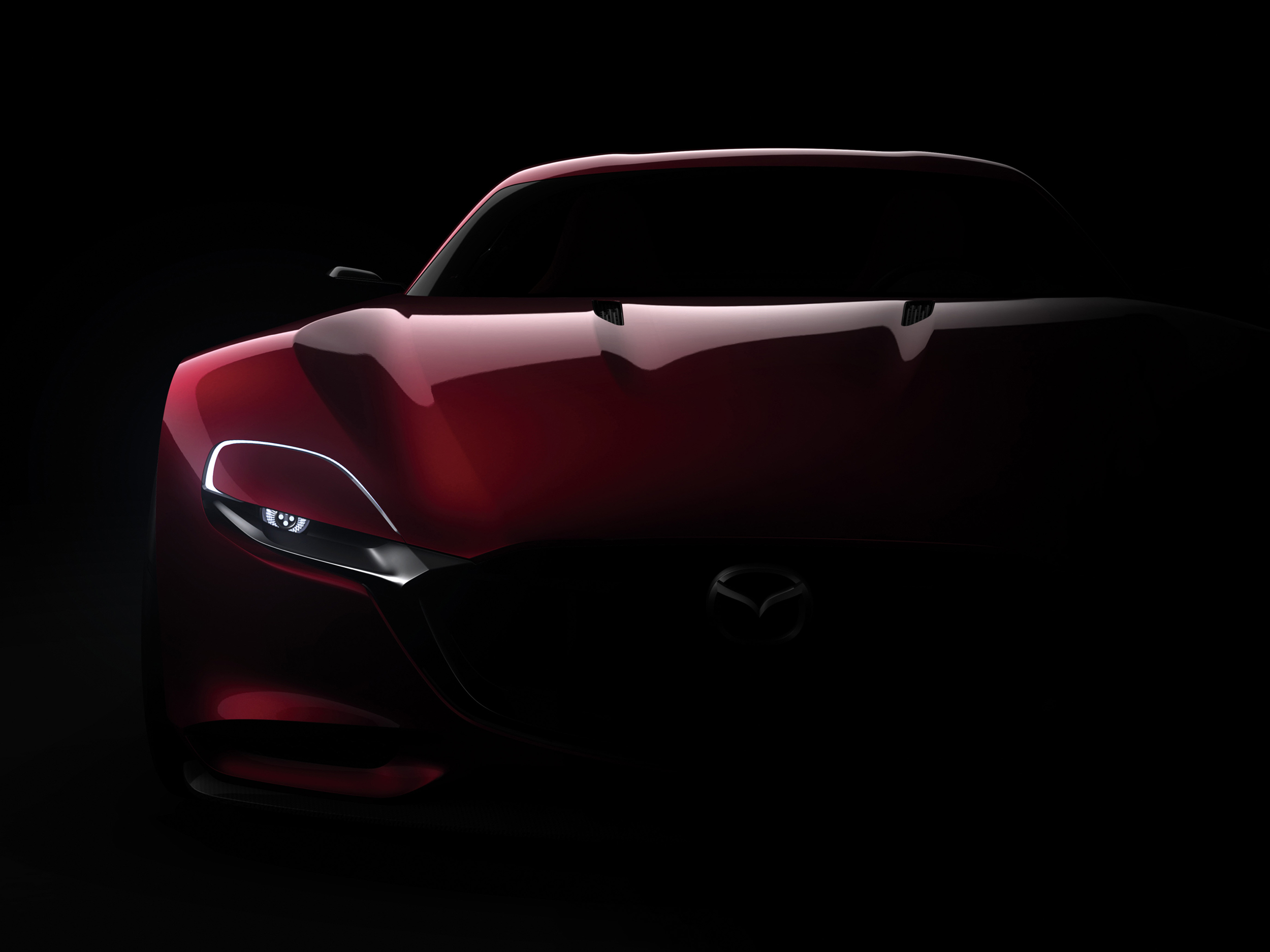
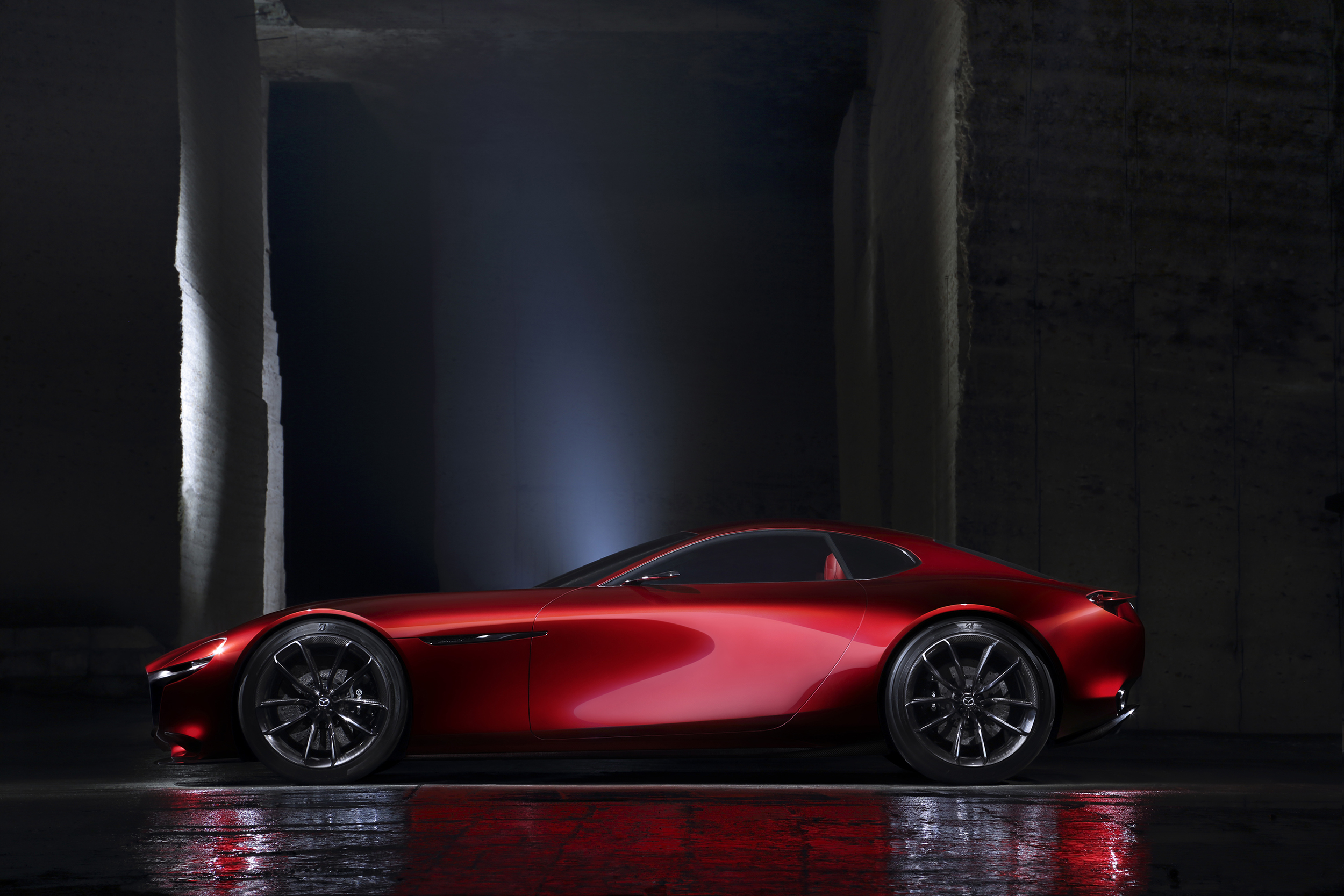
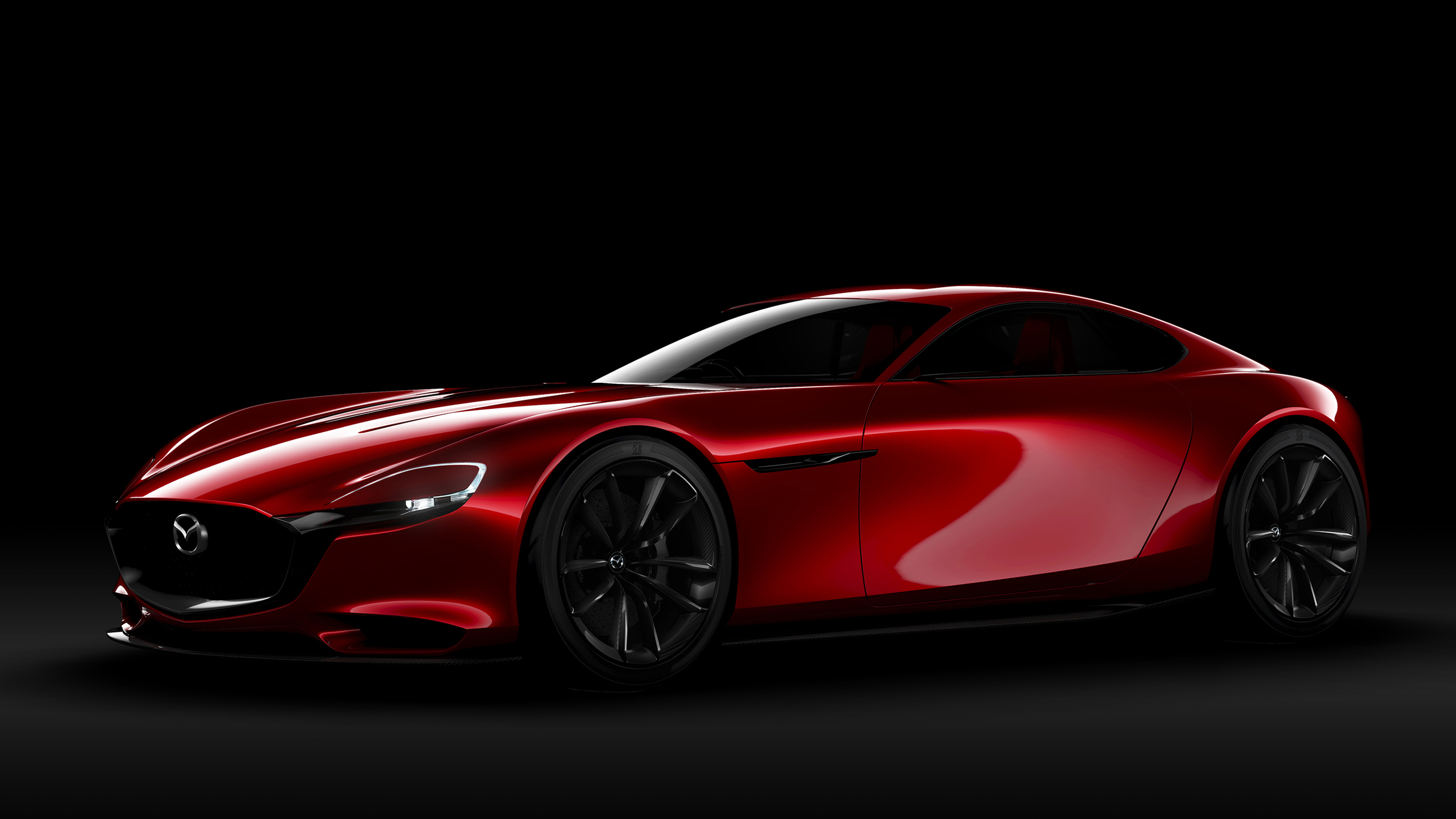
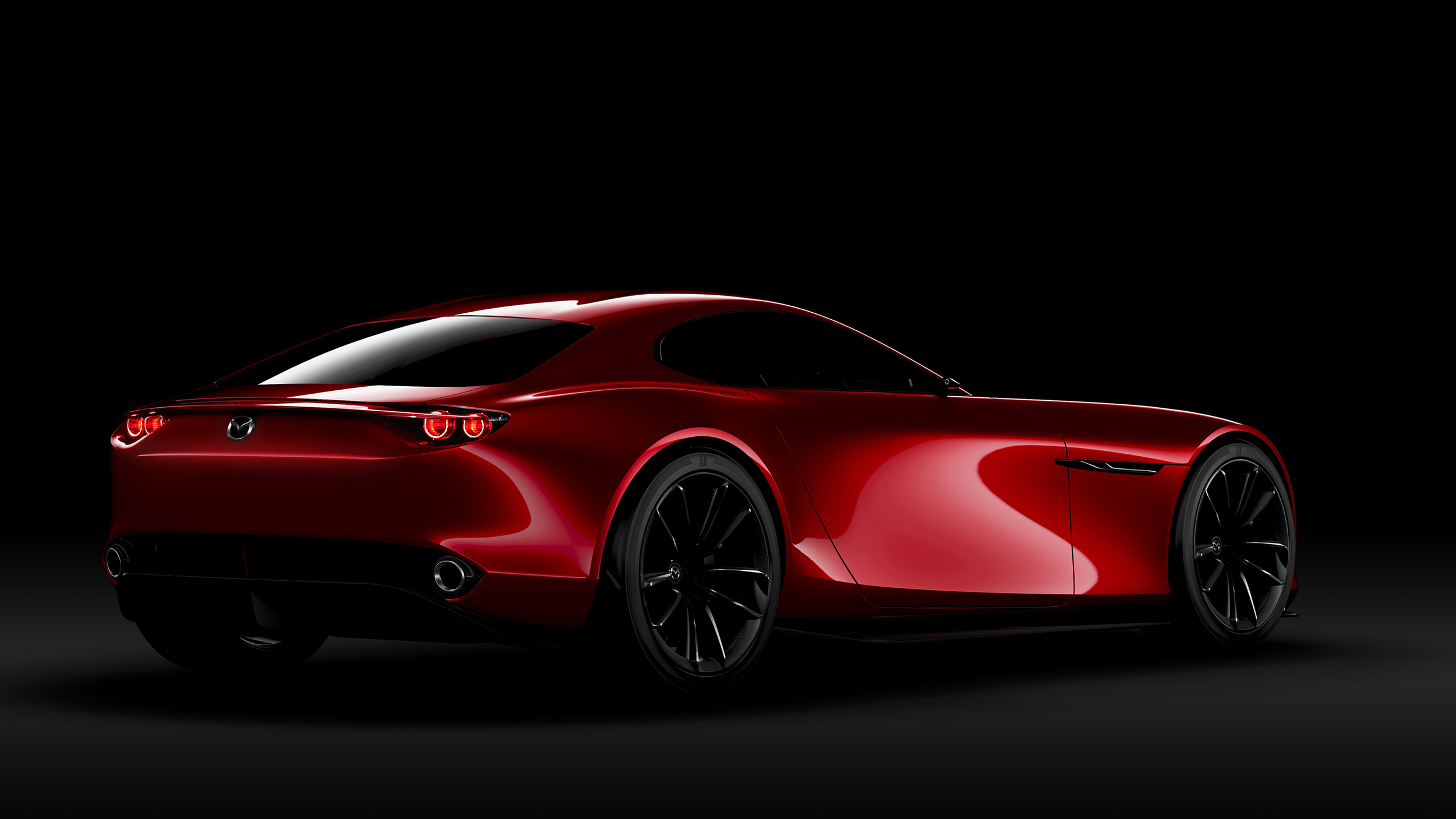
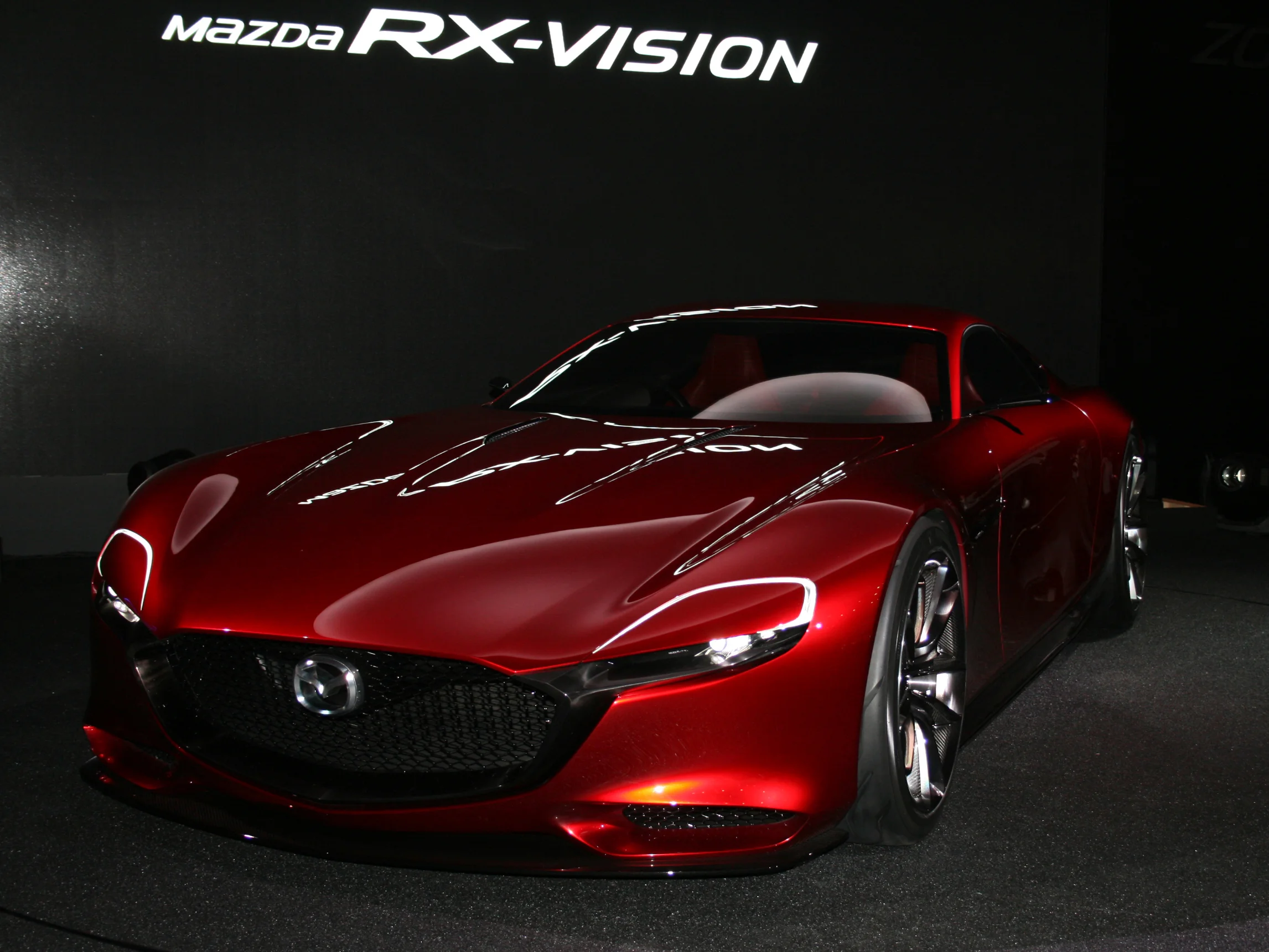
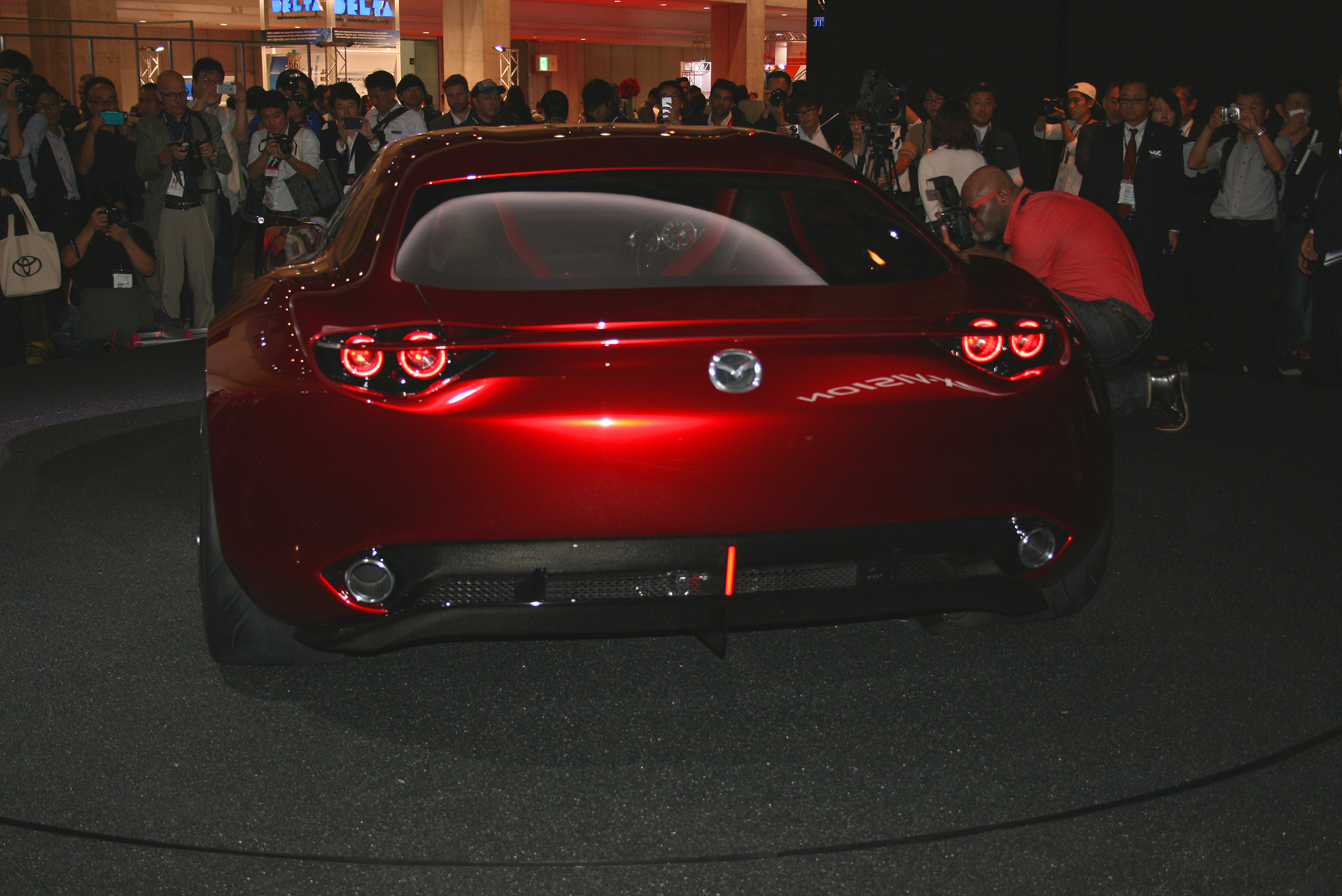
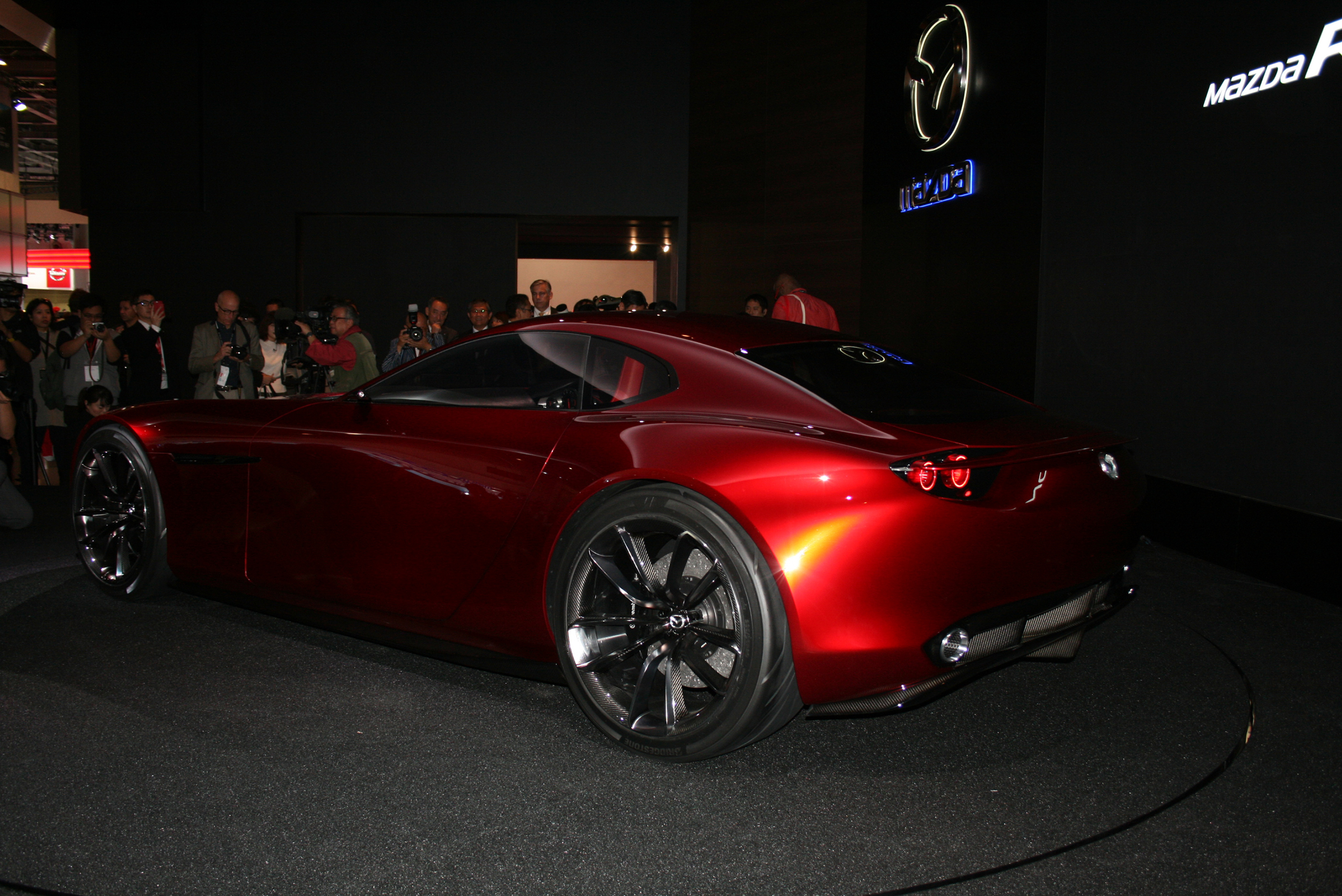
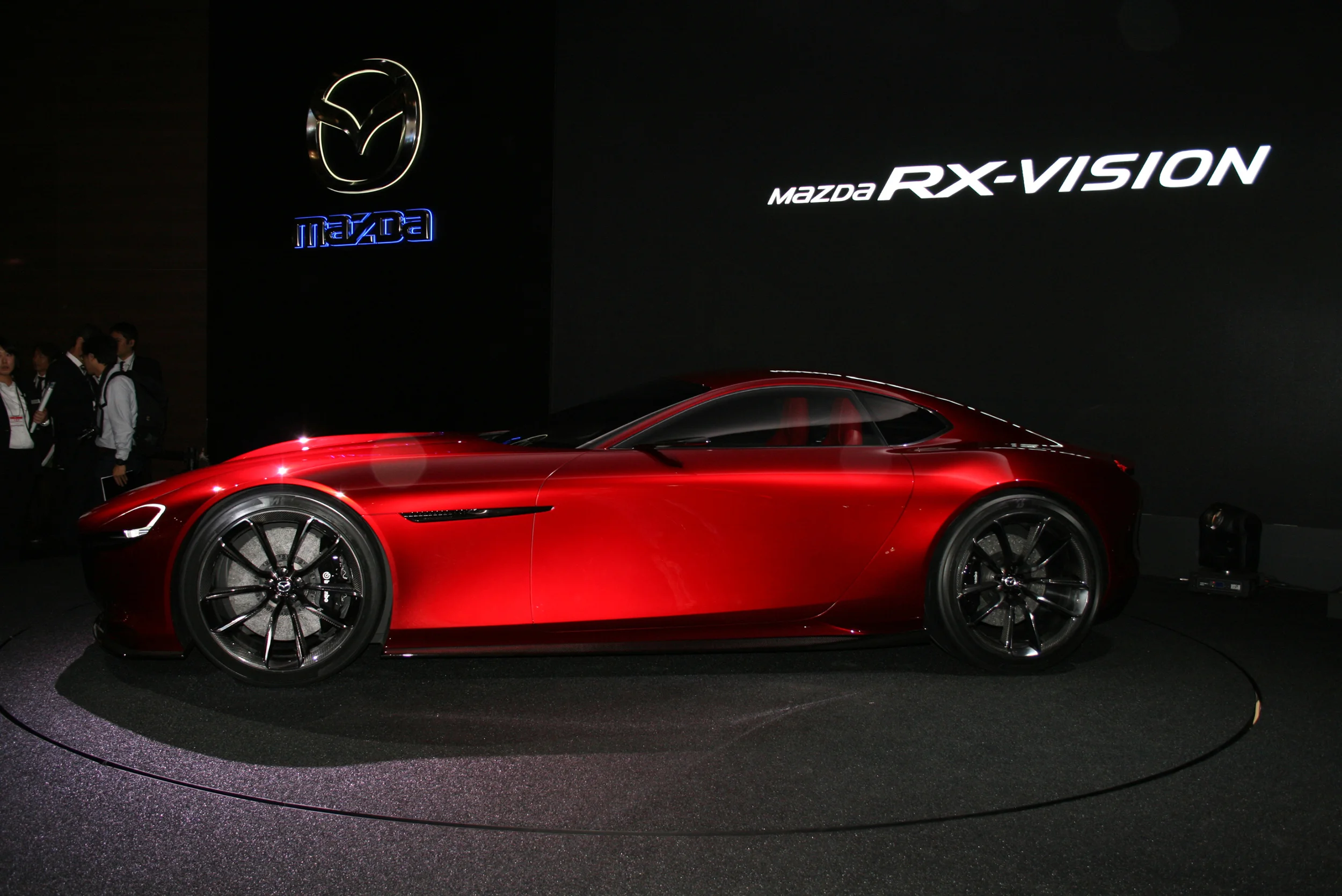
Powered by Mazda's next-generation SKYACTIV-R rotary engine, this technology allows for what Mazda calls an 'exquisitely proportioned' front-engine, rear-wheel drive car. Rotary engines are unique in that they generate power through the rotational motion of triangular rotors (unlike pistons in conventional engines). Overcoming numerous technical difficulties, Mazda succeeded in commercialising rotary power, first in the Cosmo Sport 110S in 1967 and then in several other models.
Although not currently mass-producing any rotary models, Mazda says it never ceased its R&D activities, choosing the SKYACTIV-R label for the next-generation rotary engine.
"I look forward to talking with you more about this vision we revealed here today at the Mazda stand," said Mazda's Representative Director, President and CEO Masamichi Kogai. "Mazda will continue to take on new challenges in an effort to build a special bond with our customers and become their one and only brand."
Further details have yet to be announced.
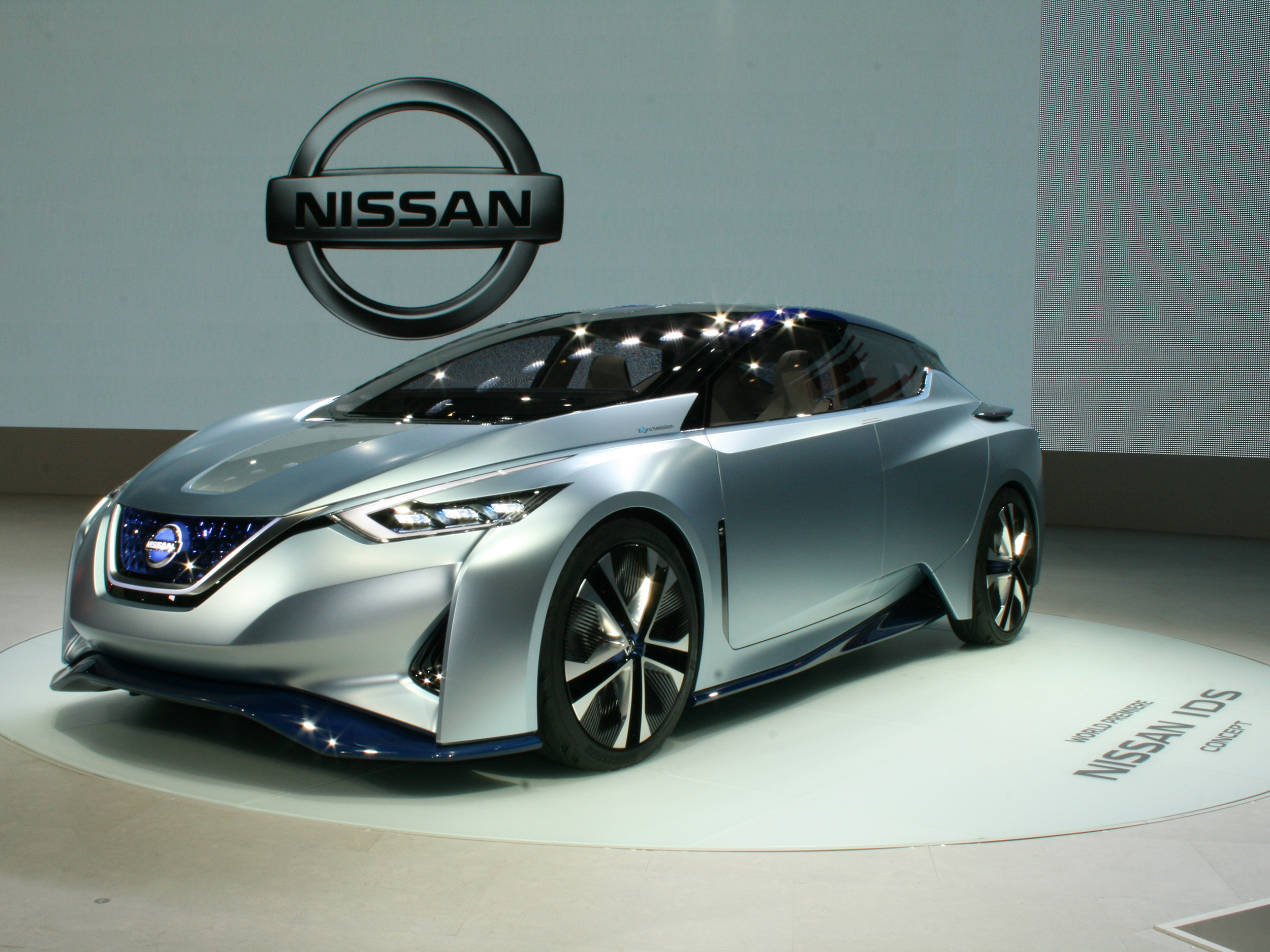



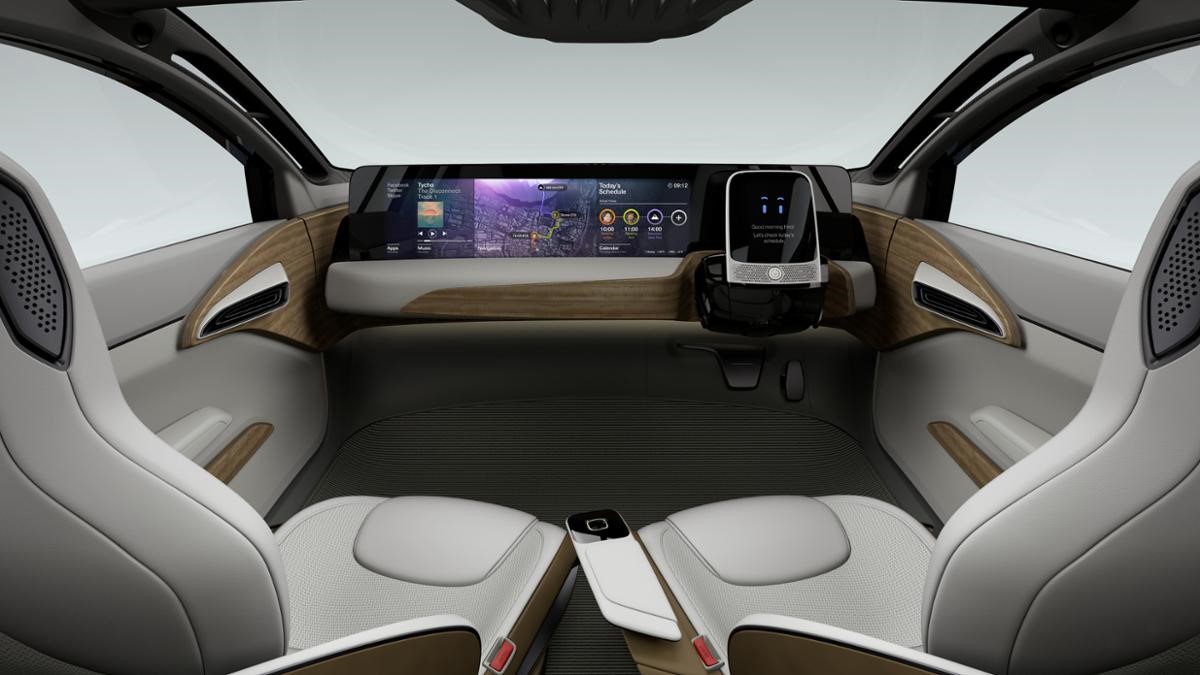
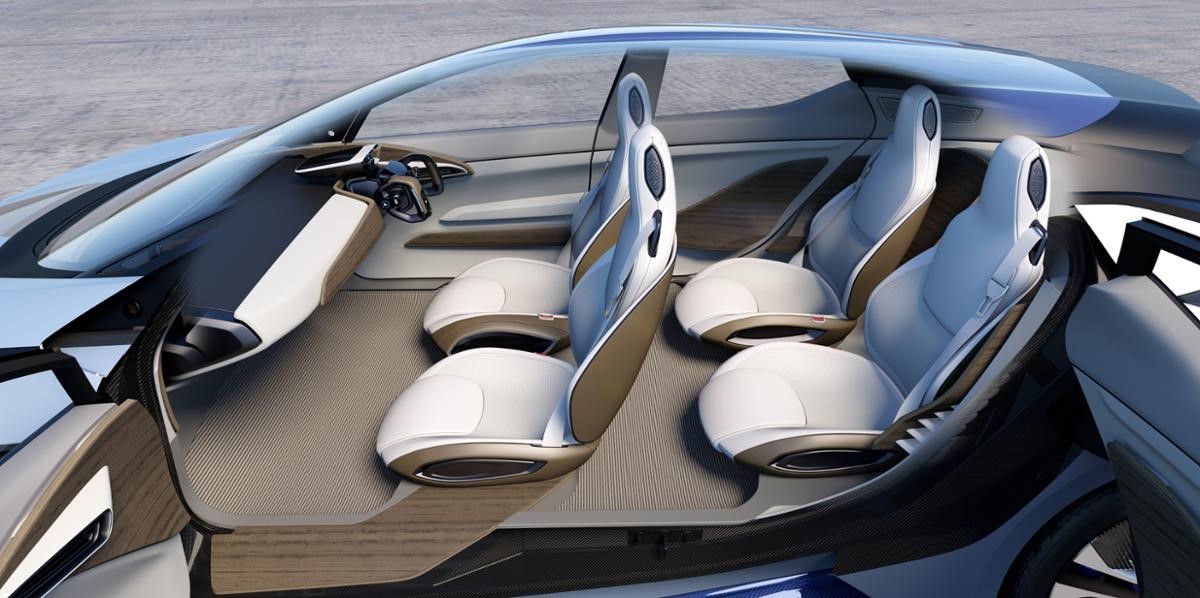

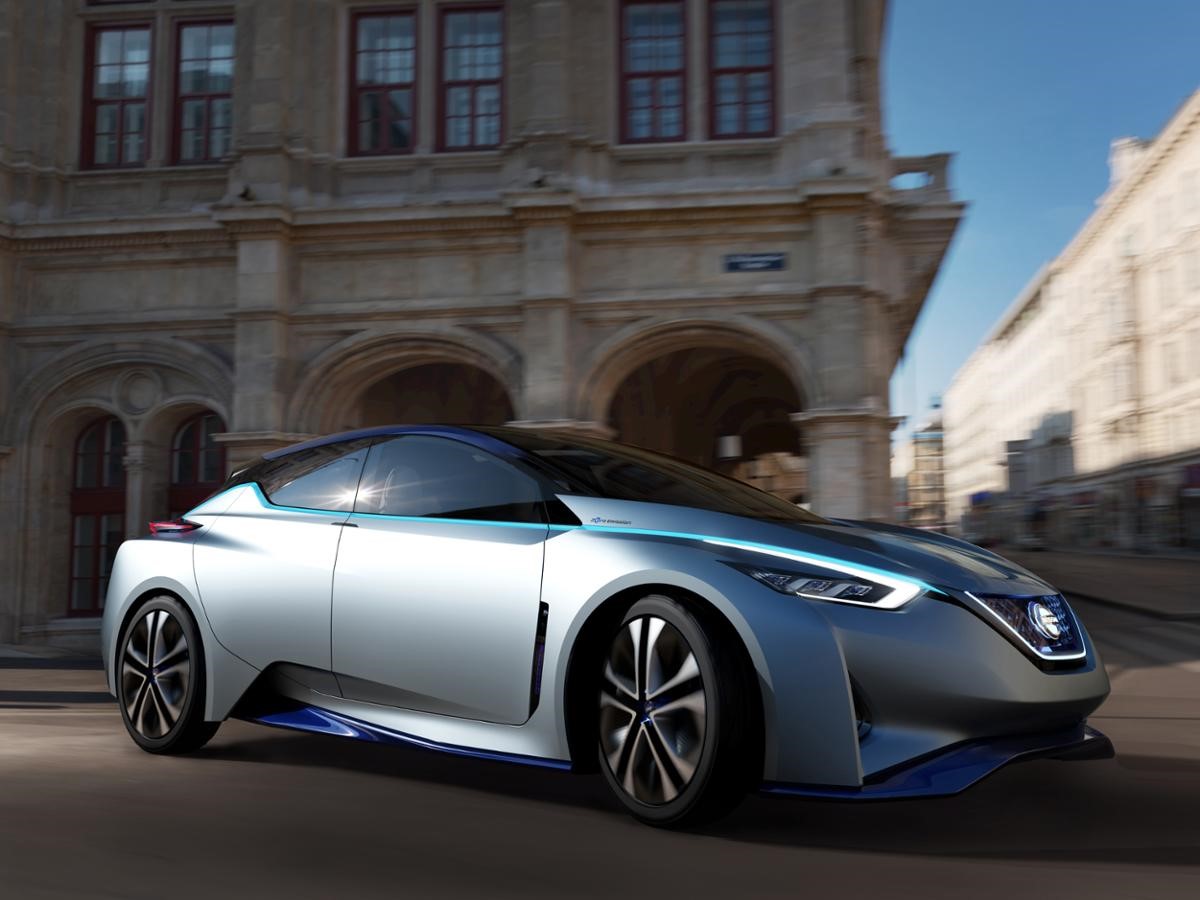
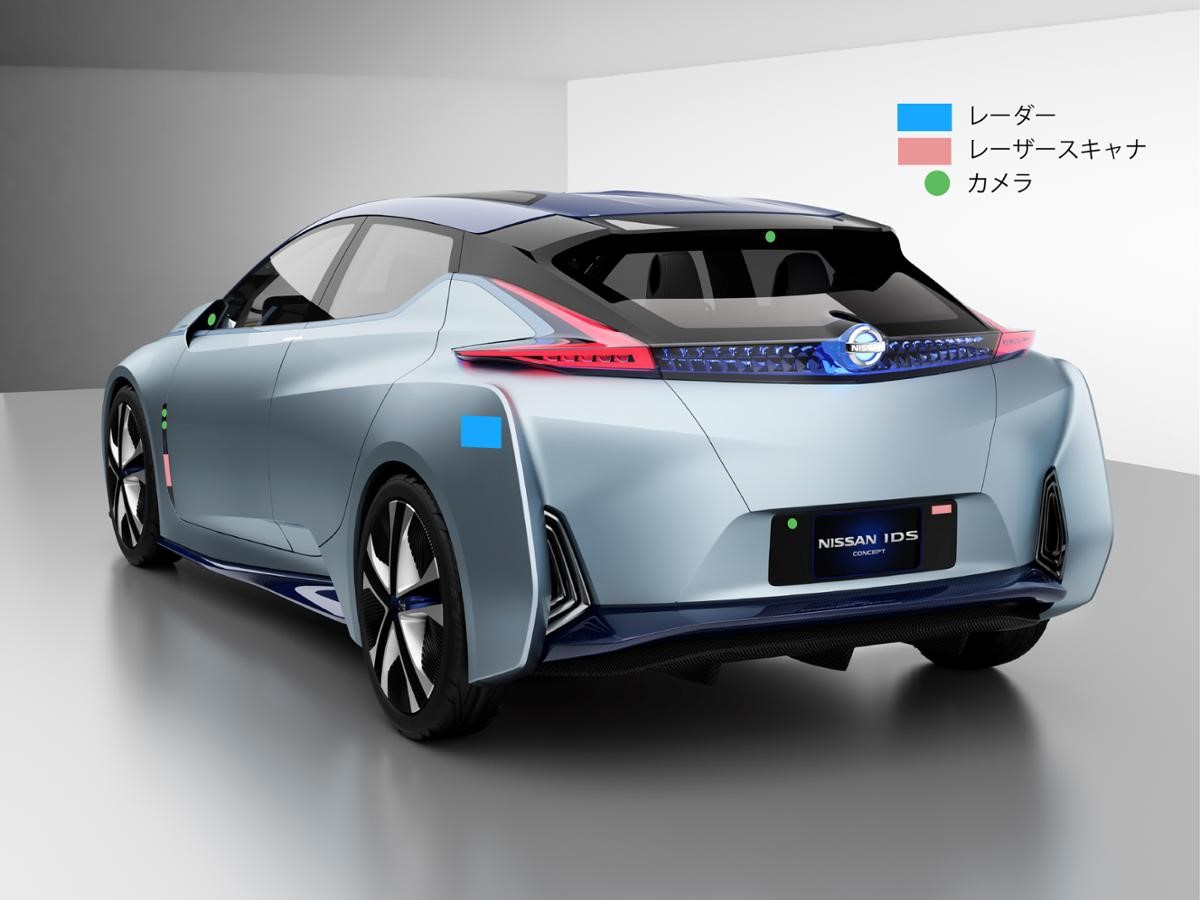
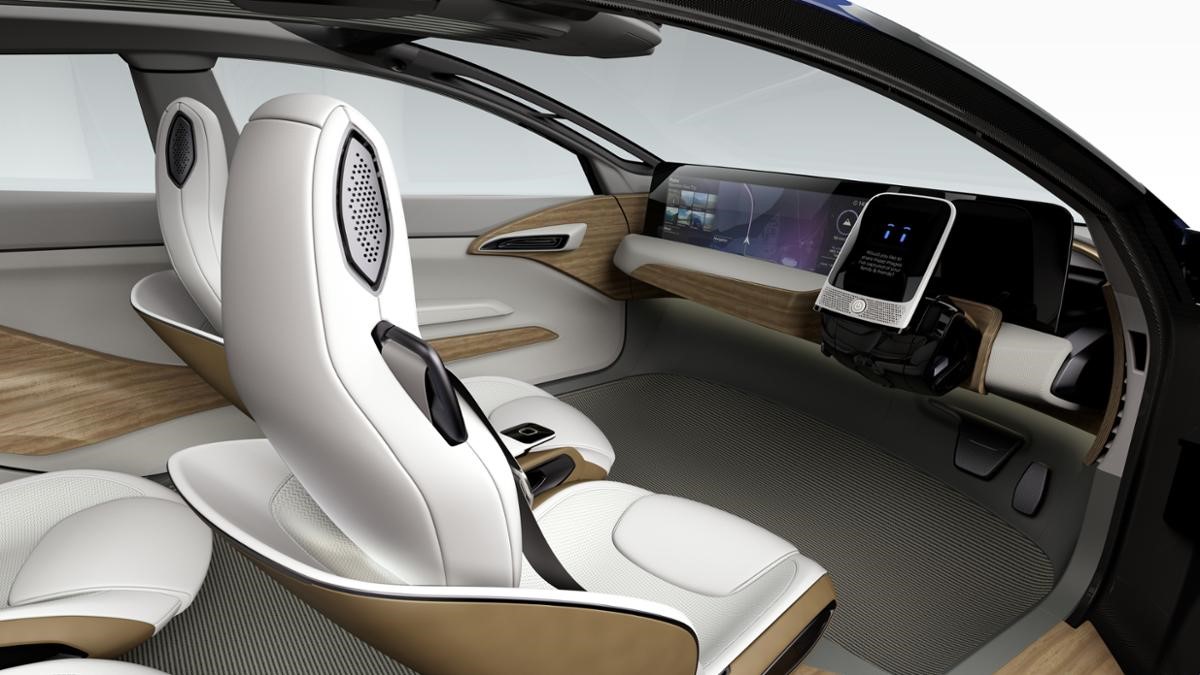
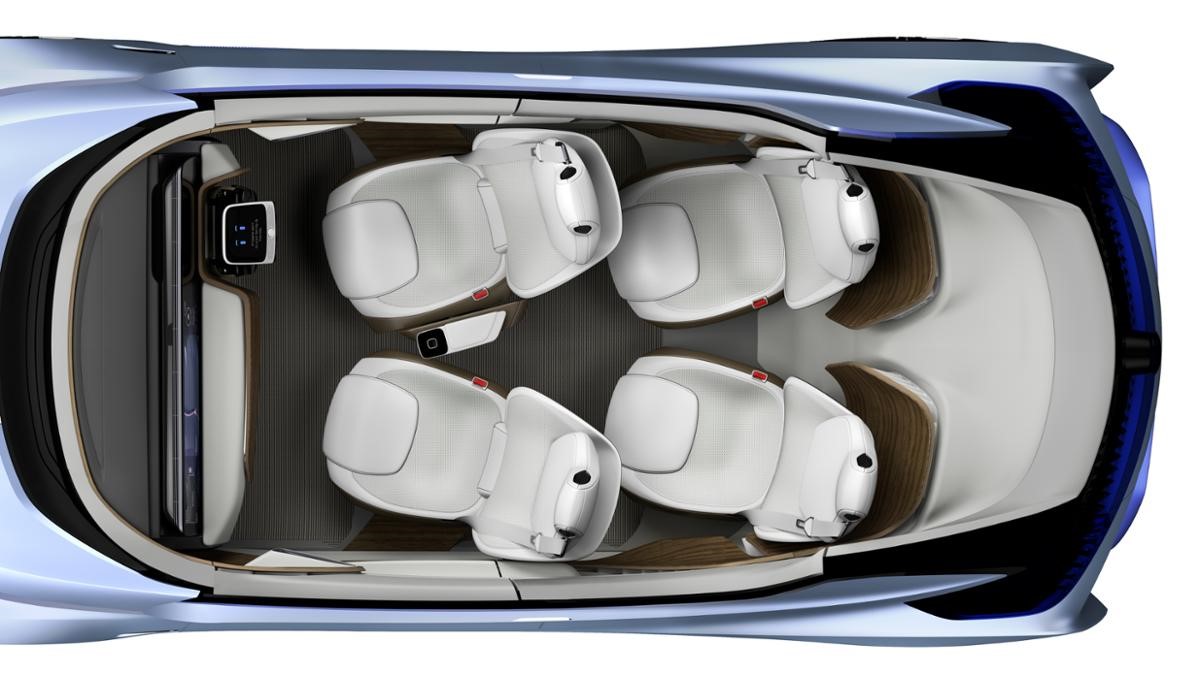
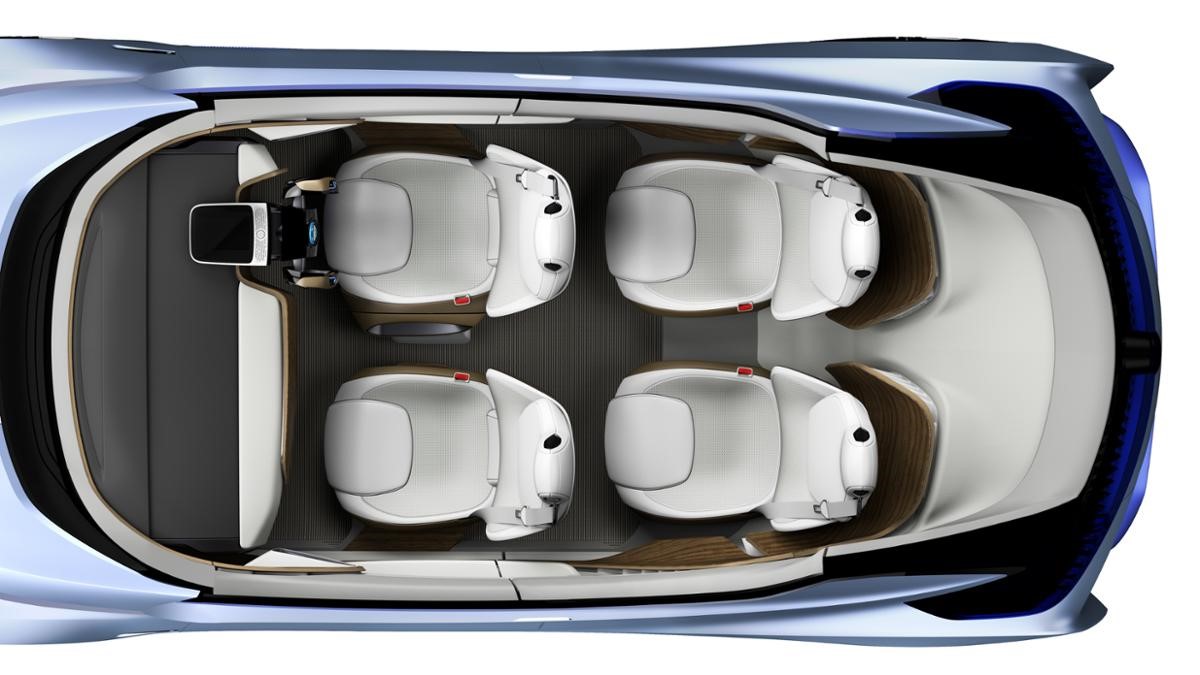


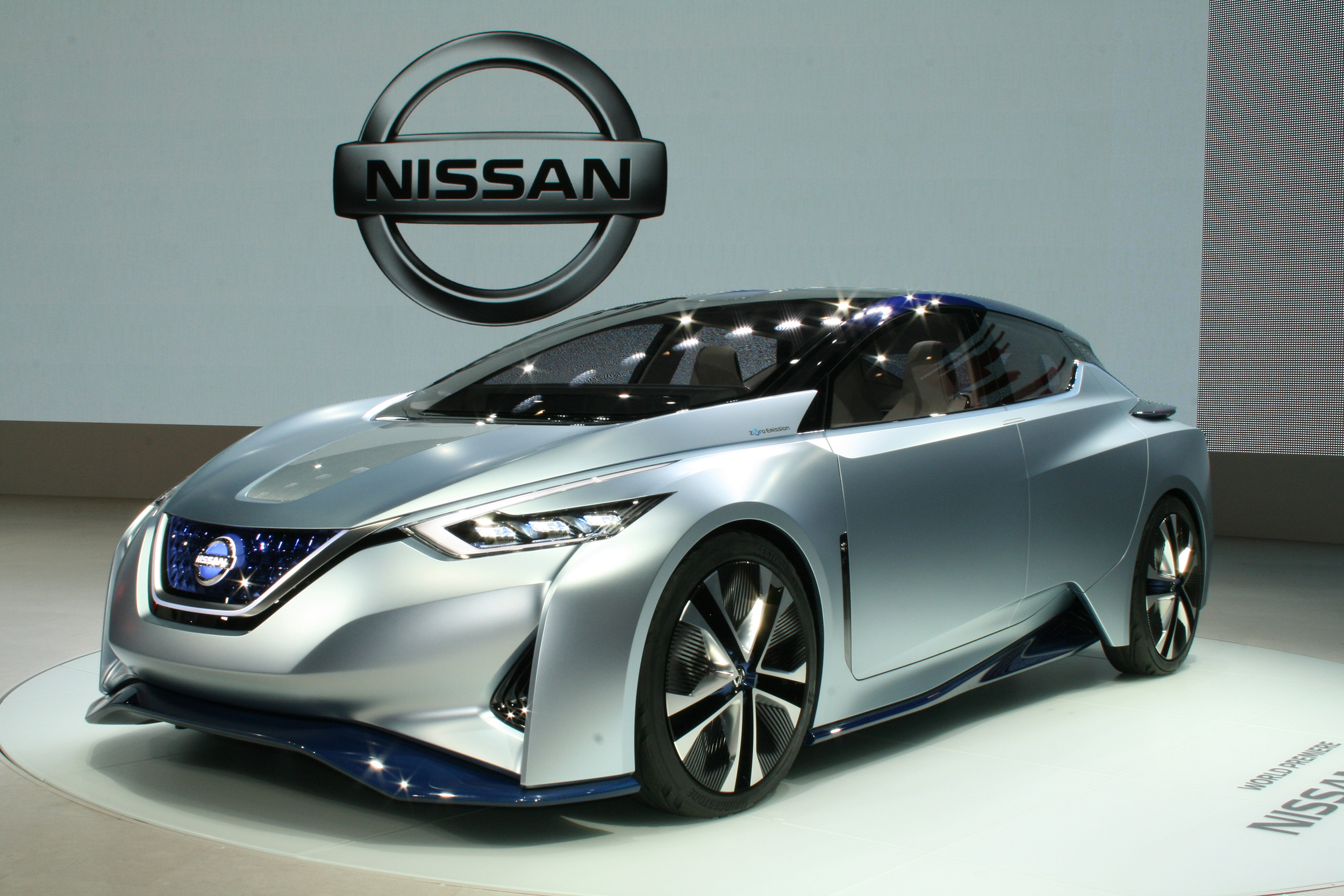
Nissan Intelligent Driving is the brand's concept of autonomous drive technology, and represents what Nissan says next-generation vehicles should be. "Nissan Intelligent Driving improves a driver's ability to see, think and react. It compensates for human error, which causes more than 90 percent of all car accidents. As a result, time spent behind the wheel is safer, cleaner, more efficient and more fun." said Nissan president and CEO Carlos Ghosn.
Even though it is a hatchback, the IDS Concept's long wheelbase enables comfortable seating space for four adults. But the cabin becomes even more spacious when the driver selects Piloted Drive. In this mode, the steering wheel recedes into the centre of the instrument panel and a large flat screen comes out. All four seats rotate slightly inward, making conversation even easier. Various driving-related operations are handled by artificial intelligence (AI) yet the car's performance - from accelerating to braking to cornering - imitates the driver's own style and preferences.
In Manual Drive mode, the driver has control with the linear acceleration and cornering described as 'pure and exhilarating'. Yet behind the scenes, the IDS Concept continues to provide assistance with sensors continually monitoring conditions and in the event of imminent danger, the concept will take evasive action. The roomy interior transforms with all seats facing forward. The steering wheel, which Nissan says takes styling cues from reins for horse riding, appears along with driving meters and a heads-up display that shows route and other driving information. Interior lighting switches to blue. Nissan's use of hollow-structure A-pillars reduces blind spots.
In addition to learning, the car's AI communicates with information ranging from traffic conditions to the driver's schedule to personal interests.
On the exterior, lights and displays convey to pedestrians and others the car's awareness of its surroundings and signals its intentions. The car's silver side body line, for example, is actually an LED that Nissan calls the 'Intention Indicator'. When pedestrians or cyclists are nearby, the strip shines red, signalling that the car is aware of them. Another electronic display, which faces outside from the instrument panel, can flash messages such as "After you" to pedestrians.
The height of the full carbon fibre body was constrained to 1,380 mm, minimising aerodynamic drag (Cd). Positioning the tyres close to the corners of the body maximises interior space while enabling a wrap-around cabin design. Large-diameter wheels offer 'high-performance and sportiness', but used very thin 175-size tyres to minimise air and roll resistance. Powered by a high-capacity 60 kWh battery, and combined with the its aerodynamics, low stance, flowing form and reduced weight due to its full-carbon-fibre body, the vehicle is designed to also meet the need to drive long distances.
By 2020, Nissan expect to see its Intelligent Driving technology deployed on cars in cities around the world.
Hydrogen Fuel Cell Car, Saloon, Sports Car, News
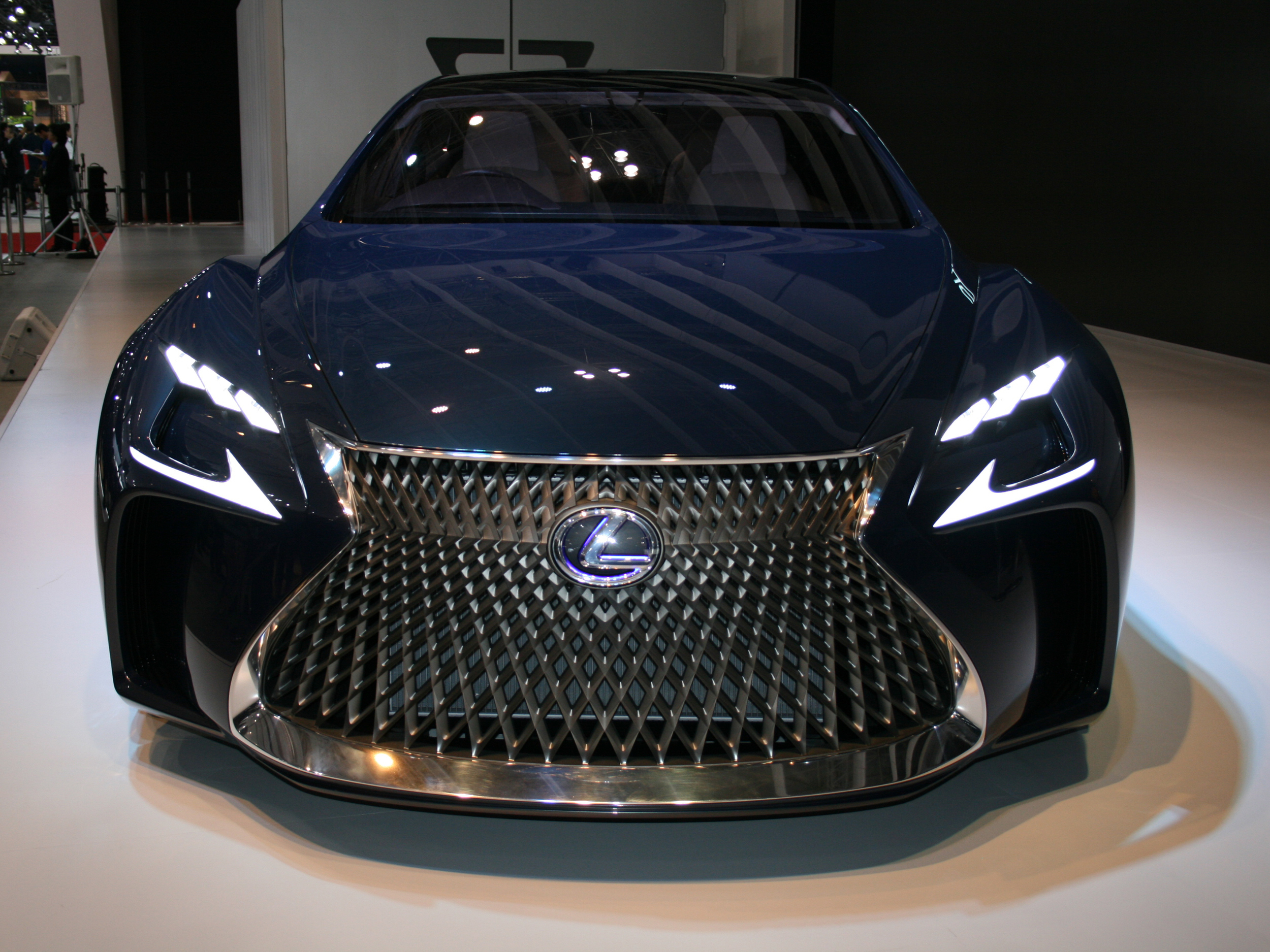
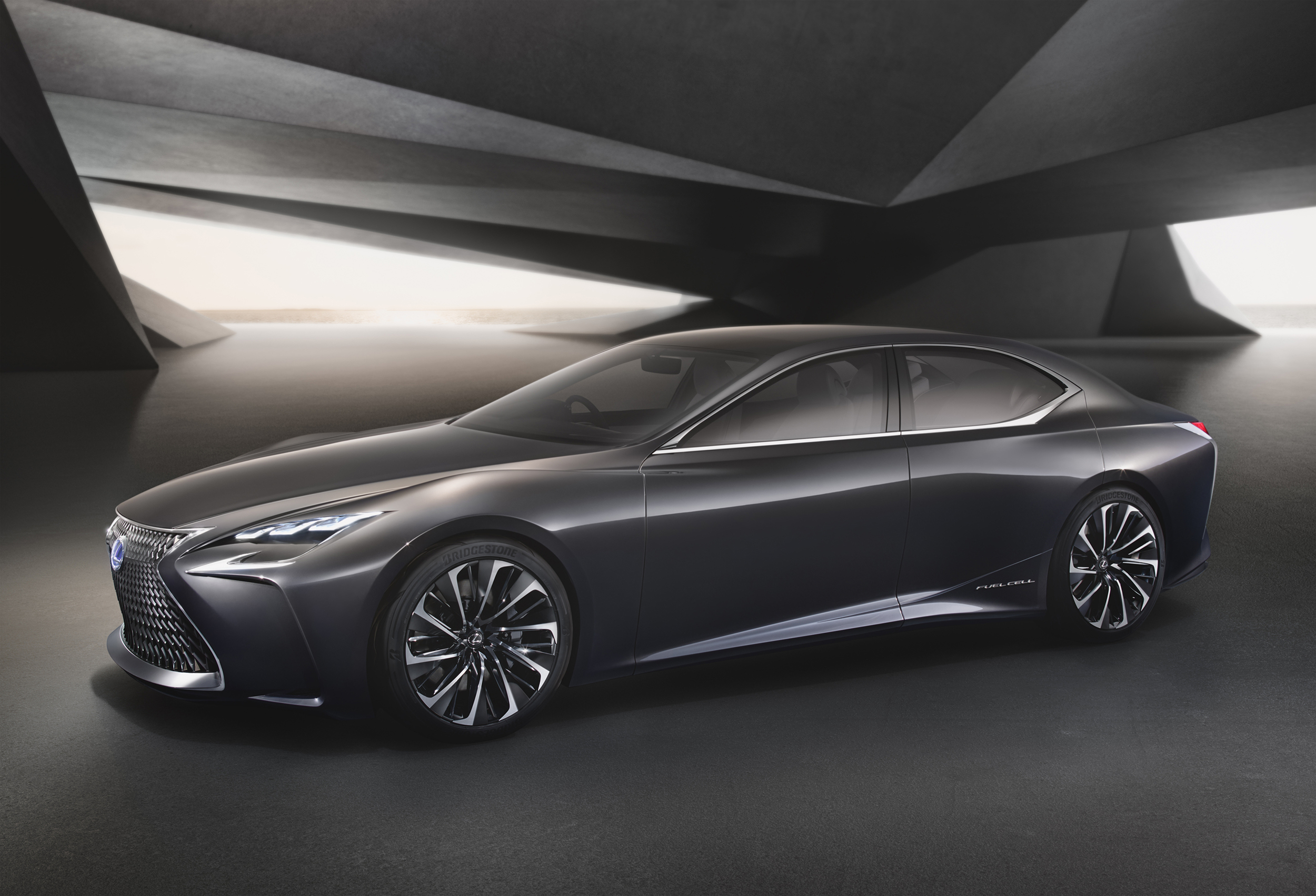
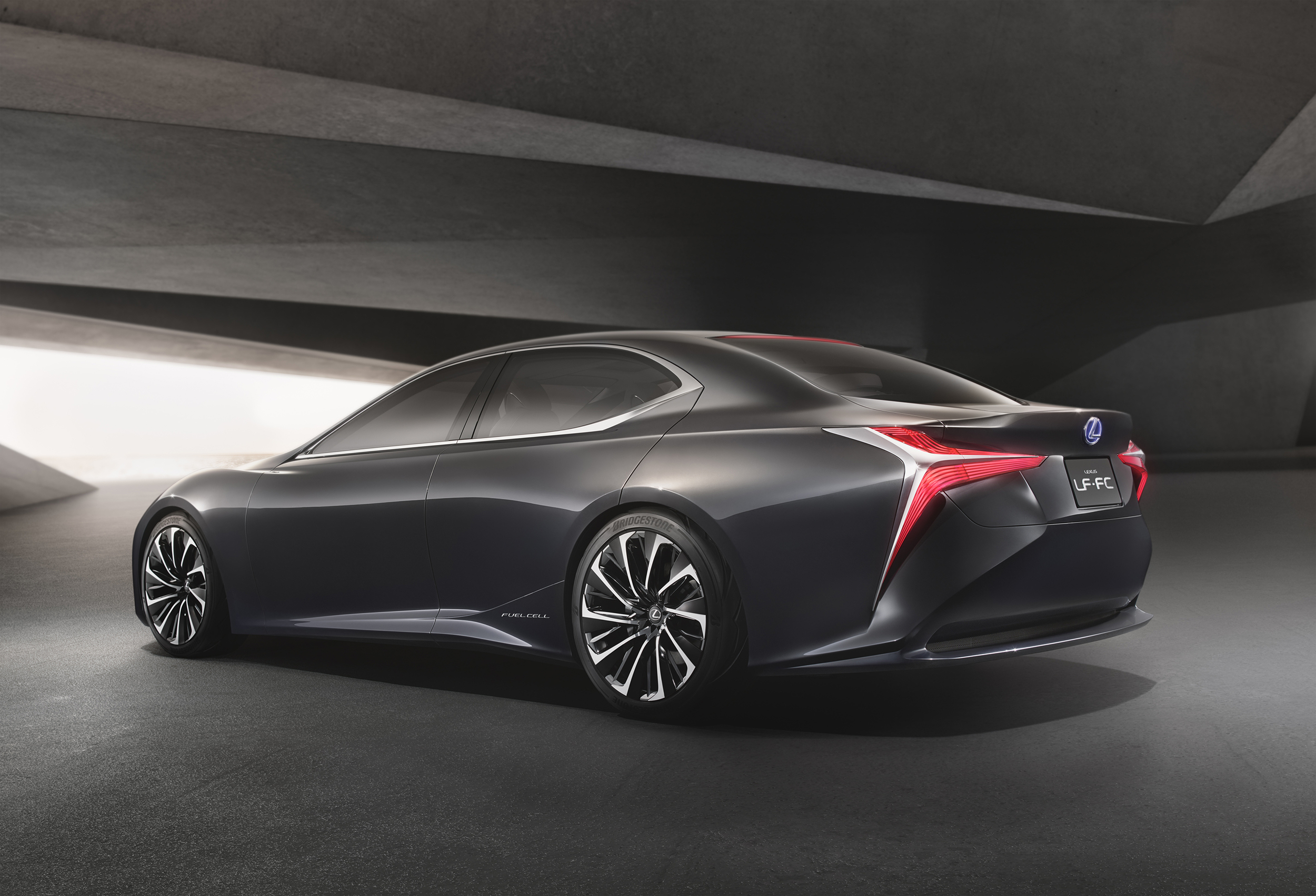

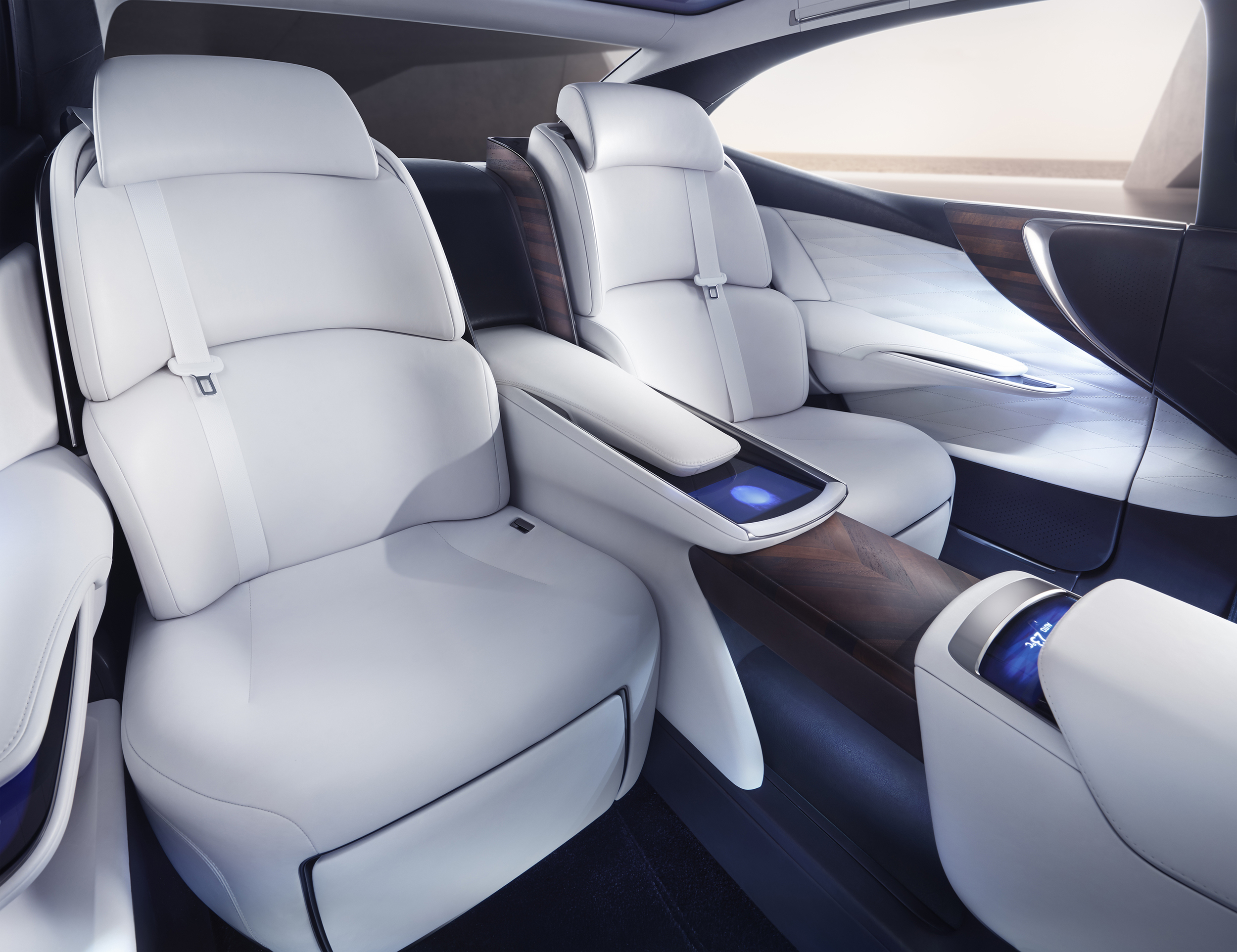

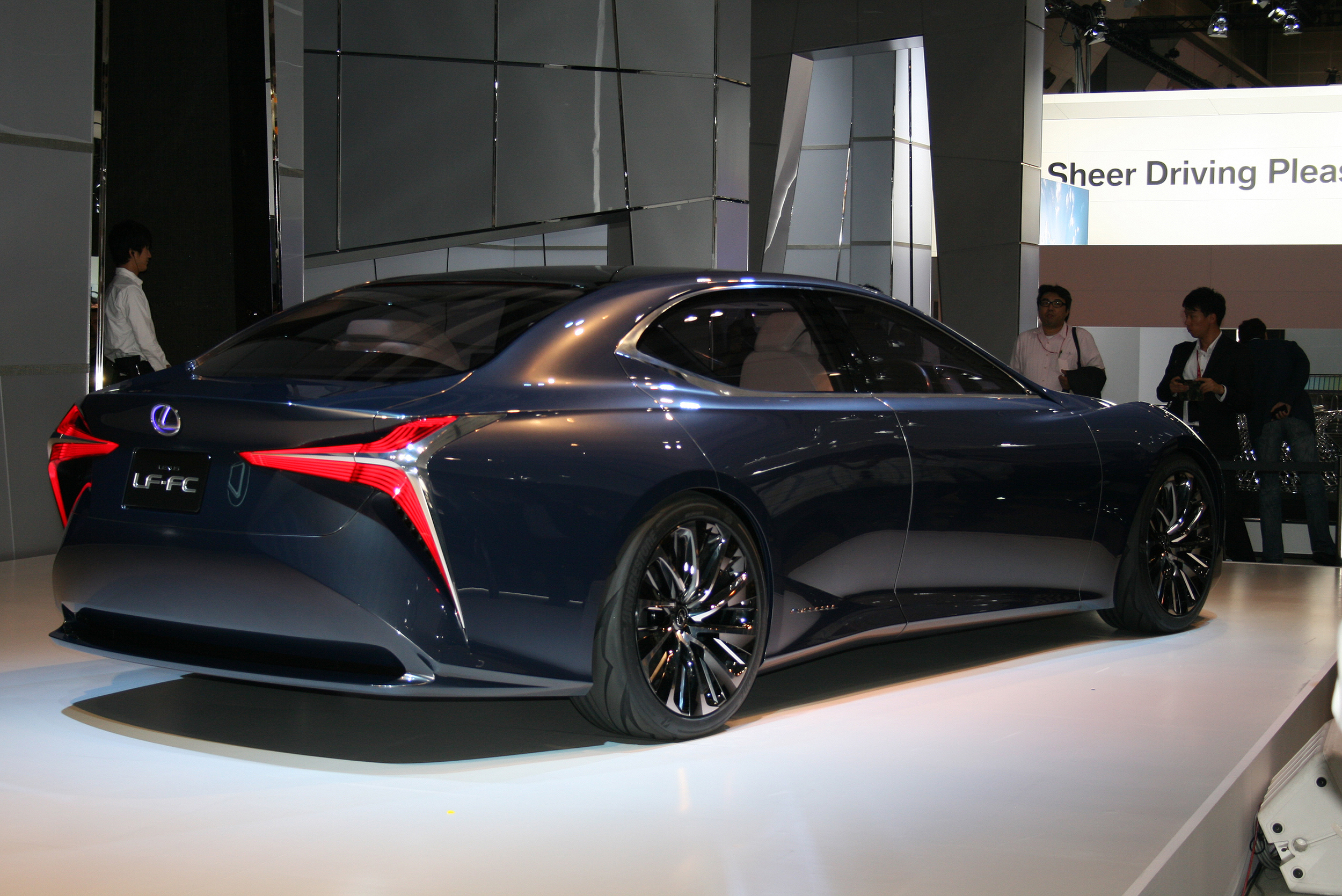


Unveiled at the Tokyo Motor Show, the LF-FC presents a new styling theme that 'embodies Lexus's L-finesse design philosophy' says the Japanese automaker and provides a glimpse into Lexus's design and technology direction for a future flagship saloon.
The front end features an evolution of Lexus's signature grille, with a new mesh design along with L-shaped daytime running lights which 'emerge seamlessly' from the front wings with a floating effect, that is mirrored in the tail-lights. Featuring a flowing roofline in the style of a four-door coupe, the concept runs on 21-inch alloy wheels with carbon fibre reinforced plastic (CFRP) rims adding an 'extra dash of flair'.
A high-output fuel cell power system is at the heart of the LF-FC, which drivers the rear wheels and also sends power to two in-wheel motors at the front for all-wheel drive. This drive system allows precise torque distribution control, giving the vehicle 'exceptional handling and stability'. The location of the fuel cell stack at the rear and the power control unit at the front and the arrangement of the hydrogen fuel tanks in a T-formation result in 'optimum' front-rear weight distribution for a sporty saloon.
On the inside, a spacious interior wraps its occupants in what Lexus calls a comfortable yet futuristic environment. Viewed at eye-level, the front seats appear to be 'floating' says Lexus. The rear seats offering a reclining feature and plenty of head and knee room. High-quality aniline leather on the seats, doors and dashboard enhances the level of luxury in the interior.
The LF-FC features an advanced human/machine interface that can be operated using simple hand gestures, with no need to touch a panel or switch. A small holographic image on the centre console indicates where the system can interpret hand gestures to control the audio system and ventilation. The concept uses automated driving technologies, with an elevated level of traffic environment recognition, prediction and judgement functions to provide a safe and efficient driving experience.
The Tokyo Motor Show runs until 8 November.
Concept Car, Hydrogen Fuel Cell Car, Sports Car, News

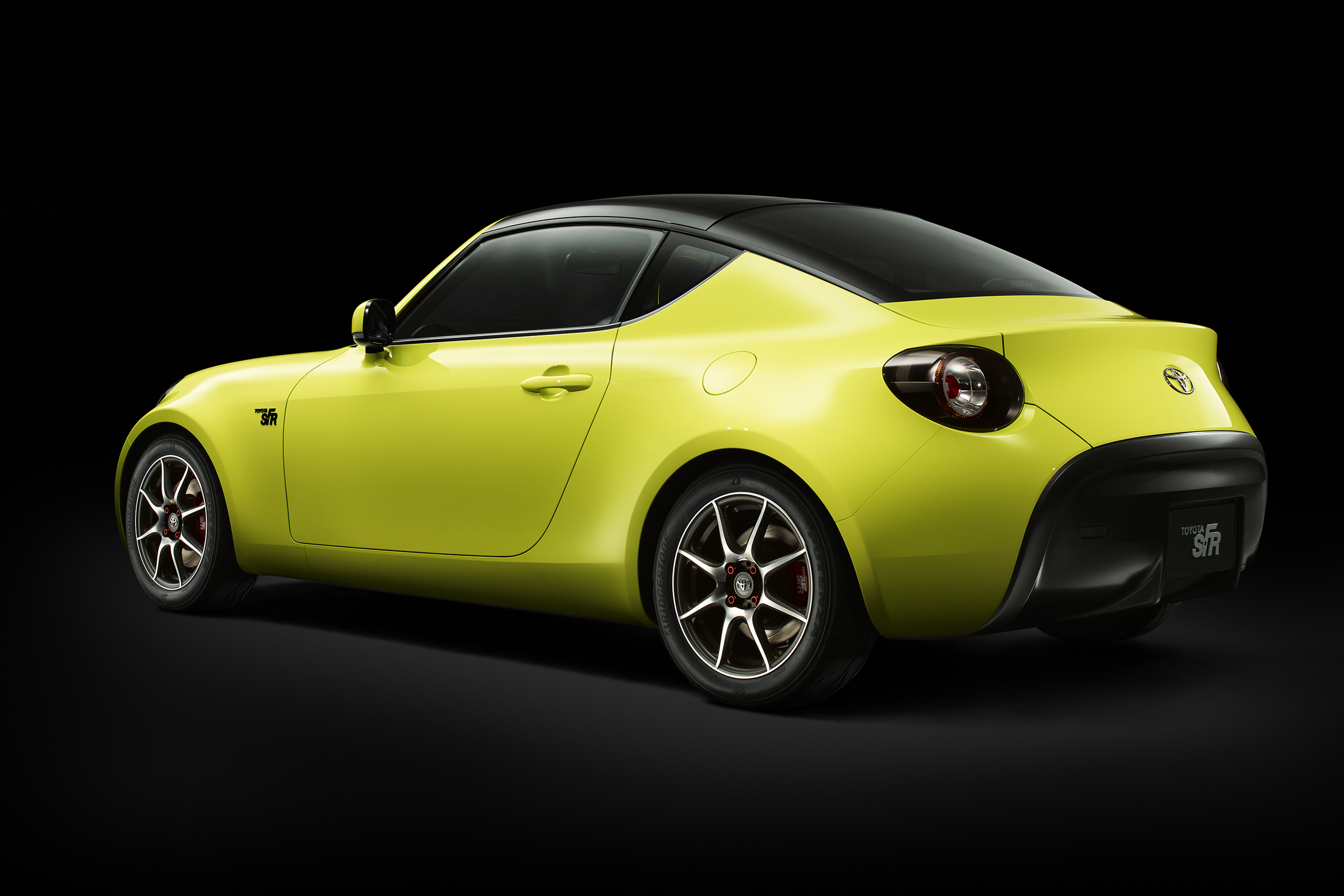
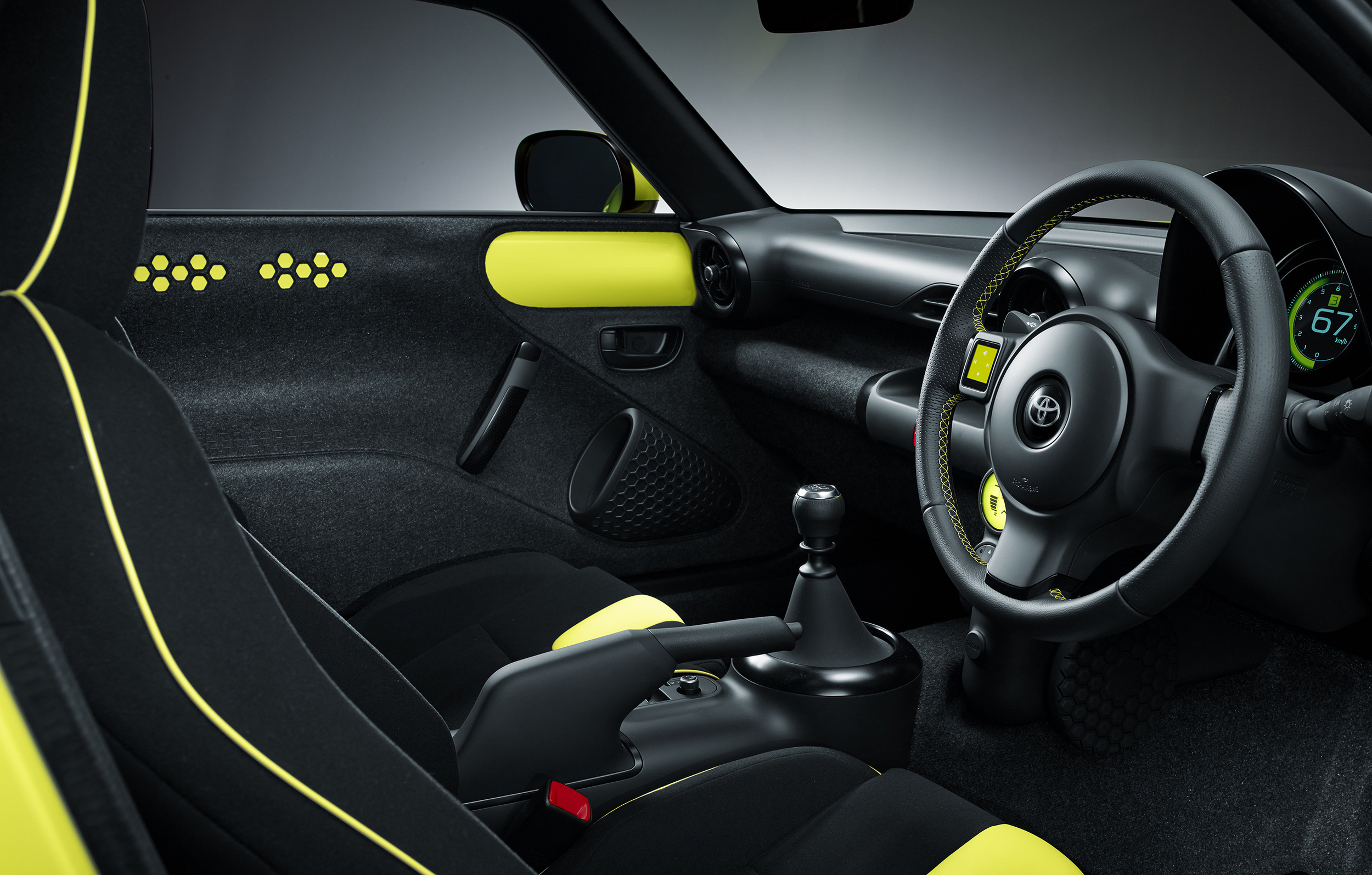
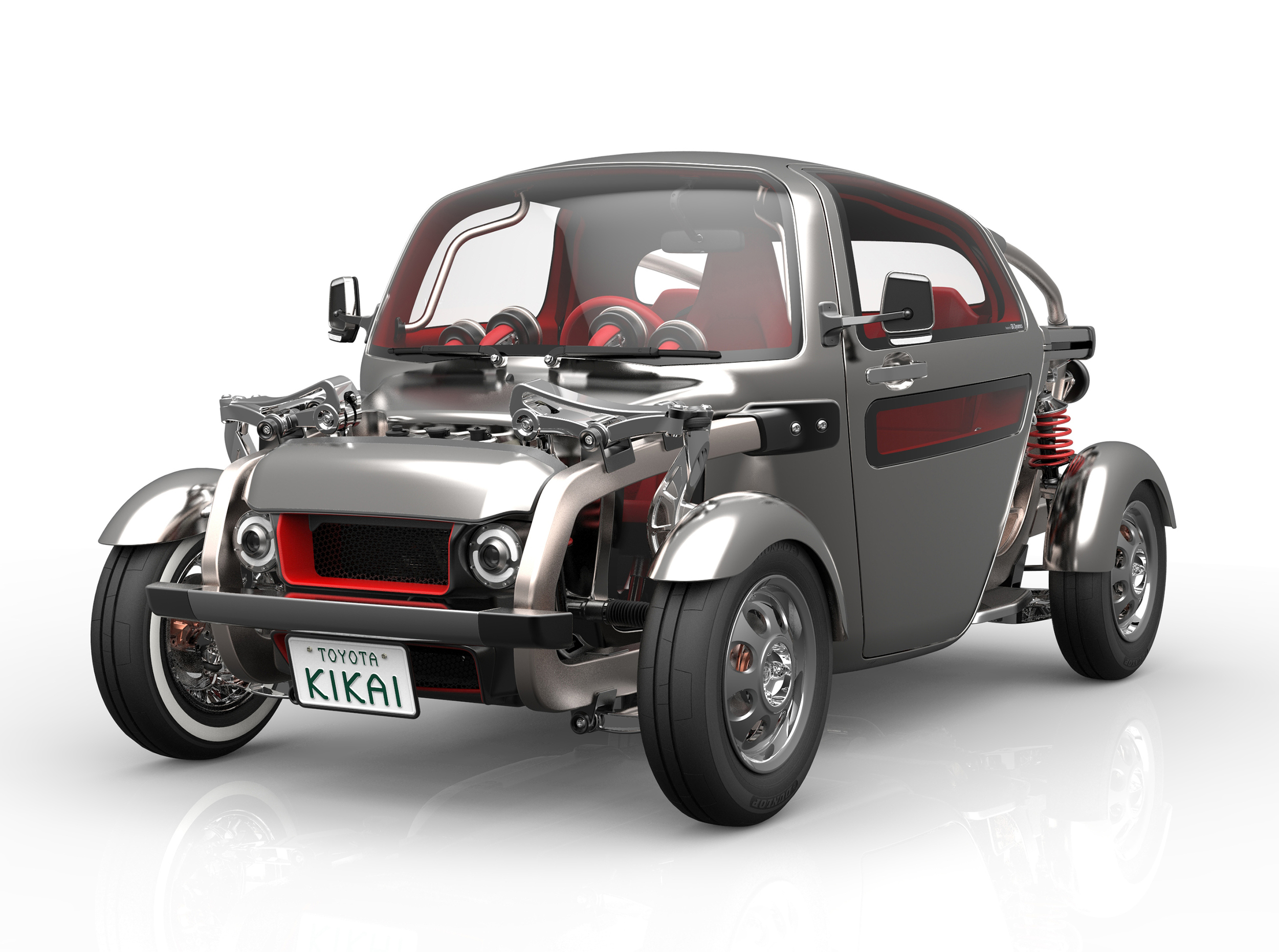
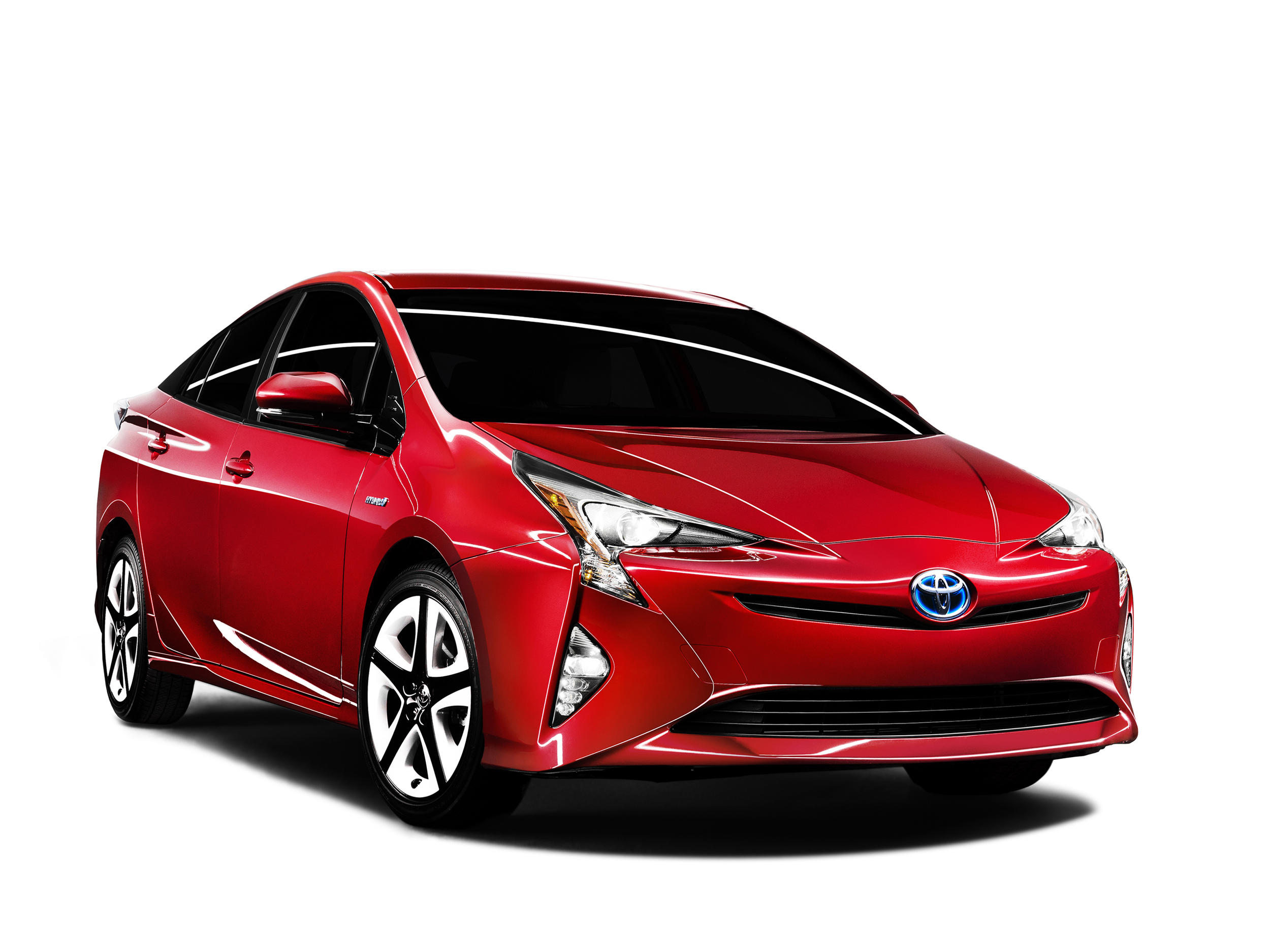
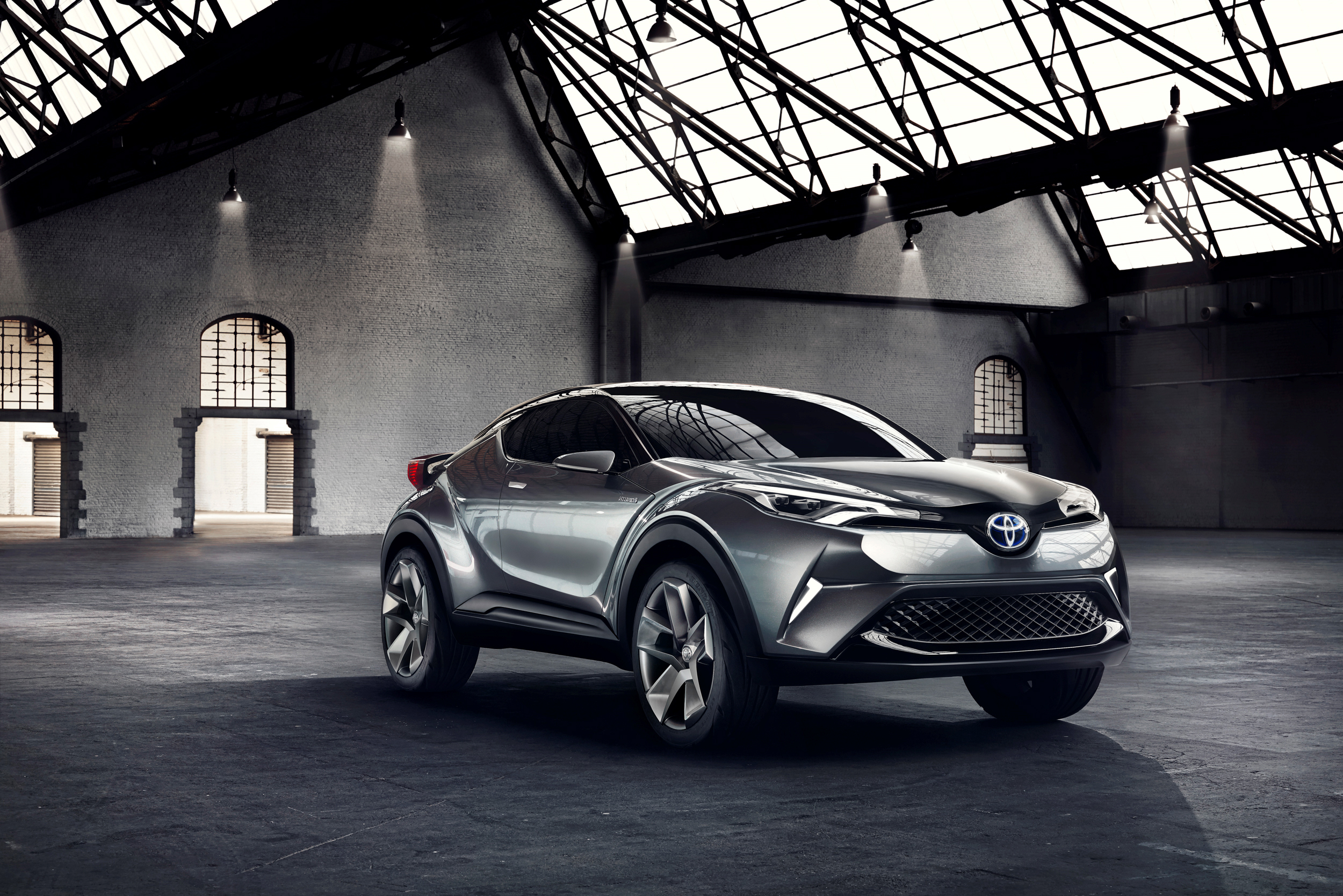
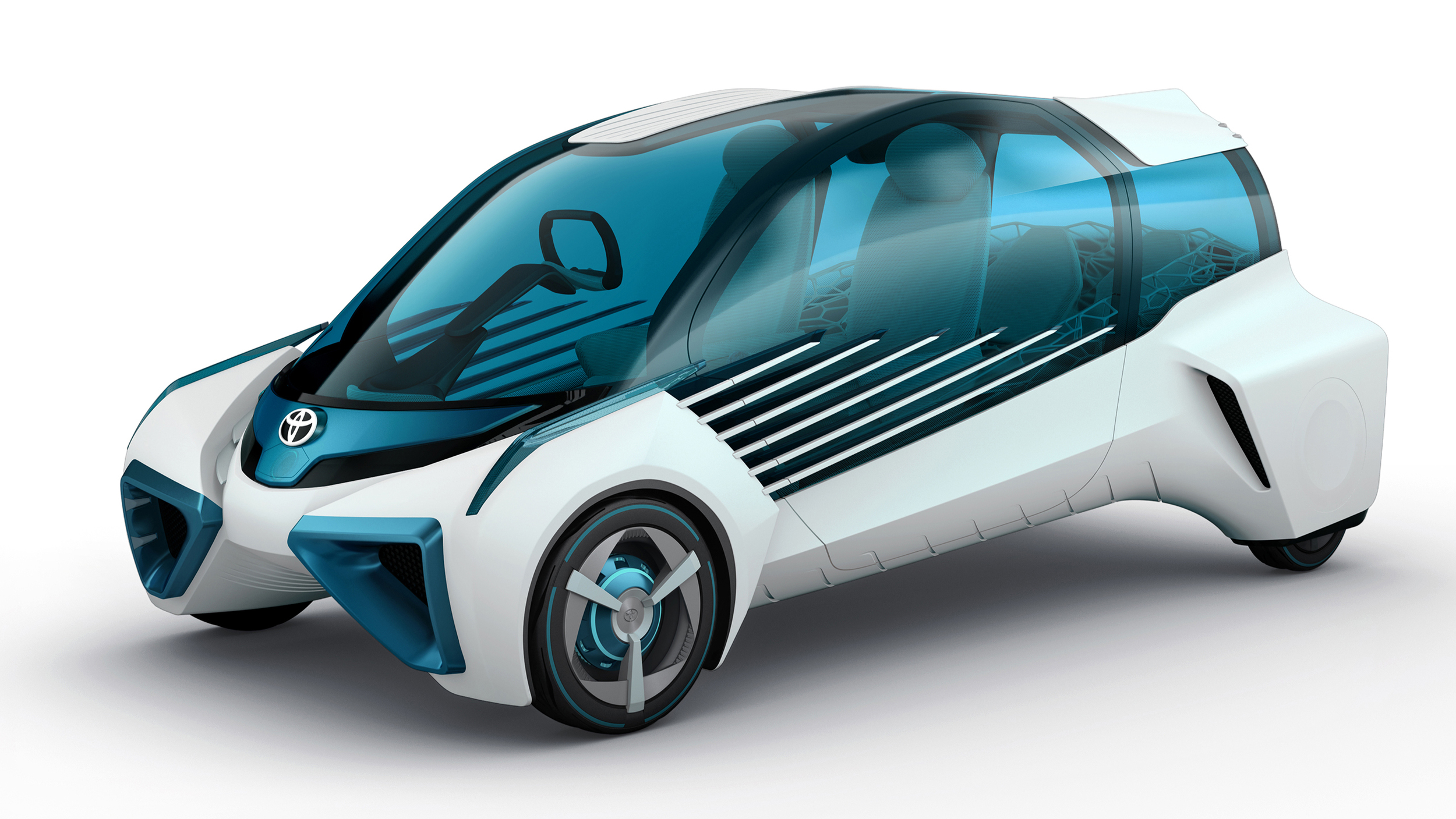
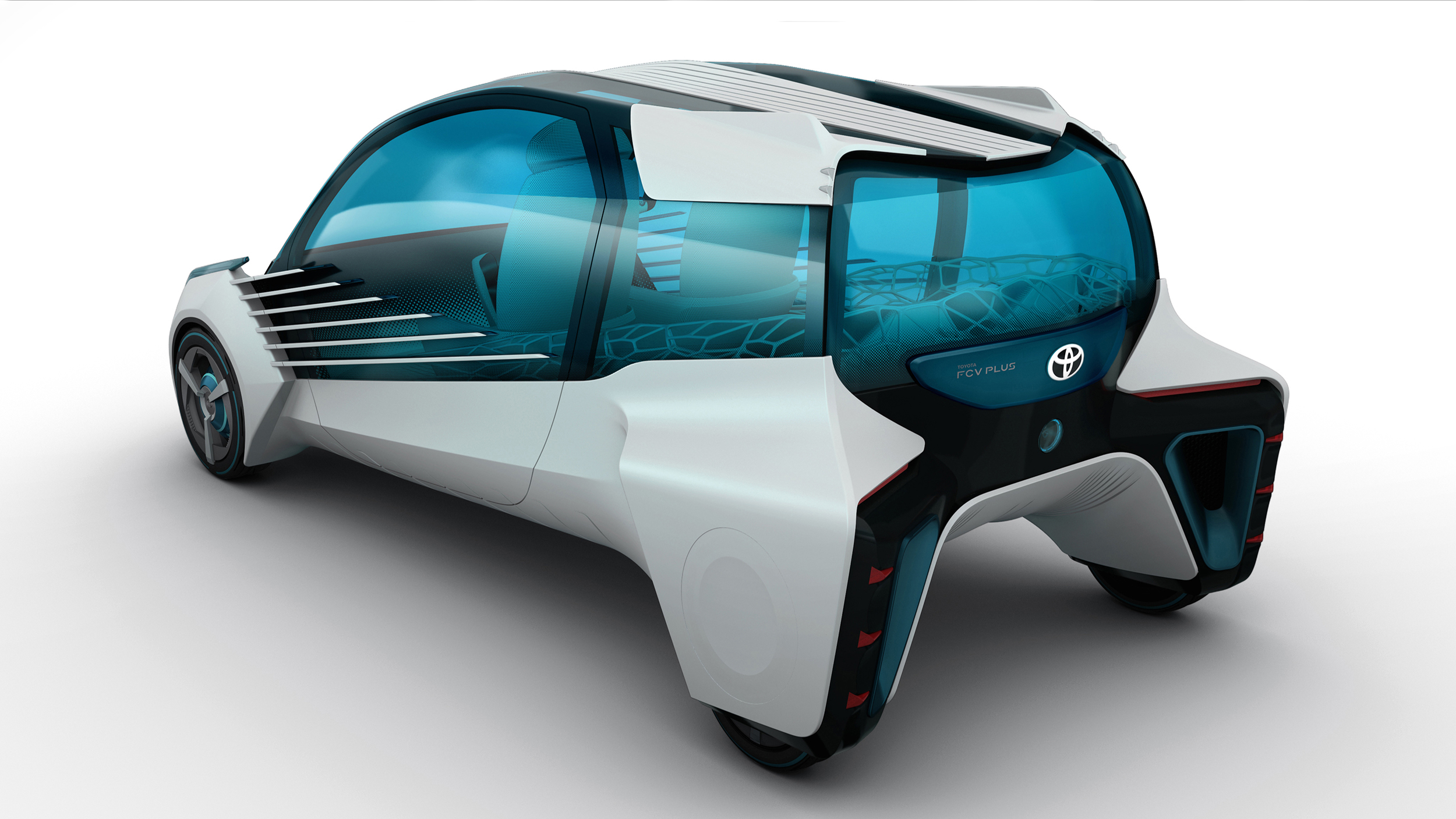
The Japanese brand will give world premieres to three contrasting new concepts, including a lightweight, entry-level rear-wheel drive sports car and a new fuel cell vehicle.
The S-FR concept celebrates Toyota's heritage of lightweight, fun-to-drive sports cars - a line that stretches back from today's GT86 to the 2000GT and S800 of the 1960s. Pitched as an entry-level model, Toyota says its focus is on 'responsiveness and character' with the brand confident it could attract 'its own die-hard fan base of drivers and customisers'. Featuring a long nose and wide stance for a classic sports car profile, the concept also has rounded bodywork adding to the S-FR's appeal.
The S-FR combines simplicity and compact design with an 'exceptionally' lightweight body and a front engine/rear-wheel drive drivetrain which contributes to responsive performance and direct handling. The engine has a front/midship location, says Toyota, with optimal weight distribution and independent suspension securing 'excellent cornering performance'. A six-speed manual transmission supports smooth acceleration.
The FCV Plus concept joins the S-FR and explores how the hydrogen fuel cell, used to power the car, can also be deployed to as an energy source for general use. As well as having its own hydrogen fuel tank, the FCV Plus can generate electricity from hydrogen stored outside the vehicle, so the car can be used to produce power in different locations - at home, at work, or further afield.
Compressed hydrogen has a higher energy density than electricity, can be produced from a wide range of raw materials and is easy to store - all qualities that make it a promising future source of energy. When the car is not being used for transport, it can share its power generation capabilities with communities as part of the local infrastructure. The fuel cell stack can be reused as a device to generate electricity, going beyond the traditional functions of a car.
The fuel cell stack in the FCV Plus is mounted between the front wheels, with the hydrogen tank located behind the rear seat. Together with independent in-wheel motors in all four wheels, this allows for a spacious cabin within a compact vehicle body. Concentrating the functional parts of the car at the front and rear creates an ideal weight balance and gives the driver a wide field of vision, according to Toyota.
The KIKAI concept makes the most of the car's mechanical parts, rather than concealing them from view, the vehicle's inner workings have become part of the exterior in a design concept that breaks with convention. This approach extends to the details such as the fuel tank, exhaust, analogue meters and switchgear. There is even a small window by the driver's feet, giving a view of the tyres, suspension and road surface. The movement of the front suspension's upper control arm can also be seen through the windscreen.
The driver's seat is positioned centrally, putting the driver at the heart of the action. A triangular arrangement of the three passenger seats and an expansive side window that extends up to the roofline help create a congenial cabin environment.
The new, fourth generation Prius will also will be making its Japanese debut at the Tokyo motor show, together with the C-HR Concept - recently unveiled in Frankfurt - that previews a new production compact hybrid crossover that Toyota will unveil next year.
The Tokyo Motor Show runs from 30 October to 8 November 2015.
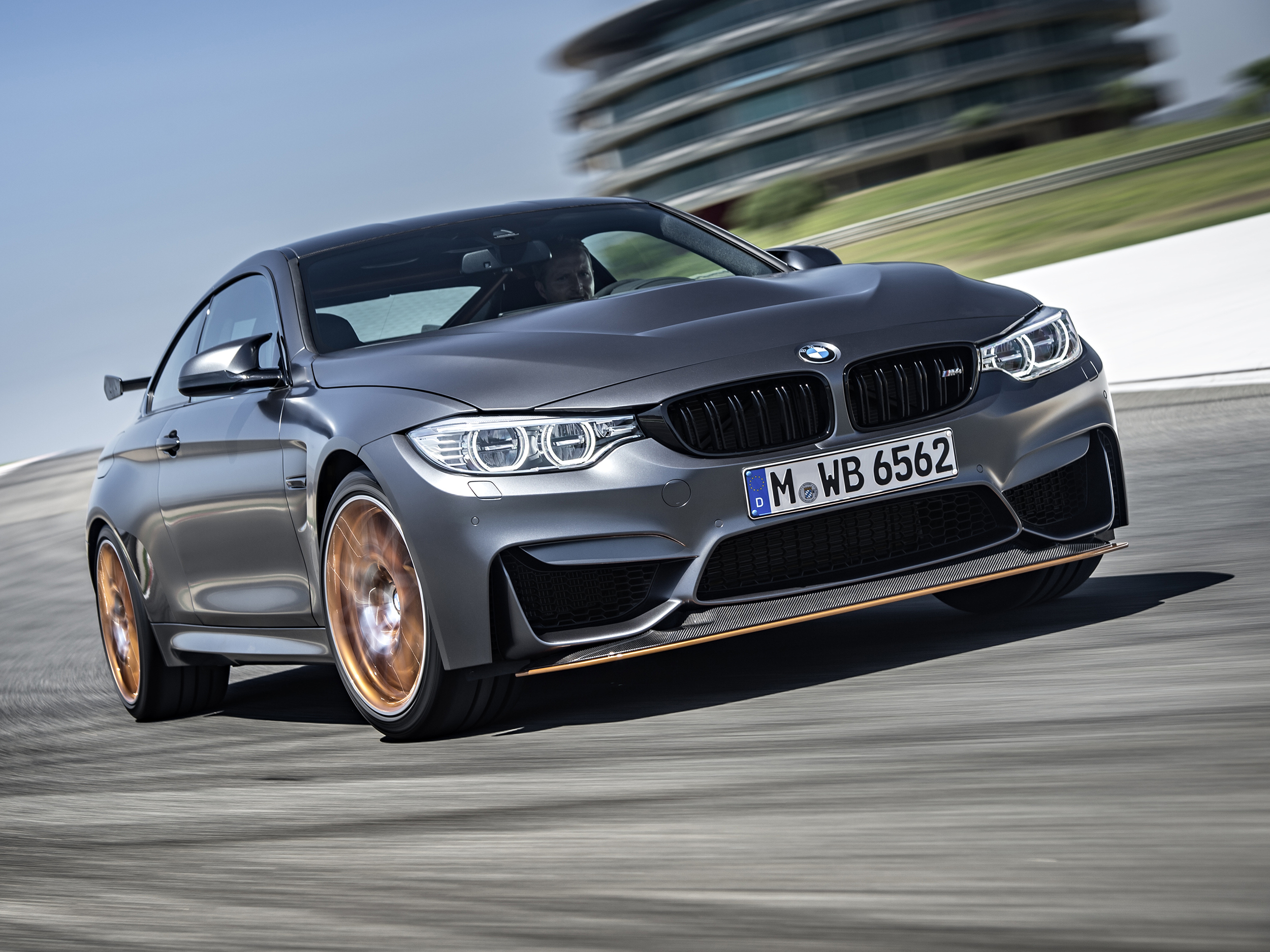
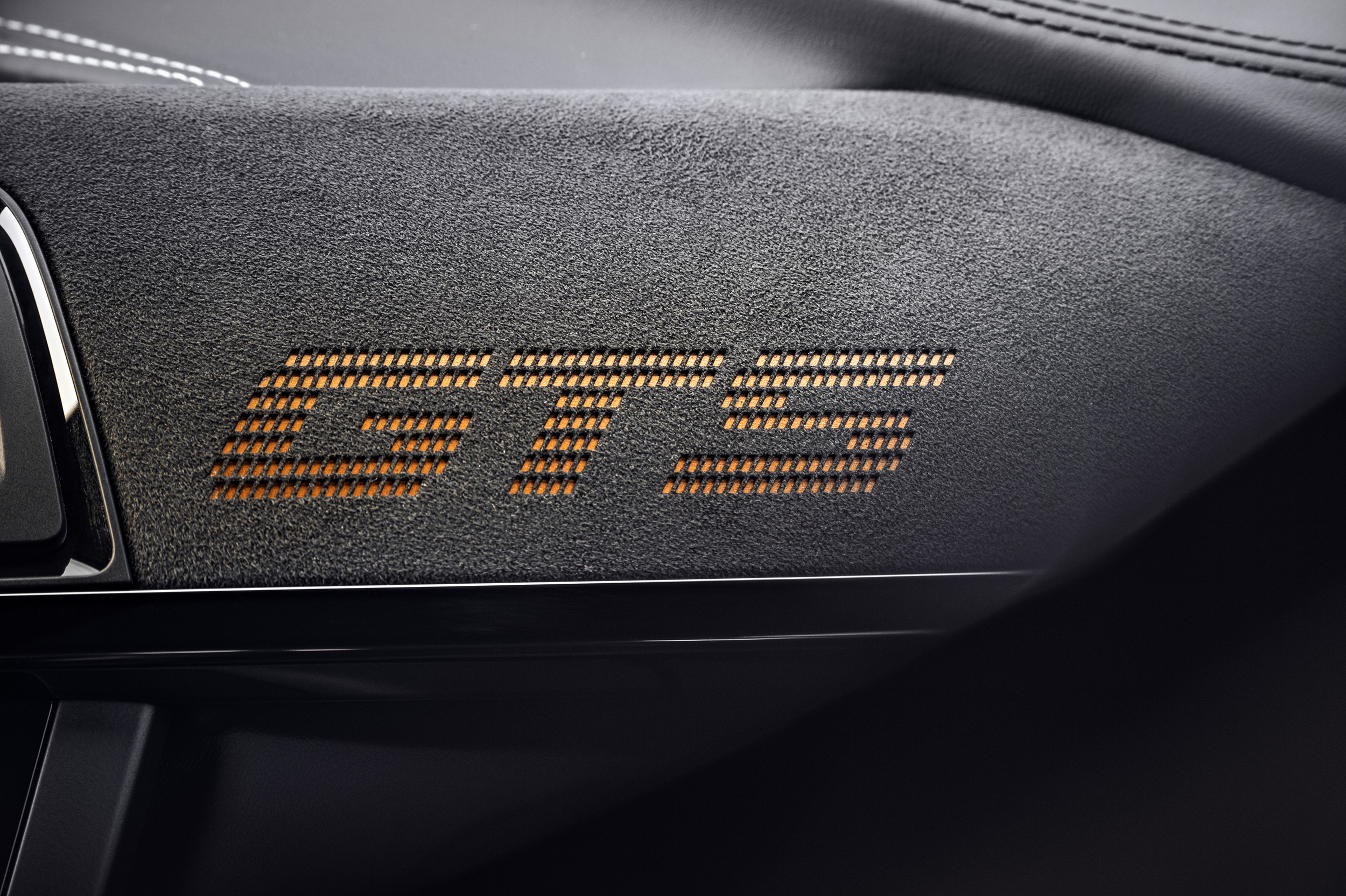

Limited to a production run of 700 cars, with only 30 coming to the UK, these M-badged cars deliver what BMW describe as 'the ultimate in sports-oriented design, power with efficiency and precise driving dynamics'. The M4 GTS is focused on track use, but meets all global regulations for use on public roads.
The fastest production road car the brand has ever offered to customers was developed and tested extensively at the Nurburgring, where it recorded a lap time of 7mins 28 secs - almost 30 seconds quicker than a standard M4. Engineered to provide an authentic motorsport-derived driving experience, agile and potent, BMW also says it offers precision handling and 'unprecedented levels' of feedback.
The German brand has added unique exterior design elements to 'demonstrate the performance credentials' of the car, which includes the world premiere of BMW's Organic Light with LED (OLED) lighting technology on a series-production model. Inside, the rear bench has been completely removed to save weight, leaving two front carbon-fibre sports seats.
Under the bonnet is an enhanced version of the 3.0-litre six-cylinder twin-turbo petrol engine, tuned to deliver 500hp. The result is a car which accelerates from 0 to 62mph in 3.8 seconds, and has a top speed limited to 190mph, while returning up to 34mpg on the combined cycle. With its lightweight design, the new BMW M4 GTS has a kerb weight of only 1,510kg.
The UK sales of 30 units equates to four per cent of the total, making Britain the fourth-largest market.
The M4 GTS will make its world debut at the Tokyo Motor Show on 28 October before production begins in March 2016, with launch scheduled for June 2016.
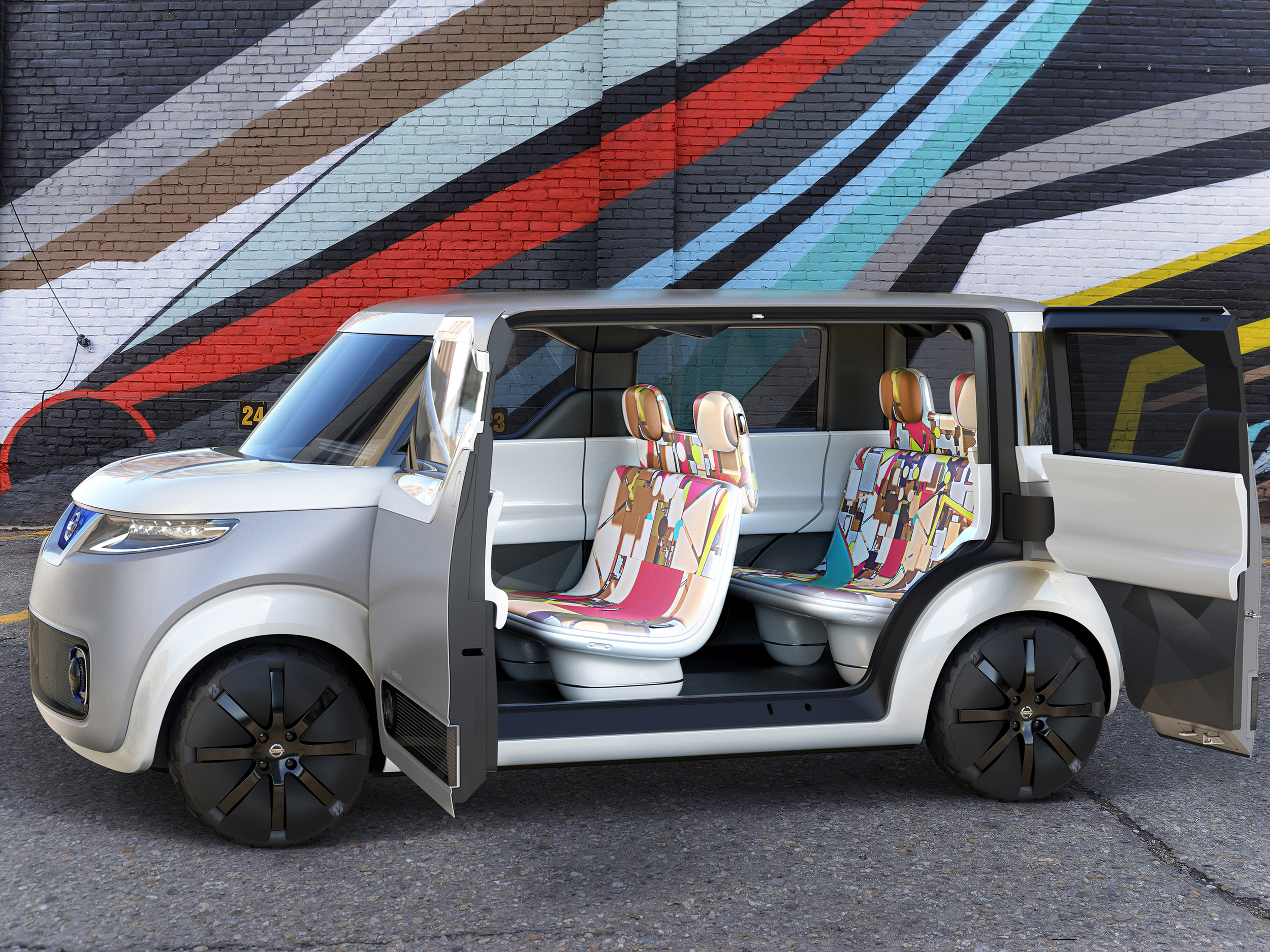
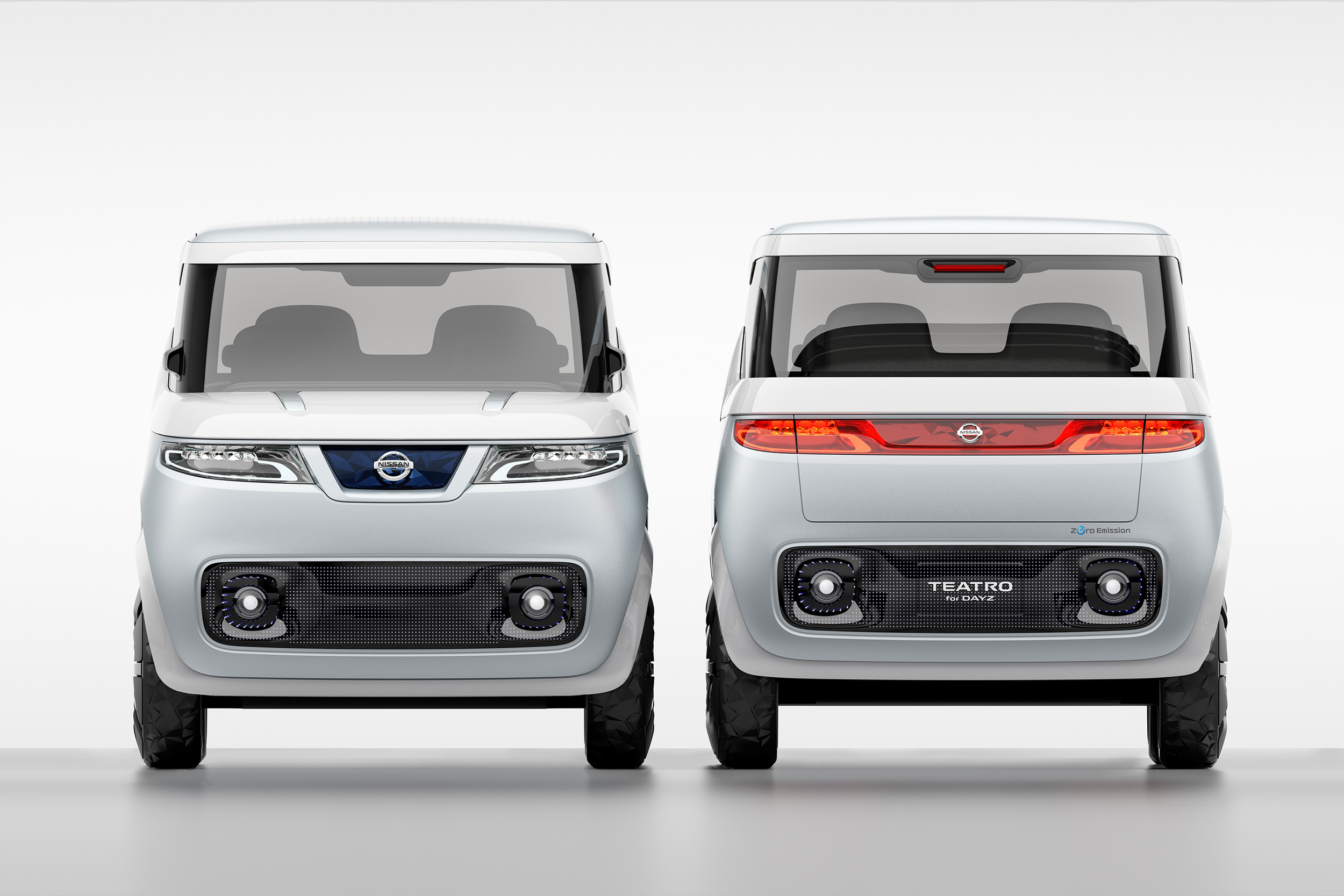
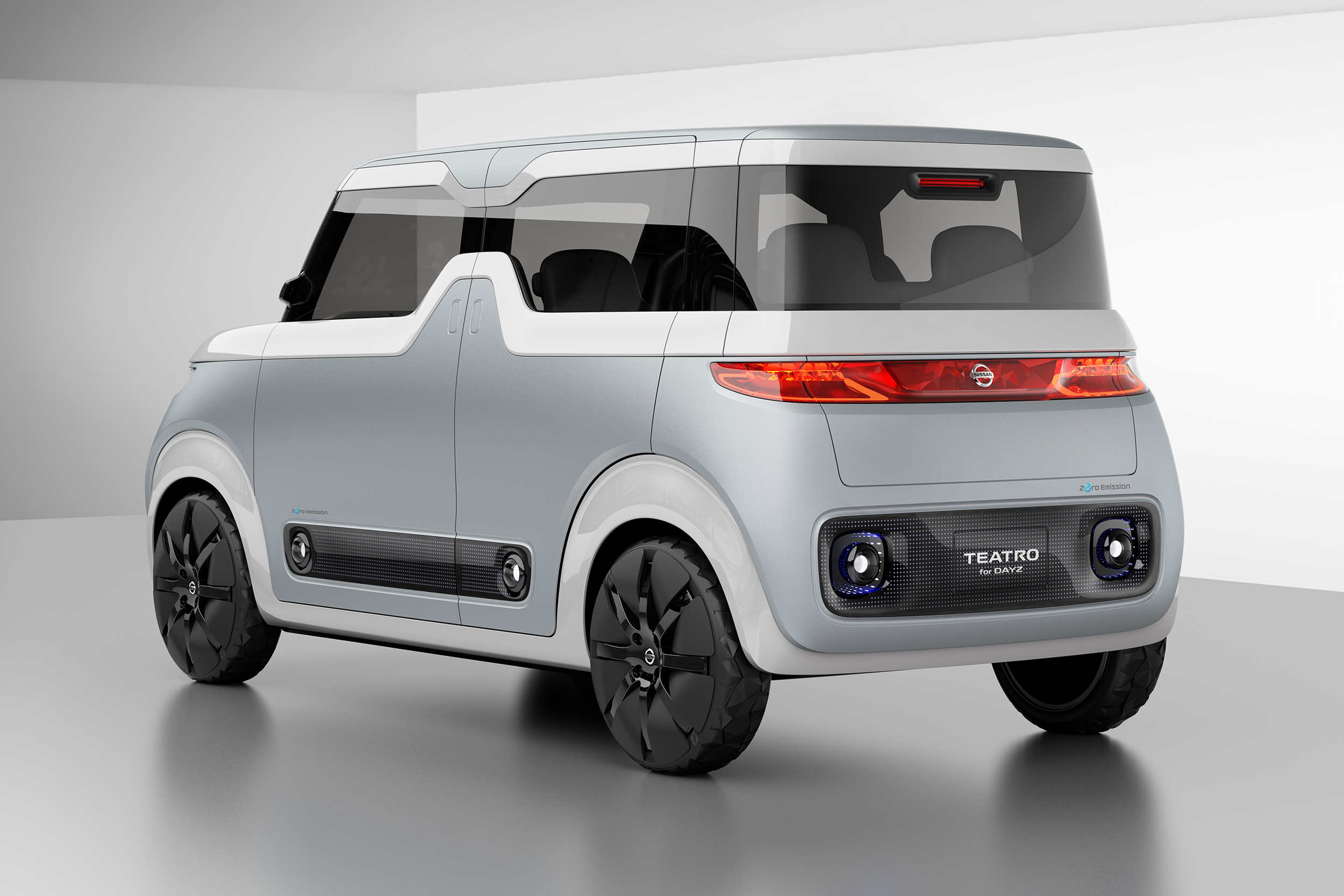
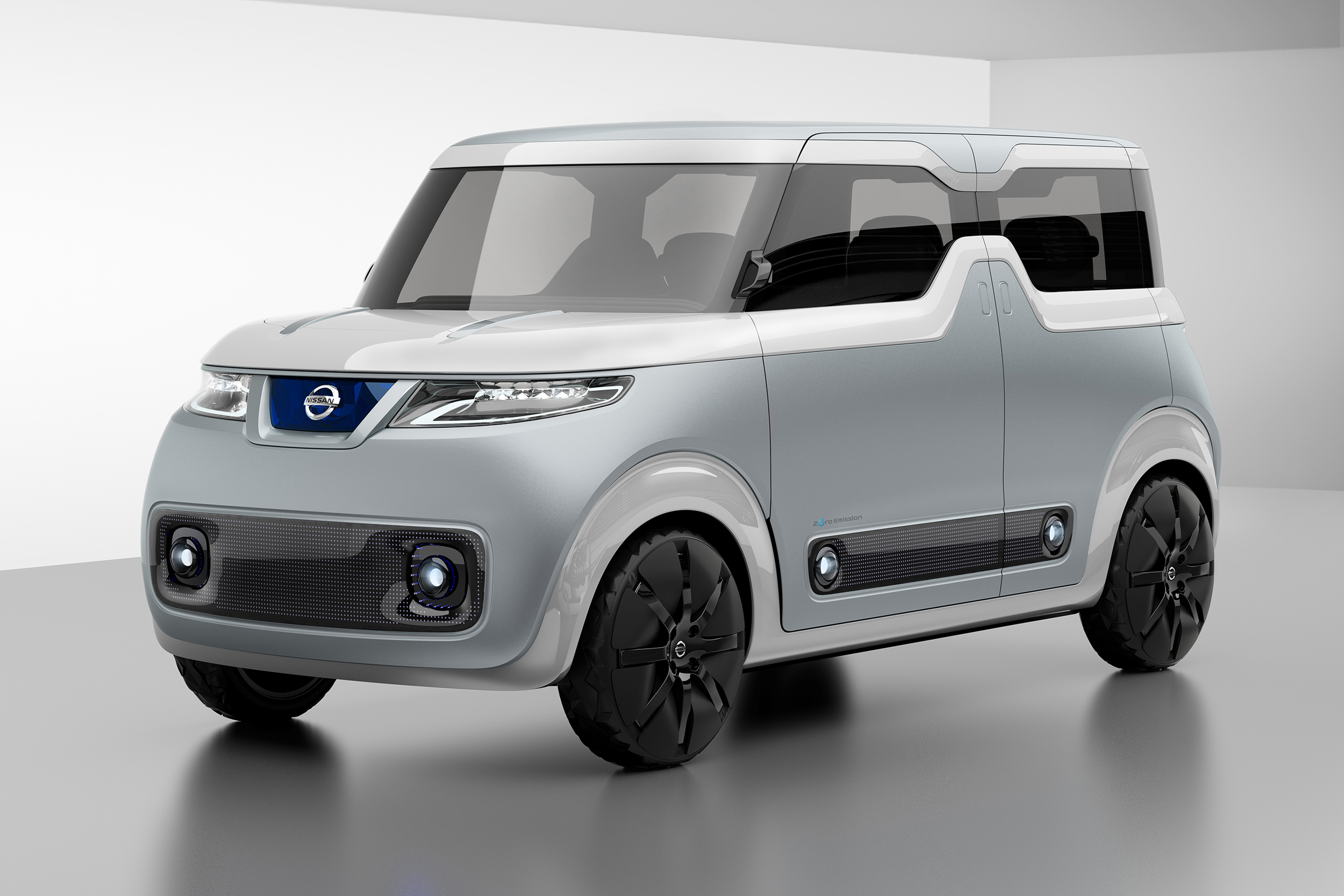

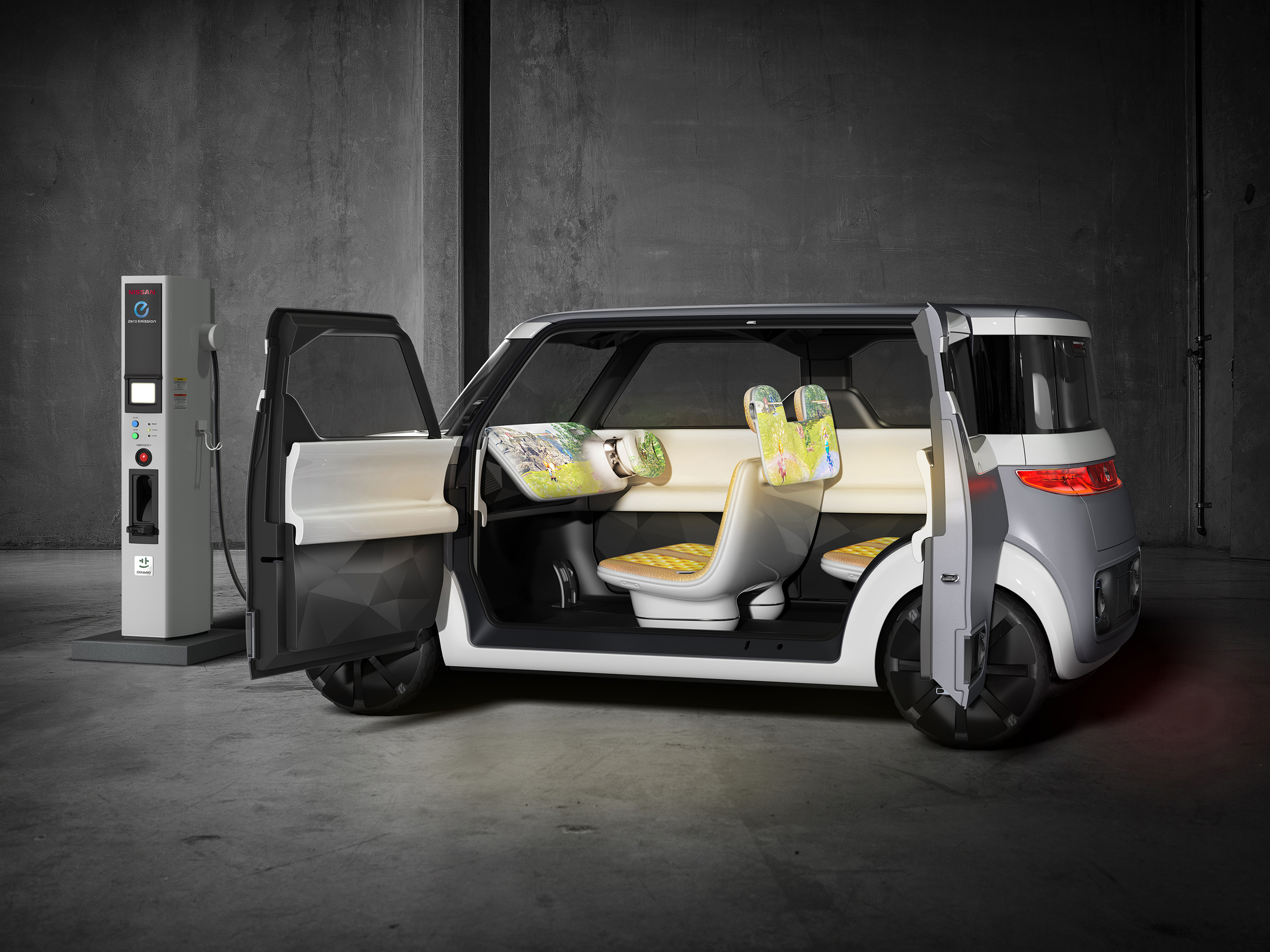
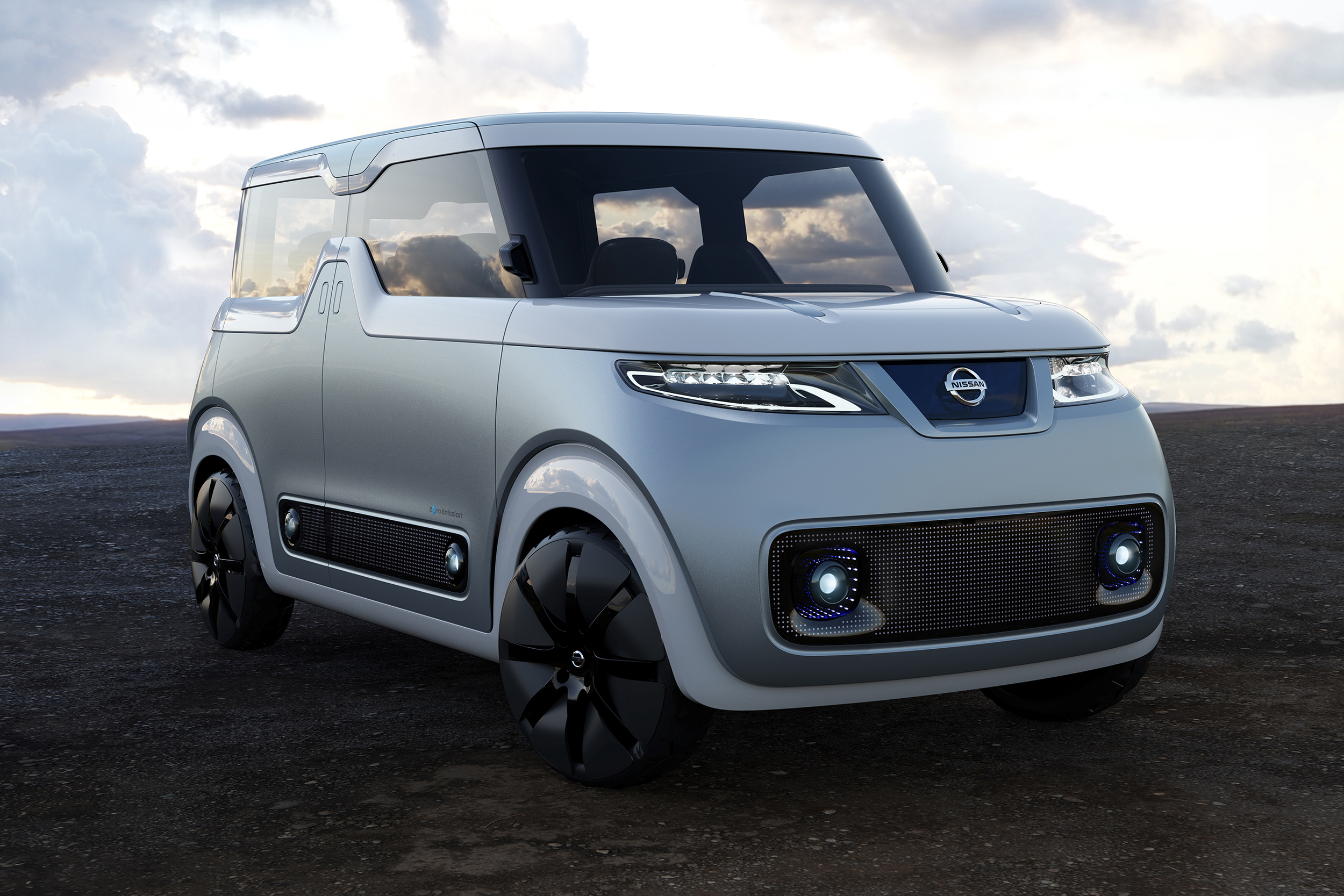

The innovative concept signals a new direction in mobile technology according to Nissan. Designed especially for the 'digital native generation', this vision of near-future vehicles 'departs from convention and marks a shift in perception'.
Nissan describes the target group as 'share natives' due to the nature of sharing on social media. The Teatro for Dayz is a combination of mobile technologies unlike any previously imagined in a car. Nissan's research indicated that minicars will be the vehicle of choice for share natives. "In addition to being compact, minicars remind them of the handy mobile devices they carry in their pockets," says Product Planning General Manager Hidemi Sasaki. Electric Vehicle (EV) technology is a must for this generation. "Share natives are already accustomed to recharging their devices at home, so EVs fit their lifestyles far better than cars that require regular visits to a gas station." With a driving range ample for short commutes, the concept can serve as a giant mobile battery, which can be used anywhere to recharge mobile devices.
Sasaki says that Nissan has identified some common car interests among share natives. "First, they tend to look beyond the car's basic role of transportation. They want a car to be a versatile tool for creativity like a smartphone. This is different from customising a car. It is more like the ability to modify a car to meet their mood at that moment. Share natives will use cars in ways we would never imagine. So we thought from the perspective of designing a car that would serve as a canvas for their inspiration."
From concept to interior and exterior design, the Teatro for Dayz is described as a simple, clean canvas. When the car is in drive mode, meters, controls and maps appear on a pure white instrument panel. As information illuminates on the white instrument panel, the driver can freely adjust the size and position of the meters, gauges and car navigation information on the instrument screen. Unnecessary information can be hidden.
When parked, the concept transforms into an entirely new device. The whole interior, starting with the instrument panel, becomes a live display for a generation wired for connectivity. The interior's design can be changed to match the look to the season, as can the exterior. Externally it is fitted with LED screens that enable further self-expression, with any experience in or around the car able to be shared instantly via an onboard camera. The solid white interior suggests infinite possibilities for display, as technology evolves and share natives contribute ideas through feedback, the variety of ways the interior could serve as a 'digital native theatre' will expand, says Nissan.
The Tokyo Motor Show opens to the public on October 30 to November 8.